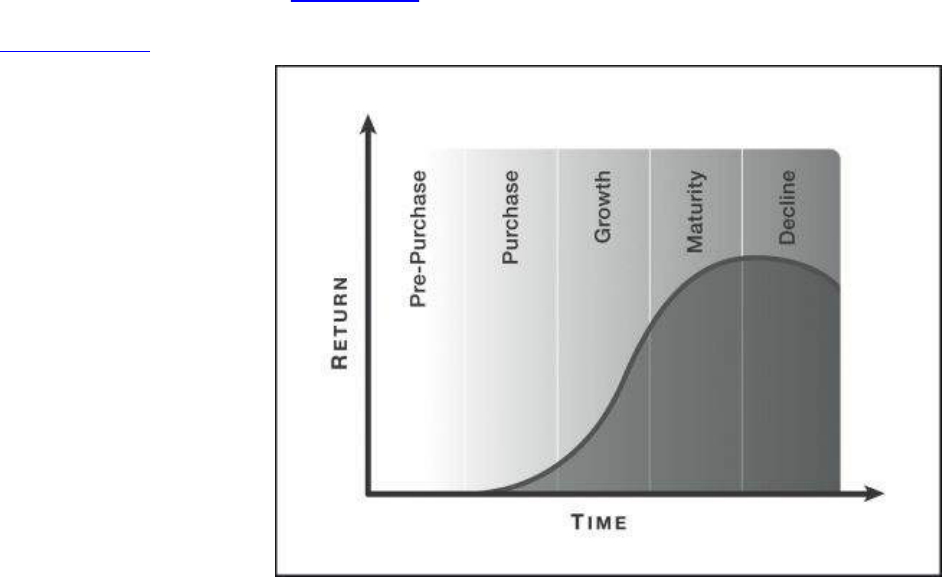From 0 to 130 Properties in 3.5 Years


Table of Contents
Cover
WHAT’S NEW IN THIS EDITION
Readers’ comments
Title page
Copyright page
Acknowledgements
Epigraph
Preface
G’DAY!
MY ORIGINAL MASTER PLAN FOR FINANCIAL FREEDOM
Part I: The Steve McKnight story
1 Humble beginnings
DANGEROUS ASSUMPTIONS
MY WAKE-UP CALL
THE ‘ALL-HYPE, NO-SUBSTANCE’ SEMINAR
A NEW DIRECTION
2 Making a start
FINDING THE NEEDLE IN A HAYSTACK
IT’S ALL ABOUT APPLICATION
3 Ramping it up
A CHANCE MEETING WITH A FRIENDLY CANADIAN
TURNING AN IDEA INTO AN INVESTING SYSTEM
AN URGENT SHIFT IN FOCUS
NEW ZEALAND — HERE WE COME

MULTIPLICATION BY DIVISION
THE CURRENT ENVIRONMENT
HOW TO CREATE A MULTI-PROPERTY PORTFOLIO TODAY
4 Achieving financial freedom
WILL YOU BE HAPPIER?
A DAY IN THE LIFE OF STEVE
DAVE AND STEVE PART WAYS
WHAT’S NEXT FOR STEVE?
Part II: Property investing home truths
5 The truth about creating wealth
THE SECRET TO BECOMING RICH
LIVING BEYOND HER MEANS
SOLVING YOUR MONEY PROBLEM
I’VE NEVER BEEN MORE ADAMANT!
6 The truth about property investing
WHY INVEST IN PROPERTY?
DECISION TIME
PASSIVE INCOME AND PROPERTY INVESTING
WHICH IS BETTER, CAPITAL GAINS OR POSITIVE CASHFLOW RETURNS?
MEET CRACKERS
7 The truth about negative gearing
WHY IS NEGATIVE GEARING SO POPULAR?
PROPERTY AND TAXATION
CAN YOU RELY ON CAPITAL GAINS?
DO PROPERTY PRICES REALLY DOUBLE EVERY SEVEN YEARS?
FALLING TAX RATES
INFLATION
CAPITAL GAINS TAX
THE BOTTOM LINE ON NEGATIVE GEARING
8 The truth about financing
WHAT IS LEVERAGE?

GETTING A LOAN
LEARN THE INDUSTRY
OBTAIN PRE-APPROVAL
SUSTAINABLE INVESTING
LOAN APPLICATION CHECKLIST
9 The truth about structuring
LIFESTYLE AND FINANCIAL ASSETS
WHAT IS STRUCTURING?
WHAT ENTITY SHOULD YOU BUY IN?
WHY YOU SHOULDN’T BUY PROPERTY IN YOUR OWN NAME
THE STRUCTURE STEVE USES
WANT MORE INFORMATION?
10 The truth about depreciation
WHAT IS DEPRECIATION?
DOES REAL ESTATE DEPRECIATE?
TAX AND DEPRECIATION
TURNING NEGATIVE CASHFLOW INTO POSITIVE CASHFLOW
TAX DEFERRAL, NOT TAX SAVING
FINAL THOUGHTS ON DEPRECIATION
11 The truth about selling
PROPERTY LIFECYCLE
FAST-TRACKING USING COMPOUNDING RETURNS
REASONS WHY YOU WOULDN’T SELL
REASONS WHY YOU WOULD SELL
CAN’T BORROW ANY MORE MONEY?
Part III: Strategies for making money in property
12 Buy and hold (rentals)
TYPES OF BUY AND HOLD PROPERTIES
HOW YOU CAN MAKE A PROFIT
CREATING POSITIVE CASHFLOW PROPERTIES
IDENTIFYING THE REAL ASSET
PARTNERS IN WEALTH (THE STEVE MCKNIGHT APPROACH TO
LANDLORDING)

SOLUTIONS
13 Vendor’s finance sales
WHAT IS A VENDOR’S FINANCE SALE?
THE FOUR PHASES OF A VENDOR’S FINANCE TRANSACTION
THE HUMAN NATURE OF A VENDOR’S FINANCE SALE
VENDOR FINANCING IN TODAY’S PROPERTY MARKET
THE CRITICAL SUCCESS FACTORS IN A VENDOR’S FINANCE SALE
THE ARGUMENTS FOR VENDOR’S FINANCE
THE ARGUMENTS AGAINST VENDOR’S FINANCE
THE FINAL WORD ON VENDOR’S FINANCE SALES
14 Lease options
MY ‘HOMESTARTER’ APPROACH
THE MORE FORMAL LEASE OPTION MODEL
A CONTRIBUTION BY LEASE OPTION EXPERT TONY BARTON
THE DIFFERENCE BETWEEN A VENDOR’S FINANCE SALE AND A LEASE
OPTION
CRITICAL SUCCESS FACTORS IN A LEASE OPTION
KNOW THE LAWS!
WHO WOULD BE INTERESTED IN A LEASE OPTION?
LEASE OPTIONING IN TODAY’S PROPERTY MARKET
SANDWICH LEASE OPTIONS
THE FINAL WORD ON LEASE OPTIONS
15 Simultaneous settlements
WHAT IS A SIMULTANEOUS SETTLEMENT?
CRITICAL SUCCESS FACTORS IN A SIMULTANEOUS SETTLEMENT
TRANSACTION
THE FINAL WORD ON SIMULTANEOUS SETTLEMENTS
16 Subdivisions
A SUBDIVISION DEAL
THE ART OF SUBDIVIDING
17 Renovations
MY FIRST RENO DEAL
THE RENO FORMULA FOR SUCCESS

ARE YOU AN INVESTOR OR A RENOVATOR?
18 Developing
NAIVE THINKING
THE 6 Ps OF PROPERTY DEVELOPING
CRUNCHING THE NUMBERS
SMALL DEAL: $77 000 PROFIT IN 12 MONTHS
NINE TIPS FOR FIRST-TIME DEVELOPERS
Part IV: Your next purchase
19 Planning for success
THE PATH OF LEAST RESISTANCE
YOUR PERSONAL WEALTH-CREATION PLAN AND PATH OF LEAST
RESISTANCE
MAKING THE NECESSARY SACRIFICE
HOW LONG WILL IT TAKE?
THE PLATEAU EFFECT
THE NEXT STEP
20 The Asset Zoo
THE CHICKEN OR THE NEST EGG?
THE ASSET ZOO
MIXING UP THE ANIMALS
THE FINAL WORD ON THE ASSET ZOO
21 Finding the money to begin investing
YOUR SAVINGS
YOUR EQUITY
THE MONEY RAISED FROM A PUBLIC OR PRIVATE FINANCIER
HOW MUCH MONEY DO I NEED TO GET STARTED?
HOW TO BUY PROPERTY WITH LITTLE OR NO MONEY DOWN
22 Where, what and how to buy
LOCATION . . . BAH HUMBUG!
BECOME AN AREA EXPERT
MY SIX-STEP PROCESS

A WORD ABOUT DEPOSITS
Part V: Real deals, real people
23 Peter and Jackie from Tassie
PETE AND JACKIE’S DEAL
24 Sue from South Australia
A BIG, SCARY DECISION
SUE’S DEAL
THE FUTURE
25 Matt from Queensland
MATT’S DEAL
THE FUTURE
26 Scotty from Sydney
CARAVAN LIVING
BECOMING AN INVESTOR
A MAJOR MISTAKE
SCOTTY’S DEAL: GARNHAM DVE
27 Jenny from Western Australia
JENNY’S DEAL
THE FUTURE
28 Dean and Elise from Victoria
DEAN AND ELISE’S DEAL
THE FUTURE
29 What’s your next move?
CRISIS
COMFORTABLE
CHAMPION
SELECT YOUR SETTING
YOUR CHOICE
THE WORST-CASE SCENARIO

THE ANSWER
YOUR JOURNEY
What to do next . . .
Index

WHAT’S NEW IN THIS EDITION
Already Australia’s #1 best-selling real estate book with over 160 000 copies sold, From 0 to 130
Properties in 3.5 Years just became even better!
Completely rewritten, revised and updated to take into account the latest trends and investing
techniques, this book includes everything you need to know to achieve financial freedom using
positive cashflow real estate, as well as 16 brand new chapters that explore many new topics,
including:
How to get the most finance possible for your property projects.
Steve’s fantastic new 1 Per Cent Rule for finding positive cashflow property.
How to gain maximum asset protection while also paying the least income tax legally possible on
your profits.
When is the best time to buy, hold and sell.
Specific guidance about what and where to buy for your next highly profitable investment
property.
The Asset Zoo — a new way to review your portfolio that will explain whether or not you have
the right mix of assets to achieve your wealth-creation dreams.
A detailed explanation of how you can make quick and attractive lump-sum cash gains from
subdividing and property developing.
New case studies to provide additional insights and ideas.
Feature contributions that reveal how those who have read and applied this book have
profited — and how you can too.
And much more!
If you bought the first edition then you’ll enjoy this edition even more as you’ll find the expanded
content informative, practical and profitable.
Alternatively, if you are buying this book for the first time you have a proven and powerful resource
that will show you exactly how to use real estate to achieve your financial dreams.
Readers’ comments
‘I’d rate this book a 10 out of 10, with the most practical, do-able and sensible advice I’ve read on
property investment. And I would like to thank you because for the first time I have HOPE that not
only is this possible, it is possible for us, and possible even in this difficult housing market.’
Karen S (ACT)
‘From 0 to 130 Properties in 3.5 Years is simply the best property investing book I have read so far.
Thanks!’
Shane M (NSW)
‘Having finished this book I’d have to say I love it. It’s written very simply yet practically. There
are a number of tips that I will be implementing in my endeavours to purchase property.’
Diana E (Vic.)
‘I’m halfway through this book and WOW! I can understand it! Thanks for keeping it simple and
plain. I’m excited about possessing it and your principles. An extra bonus was to find your website
and newsletters.’
Christine McL (Qld)
‘This book is truly amazing! I have been carrying it with me to work and even quoting from it to
family and friends! Will we act on the information? We already have! We have now developed a
strategy for positive cashflow properties thanks to this book.’
Con V (NSW)
‘This is a wonderful book. It’s the first book I’ve ever started to read and finish. I’m one of those
kids that hates reading but I couldn’t help but to finish your book because I know knowledge is power.
I have told countless friends about your book and the strategy of positive gearing and they all seem to
say I’m nuts, but I don’t care what anyone else thinks.’
Peter K (SA)

First published 2010 by Wrightbooks
an imprint of John Wiley & Sons Australia, Ltd
42 McDougall Street, Milton Qld 4064
Office also in Melbourne
© Steve McKnight 2010
The moral rights of the author have been asserted
Reprinted January 2010
National Library of Australia Cataloguing-in-Publication data:
Author: McKnight, Steve.
Title: From 0 to 130 properties in 3.5 years / Steve McKnight.
Edition: 2nd ed.
ISBN: 9781742169675 (pbk.)
Notes: Includes index.
Subjects: Real estate investment. Real estate business.
Dewey Number: 332.6324
All rights reserved. Except as permitted under the Australian Copyright Act 1968 (for example, a fair
dealing for the purposes of study, research, criticism or review), no part of this book may be
reproduced, stored in a retrieval system, communicated or transmitted in any form or by any means
without prior written permission. All inquiries should be made to the publisher at the address above.
Original cover design by Alister Cameron
Illustrated by Paul Lennon
Cover image © iStockphoto/deanna
Disclaimer
The material in this publication is of the nature of general comment only, and does not represent
professional advice. It is not intended to provide specific guidance for particular circumstances and it
should not be relied on as the basis for any decision to take action or not take action on any matter
which it covers. Readers should obtain professional advice where appropriate, before making any such
decision. To the maximum extent permitted by law, the author and publisher disclaim all
responsibility and liability to any person, arising directly or indirectly from any person taking or not
taking action based upon the information in this publication.
Acknowledgements
While I offer sincere thanks to everyone who has had a hand in making this book possible, I’d like to
make several specific acknowledgements.
First and foremost, I’d like to recognise my belief and faith in Jesus Christ, my personal Lord and
Saviour who said, ‘All things are possible for the one who believes’ — Mark 9:23.
To my family, and in particular my wife and daughters — thank you for your love, support and
understanding.
To the office team: Jeremy, Emy, Norm, Renee, Tony and David — I greatly appreciate your
encouragement and assistance. To Lesley Williams and Michael Hanrahan — thanks for your help
with the editing and proofing.
Thank you also to those who contributed, including: Katrina Maes, Martin Ayles, Tony Barton, Peter
and Jackie, Sue, Matt, Scotty, Jenny and Dean and Elise.
Thank you to the Real Estate Institute of Australia for providing data and other information, to Dave
Bradley for partnering me in the early years of my property investing and Robert G Allen for his
valuable advice about real estate investing.
And finally to you the reader — I’m delighted that you chose to invest in this book. It’s now time
for you to take advantage of the information I’ve provided by using it to transform your life.
Proverbs 3, verses 13 and 14
‘Blessed is the one who finds wisdom, and the one who obtains understanding. For her benefit is more
profitable than silver, and her gain is better than gold.’
Preface
Right now, as you read this book, someone in the suburb or city where you live is closing a property
deal that will make more profit in one lump sum than you’ll earn from your job over the next 12
months.
And if you’re worried about the effects (or after-effects) of the global financial crisis, let me
reassure you that more money is made as economies recover from downturns than at any other time in
the economic cycle. This is because during the gloom assets are oversold to the point that values
become artificially low. Once the economic climate improves, values bounce back, and those who
took action at the right time become substantially richer.
We are in a time of unprecedented opportunity. Yesterday I signed the contract to sell a subdivision
deal that will make a very handy pre-tax profit of $130 643. Property transactions such as this are
happening every day of every week, and unquestionably prove that you can still make a lot of money
from real estate.
It begs the question then: why are you working so hard for so little pay, when you could be investing
in property and taking life a lot easier? If you think it’s because you’re not smart enough, or that you
need to be a brilliant investor to find and profit from the best deals, you’re wrong.
As I’ve outlined in chapter 16, the subdivision deal that released this impressive lump-sum profit
wasn’t particularly tricky or complicated. In fact, after reading this book you’ll be able to do deals just
like it with your eyes closed.
The answer as to why you are not making a financial killing from property investing right now is
because an experienced investor, who knows what he or she is doing, hasn’t shown you how. But don’t
worry. That’s all about to change, because in this book I’ve documented the proven knowledge and
experience that has seen me purchase well over 130 properties and achieve financial freedom.
Today, my family and I live the lifestyle we’d always dreamed of. My goal in writing this book is to
provide you with the knowledge, confidence and motivation so you can too.

G’DAY!
My name is Steve McKnight and I’m a 30-something ex-accountant. My wife, Julie (whom I met
while on holiday at Ayres Rock — how about that?), and I live in the eastern suburbs of Melbourne
and have two gorgeous little princesses.
You’d pass me on the street and not look twice. Why? Because I’m just a normal-looking guy who
got average grades at school, is average at sport (except maybe table tennis, where I routinely thrash
my older brother), and, like many approaching-middle-age men, I am gradually becoming more and
more ‘folically challenged’.
In fact, life for me would have been decidedly normal, except for one fateful day in May 1999 when,
pushed to the brink of an early mid-life crisis and desperate to try something new, I bought my first
investment property. Far from being the Taj Mahal, it was a three-bedroom house in West Wendouree,
which is a suburb of Ballarat, a regional Victorian town about an hour’s drive west of Melbourne.
It’s hard to imagine given what has happened to property prices since, but all I paid to buy that
property was $44 000. You have to understand, though, that West Wendouree is no Toorak, Vaucluse,
Balmoral or Mossman Park.
My first investment property
As you can see in the photo, it’s a normal-looking home. However, looks can be deceiving. I later
found out that these types of houses were trucked in as two halves, assembled, patched up and then
rented out as cheap government housing to people who needed subsidised rent.
If you look closely you’ll see that the chimney is painted. If you’re wondering why, it’s because
letterboxes were a non-essential luxury at the time these types of houses were built, and a cheap
solution was to spray-paint the house numbers on the chimney.
Over time these houses became privately owned, and modesty prevailed. Letterboxes were installed,
chimneys were painted to hide the crude street numbering, paling fences were erected and gardens
planted.
Although it looks fairly basic, this property was still one of the better homes in the neighbourhood.
Properties across the road had front yards full of weeds, cars (many in different stages of disassembly
or decay) and shopping trolleys.
Given this property is not the sort of investment you’d show off to your family and friends as an
example of your investing brilliance, you might be wondering why on earth I bought it.
I know it’s early on in the book, but this property demonstrates one of my essential real estate
investing rules.

Steve’s investing tip
When investing, only ever buy houses for other people to live in.
Without wanting to sound like a snob, there’s no way I wanted to live in that property, but that
didn’t matter. My only concern was whether or not I could earn my desired financial return.
This is an important point, because the minimum standard of some property investors is whether or
not they could live in the house. This attitude is a mistake, because once you become emotionally
involved with your investments, you’ll make decisions based on how you feel rather than the financial
facts. The fact is that often, after deducting all expenses from the rent, there is a surplus left over. That
is, the property is cashflow positive.
Let’s do a little exercise to test your financial IQ. I’ll help you by giving you the first answer.
Bricklayers work with … bricks
Stone masons work with …
Woodcutters work with …
Property investors work with …
I’m assuming you said stone masons work with stone, and woodcutters work with wood, but did you
say that property investors work with property? If so, you’re mistaken. Property investors work with
money, not property.
When you strip away all the emotion, the only decision worth considering is how much money your
investment will make, compared to how long it will take to earn it and how much risk there is that you
will lose some of your capital. Anything else is an afterthought. Who really cares whether the
dwelling is made of brick or weatherboard, or whether the curtains are pulled together or pulled down?
If all this sounds a little strange, let me ask you a question. Is your current home better, or worse,
than the house you previously lived in?
Irrespective of whether you rent or own, as we get older and have more money, it’s usual for us to
improve the quality of the houses we live in. However, what I’ve found is that increases in rent don’t
keep pace with appreciation in value. Talking investor-speak for a moment, as value increases, return
diminishes. That’s why income-focused investors are better off buying more basic houses as opposed
to fewer elaborate homes. That is, you’ll get a better income return by owning two $250 000
properties than one $500 000 property.
In summary, as we age we gain a bias away from the sorts of properties that are the best
investments. This means that relying on emotion, rather than financial skill, will cost you money.
Don’t worry if you’re confused by what I just said. We’ve got the whole book ahead of us and by the
end you’ll be much more advanced than you are now. The key point is not to get emotional about the
property you purchase.

MY ORIGINAL MASTER PLAN FOR FINANCIAL FREEDOM
Owning one or two West Wendouree–type investment properties wasn’t ever going to put me on the
BRW Rich List, but that was never my aim. My master plan was to own enough houses that I could
substitute the salary I was making as an accountant with the rental income earned from the property. If
I could do this then I’d have an income for life and never have to work again.
It took five years of hard work and sacrifice, but with the help of my wife and my business partner at
the time (Dave Bradley), on 9 May 2004 I achieved the goal of having $200 000 in annual passive
income and a million dollars in the business bank account. I was financially free.
‘That’s great Steve’, I hear you say. ‘But $44 000 properties don’t exist anymore, so can you still
apply your strategies today?’
I concede the game has changed. Property prices are a lot higher and the effectiveness of individual
strategies ebbs and flows. But one thing is certain: as long as people need to live in houses, you’ll be
able to make a profit from real estate investing, provided you buy problems and sell solutions.
Steve’s investing tip
As long as people live in houses you’ll be able to make a profit from property.
And that’s what this book is all about — how you can identify the right investing solution to
transform everyday property problems into enough profit to become financially free forever.
Along the way we’ll debunk many of the myths that are kneecapping your potential, and by the end
of chapter 29 you’ll be well on the way to a brighter financial future.
But enough of the chitchat, it’s time to make a start. Let’s jump in our time machines and travel
back to 1998 when I was contemplating life beyond working 9 to 5. I have a feeling that it’s probably
a lot like what you’re going through at the moment.
Thanks for buying this book. I encourage you to treat it badly, which means highlighting your
favourite passages, writing in the margins and dog-earing the pages. It’s great to see a well-loved
book!
I hope we get the chance to meet up. Until then, remember that success comes from doing things
differently!
PS It’s reasonable to expect that the economic climate will change over time. To ensure you remain
fully up to date, readers of this book can register their copy and receive periodic updates, which I’ll
write and email to you free of charge. Visit <www.PropertyInvesting.com> for more information.

Part I
The Steve McKnight story

1
Humble beginnings
A few months ago I received an invitation to attend my 20-year high school reunion. On one hand I
was interested in going along and seeing what my old high school friends were up to, and on the other
hand perhaps it is better to leave the past in the past.
I wonder, what would you do?
My high school years weren’t particularly happy. I was overweight and an academic underachiever;
my year 10 maths teacher summed up my potential when he wrote on my end-of-year report: ‘Always
pleasant and amiable, Stephen has much difficulty with even the most basic of maths problems’.
It’s lucky that high school isn’t always the best indicator of future success.
Today, at age 37, I’m involved in more than $13.5 million worth of property projects that span all
types of real estate (residential homes, units, commercial property, land and so on), have multi-
million-dollar business interests, and am the author of Australia’s most successful real estate book
ever (which you happen to be reading right now).
On reflection, I’d have to say that the kid who struggled with algebra managed to at least gain a
good appreciation of the maths involved in making money!
Steve’s investing tip
While your past doesn’t determine your future, if you want something other than what you’ve got at the moment, you’re
going to need to make some changes!
Please don’t think this is a rags-to-riches story, or that I have some supernatural ability that only the
truly blessed receive. Neither is the case. My upbringing was decidedly middle-class, neither flush
with money nor crying poor.
Working hard in the one job selling trucks for 40 years, my father abandoned a lot of his own
ambition so that his wife and children would never go without food, shelter and the occasional luxury.
For this I love and respect him deeply. Mum never worked in a paid, full-time position, instead she
showered her children with delicious home cooking and cuddles. As a gifted musician, Mum would
teach piano after school for extra housekeeping money when time allowed.
DANGEROUS ASSUMPTIONS
My life was decidedly normal and uneventful until the end of high school. Previously a strictly pass
and occasional credit student, I discovered a rote learning strategy that allowed me to achieve a
respectable year 12 score — I even got a C for English; a miracle for sure!
Looking back it’s clear that I was never shown how to study effectively. Instead, it was just assumed
that everyone could do it — like reading and counting to 10. A similar problem exists today in that
property investors are never taught how to invest profitably. It’s just assumed that all of us will be
able to invest successfully once we have the finances to start, but no-one ever explains how we should
go about it.
Having languished at the bottom of the social and academic pecking order for most of high school, I
feel compelled today to do what I can to right the wrongs caused by dangerous assumptions. In terms
of property investing I will show you how to make a profit from day one. But more on that later.
My choice of career was made with little forethought. I always wanted to be a physiotherapist, but I
was deemed too mathematically challenged and my high school forbade me to do maths in year
12 — a prerequisite for the course of my dreams.
So, what does someone who is hopeless at maths do? I became an accountant, of course! Now,
please don’t make the mistake of thinking that accountants need to be savvy with maths — that’s what
they invented calculators for. All that’s needed is a solid grasp of how to push buttons, a callused
index finger and a good understanding of your times tables.
I managed to graduate from my RMIT accounting degree without dropping a subject and somehow
talked my way into a job in the midst of the early 1990s recession. Turning up for work in a suit that
looked uncomfortably like plush-pile carpet, with a pink shirt and tie that I’d be embarrassed to give
away today, I began my accounting apprenticeship completing simple tax returns and running errands.
Still, much to my Dad’s surprise, I never had to make the coffee.
Before long my career took a turn for the better and I secured a job with one of the big six (now big
four) international accounting firms. The only cause for concern was that I worked in audit.
Unfortunately, audit is not the most exciting of fields, especially at the junior level. But I had a bout
of late-onset work ethic (inherited from my father) and worked exceptionally hard. I was regularly
promoted and, having already completed the prerequisites, I began to study to become a chartered
accountant. This was not an easy thing to do as the postgraduate exams are notoriously difficult to
pass. I’d work long hours during the day and then come home to many long nights of study. You could
accurately say that I had absolutely no social life. Such was my lot until I succeeded in gaining the
status of a chartered accountant — at which point I immediately suffered a massive meltdown.
Disillusioned with my chosen career, I tried in vain to study physiotherapy at Sydney University. It
was the only course that would even consider me, and I did exceptionally well to get number 17 on the
second-round offers, but the cold, hard fact was that I was not offered a place.
Shattered, I realised I needed a change, and I made a career blunder by accepting a job in industry
(as opposed to public accounting), more because I felt wanted than because it was a match to my skill
set. In between roles I took a holiday and met a woman, Julie, who captured my attention, and my
heart. The only problem was I lived in Melbourne and she lived in Mackay — 2500 kilometres away.
Lasting only two months in the new job, I used the excuse of moving to Mackay to be closer to Julie to
save face when resigning. Luckily, accounting skills are portable and I had no trouble finding yet
another position as an audit manager, with yet another firm of chartered accountants.
By this point in my life I was certain that I’d shaken off the shackles of my high school limitations.
I’d gone to Weight Watchers and lost 16 kilos, I’d worked hard and achieved membership to what
many regard as the peak accounting body in Australia, and I’d found a woman whom I loved. Yet this
new-found self-confidence was to come crumbling down when I was sacked after nine months, and
told I was someone who overpromises and underdelivers. This left my confidence savagely beaten and
those nasty self-doubts that I thought I’d buried began to resurface.
Luckily, Julie was a rock of stability. We became engaged and then moved back to Melbourne. Once
again, I found work in a small accounting firm, again as an audit manager, and soon I was working
harder than ever in an effort to resurrect my career.
I remember my office well. It was long and oddly shaped. A glass partition separated me from the
only other manager, Dave Bradley, with black venetian blinds providing limited privacy. What I
remember best were the thick iron bars on the windows, which I’d regularly joke were there to keep
the employees in rather than the burglars out.
By late 1998 Julie and I were married and I was still working, working, working. I’d regained my
confidence and was beginning to branch out into teaching, too. I’d taken on a lecturing role at my old
stomping ground, RMIT, and was also, ironically, mentoring other aspiring chartered accountants to
manage the art of studying effectively.
I wouldn’t say that I ever felt truly settled though. I’d dread Sunday nights and having to iron five
work shirts for the week ahead. I was certainly someone working five days to fund two days off. I was
a rat taking my place in the race.
MY WAKE-UP CALL
You might be able to ignore the warning signs, but when you’re not happy your body will eventually
give you a wake-up call you can’t ignore. Some people are unlucky and suffer crippling or fatal
events, such as heart attacks or strokes. For me it was ulcers on … well, ‘unusual’ body parts.
I raced off to see the doctor, who happened to have a surgery next door, and I was lucky to get an
immediate appointment. The doctor was perplexed at my condition and suggested I needed some time
off work. Later that afternoon after returning from a walk, I found a piece of paper in the letterbox. It
was a photocopy from a medical journal explaining my condition. The doctor had written in large
print ‘Take a holiday!’ and also highlighted some text outlining that the ulcers were caused by stress.
It was my wake-up call telling me to change my lifestyle or suffer the consequences. The lack of
career planning and job satisfaction had chipped away over the course of several years and had finally
caused my health to suffer.
I talked over my situation with friends and was surprised to learn that other people felt the same
way. The obvious common theme was that while we all wanted to be wealthy, what we wanted more
was to be free from the obligation to have to work — a concept that someone called ‘financial
independence’.
I spent some quiet time reflecting and decided one thing was for certain: when I looked up the
corporate ladder all I could see was the backside of the guy in front of me, and I didn’t like the view.
So, when I received a flyer in the letterbox outlining how I could discover the secrets to retiring a
multi-millionaire in five years, you could say that it looked like the opportunity I’d been searching
for — the chance to exit the rat race forever. The flyer was an A4 photocopy on white paper and it
promised (in large print) to show me the way to a lifetime of riches through the power of the tenant
and the taxman. It concluded with a 1800 number for me to call and book my strictly limited seat at an
upcoming no-cost, no-obligation ‘wealth-creation extravaganza’. Since the event was free, and since I
might have actually discovered some amazing secret that only the rich knew, I booked two
tickets — one for me and the other for Julie.

THE ‘ALL-HYPE, NO-SUBSTANCE’ SEMINAR
The seminar was held the following week at a local motel conference centre. The room was quite
professionally arranged with 100 seats neatly set out in rows of 10 by 10. There was a data projector
and a large screen to cater for a computer slideshow presentation. We arrived early and were among
the first in the room. By the time the presenter — a 40-something balding executive wearing a power
suit and matching tie — was ready to begin, the room was three-quarters full with a good cross-
section of the community. Most were young or middle-aged workers, tired after a long day at the
office. Others were tradespeople — as evident from their overalls. The remainder appeared to be
retirees, or soon-to-be retirees. They seemed the best prepared as they brought pens and pads to write
down ideas.
A hush came over the audience as the presenter indicated he was ready to begin. ‘Raise your right
hand if you think you pay too much tax’, he said. There was a shuffle as the entire room raised their
right hands.
‘Good. Later I’ll show you how you can eliminate your tax bill. Now raise your left hand if you want
to be rich.’ There was more noise as pads and pens were placed on the floor, followed by more hand
raising.
‘Excellent’, the presenter said with a beaming smile. ‘You folks are in the right place at the right
time because I’m going to reveal how the tenant will make you rich, and the taxman will fund your
financial independence.’
Over the next hour or so we were shown slides of graphs and tables outlining how property only
increases in value, and why now was an excellent time to buy. The presentation was a carefully
scripted and much practised sales pitch leading to a critical question.
‘Now, who’d like to discover where the great growth properties are located and how to purchase
them at a bargain price?’ A large number of hands went into the air.
‘Wonderful!’ the presenter exclaimed. ‘In that case, let’s take a short break, and when we come back
I’ll outline an exciting opportunity to buy property below cost.’
My wife and I, sensing that this was a sham marketing scheme selling overpriced out-of-town
property to unwitting investors, decided to leave, and I couldn’t help but wonder whose best interests
the presenter had in mind. Being an auditor, I was highly suspicious of the presenter’s lack of
independence as it turned out he was being paid a commission for each property sold to a person
attending the seminar.
Steve’s investing tip
A good rule of thumb is to always be on guard when your adviser — whether a sales agent, a financial planner or
otherwise — is paid a commission for his or her recommendation.
I only lasted a few more months in my job before failing health and continuing frustration forced yet
another career move. This time I thought I’d try a different take on the old accounting theme. Instead
of being an employee for someone else, I joined forces with the other manager I worked with — Dave
Bradley. We were both disillusioned with our managerial roles and decided that we could work less
and earn the same amount of money by going into business for ourselves.
In January 1999, the chartered accounting firm of Bradley McKnight opened its doors for business.
In an attempt to keep overheads as low as possible, we worked from our respective homes and met a
couple of times a week to talk through issues and to ensure we remained focused.
Still not settled, by April I’d finally decided a more substantial change was needed. While enjoying
the flexibility of not having to travel far to my desk, I came to the conclusion that I hated working in
accounting. With some reflection I realised that all I’d managed to do was to trade in those bars on the
windows of my old office for invisible handcuffs to my new clients.

A NEW DIRECTION
At our next meeting I dropped a bombshell by telling Dave that I didn’t want to be an accountant any
more. ‘That’s great,’ he said, ‘but what do you plan to do in our accounting partnership then?’
‘I don’t know,’ I replied, ‘but something other than accounting … give me some time to think about
it’.
A week or so later I attended an introductory event that contained a good mix of information about
alternative wealth-creation ideas. I was impressed with the speaker (Robert Kiyosaki) and was eager
to hear more about his upcoming two-day intensive training seminar. Even the price tag — $2000 per
seat — didn’t seem completely unreasonable. The intro event finished at 10 pm and, as there was only
a strictly limited number of seats left and the real possibility of the upcoming seminar being sold out
quickly, I immediately phoned Dave to convince him that we both had to attend. I was understandably
hyped up after coming straight from the introductory seminar, while Dave was preparing for bed.
After I gave him my best pitch, Dave replied with a sleepy, ‘Mate, that’s great, but at $2000 a pop, the
presenter gets rich off people like you’.
‘No, no’, I said. ‘We really have to go!’
Wanting to go to sleep, Dave said, ‘Look, go home, cool down and we’ll talk about it in the
morning. Bye’. As I began to frame a counter-argument, I heard the phone hang up. Not to be put off, I
called him straight back.
‘Look,’ I said, ‘we don’t want to miss out on this opportunity’.
‘Steve. We’ve only been in business three months’, Dave said. ‘We can’t afford to go. First you say
you don’t want to be an accountant and now you want to spend money we don’t have going to a
seminar in Sydney. Mate, get a grip and we’ll talk tomorrow. Good night.’ Click — down went the
phone again.
Still undaunted, I rang back, only to find that Dave had taken his phone off the hook. Ah ha! A
challenge. I called him on his mobile. Expecting him to be irritated, I tried to head him off at the pass
by saying, ‘Do you trust me?’
‘Of course I trust you’, Dave replied.
‘Well then, trust me on this. We won’t be disappointed.’
That night I booked and paid for two seats to the impending Sydney wealth-creation seminar. It was
a decision that Dave and I have never regretted, not so much because of the mind-blowing content but
because we gleaned one revelation. We found that some of the attendees were investing in property in
such a way as to earn immediate passive income. This could then be used as a replacement for salary,
allowing the recipient to work less without taking a lifestyle cut. This discovery was to change our
lives, and our career prospects, forever.
Oh, and by the way, I did end up going to my high school reunion. I’m glad I went because many of
the ‘cool boys’ had high-earning yet time-intensive and extremely stressful jobs. It reinforced what a
great decision I’d made to leave my career, and how success really does come from doing things
differently!
CHAPTER 1 INSIGHTS

Insight #1
We all have our own story of where we’ve come from. The truth is your history isn’t as important as your future, and
your future is what you make of it.
Insight #2
Don’t fall into the trap of thinking that because I have an accounting background I’m better qualified than you to invest.
You can pay a good accountant to be on your team and access the same skill set that I have.
Insight #3
You need to expect to pay for your education, either directly by attending seminars or indirectly through making
mistakes and paying to fix them. I recommend attending seminars provided you’re committed to implementing what you
discover — otherwise they’re a waste of valuable time and money.
Insight #4
Financial independence is not just a dream that only a select few can achieve. It’s a matter of making a series of choices
that are consistent with moving you closer to your goal.
Insight #5
When it comes to high school reunions, there’s nothing to be afraid of!

2
Making a start
I understand if you think that owning a multi-property portfolio and becoming financially independent
seems almost impossible. That’s how I felt coming home from the Robert Kiyosaki seminar. Desire is
something, but how on earth do you make a start when you have precious little money in the bank and
know next to nothing about how to invest in real estate?
Steve’s investing tip
The first step to becoming a more successful investor is gaining clarity on what you are looking for from your investments.
Instead of focusing on what you don’t know or what you don’t have, which can be daunting and
overwhelming, a better place to start is to gain clarity on what you do know, or, at the very least, what
you don’t want (for example, you don’t want to work five days a week, or you don’t want to keep
driving around in a hunk of junk).
A trap many inexperienced investors fall into is simply saying they want to find a property that will
make money. At any one point in time, there are about 950 000 properties for sale in Australia, and if
you ask the agents who listed them, I’m sure every single one of them would tell you that their
property could potentially turn a profit.
Steve’s investing tip
You only have a limited amount of time and money, so casting the net far and wide will waste precious hours and leave you
confused about which deal is best.
Remembering that property investors work with money (and use property to get it), your first
important decision is what kind of profit you would like from your investment. You only have two
choices: cashflow or capital appreciation.
In my case capital appreciation was great, but a higher priority was finding a source of regular and
reliable cashflow that I could substitute for my salary. It was decided then: all I had to do was find
positive cashflow properties and I was well on my way to becoming financially free.
FINDING THE NEEDLE IN A HAYSTACK
It seemed to me that the logical place to start looking for positive cashflow properties was in the
suburbs in and around where I lived. At the time, my wife and I were leasing a two-bedroom unit in
Box Hill, Victoria, and were paying $200 per week in rent. The property was worth about $200 000.
On the back of an envelope I worked out that the annual rent ($10 400) would be less than the interest
on the loan ($16 000 assuming a loan of 80 per cent of the purchase price at an interest rate of 8 per
cent per annum). If passive income properties did exist, then it wasn’t anywhere close to where I
lived!
A little less enthusiastic but still determined to keep looking, I started searching among houses that
were for sale on the internet using a simple formula that took the likely weekly rent and worked
backwards to calculate a maximum purchase price (see page 215 for more information on this
formula). Provided the property was within these price guidelines I could reasonably expect it to
produce passive income.
What about country areas?
I must have analysed hundreds of properties within the Melbourne metropolitan area, and I couldn’t
find a single one that would provide a positive cashflow outcome.
Rather than giving up though, I somehow recalled a conversation I’d had with a colleague, Alina, a
few years earlier about how her family members were looking into buying an investment property in
Ballarat for the seemingly cheap price of $60 000.
‘Ballarat?’ I remember saying incredulously. ‘Why would you want to invest there? You’ll never get
capital growth in the country. Forget it.’
I encounter a lot of people who say they have serious reservations about investing in rural areas.
However, when pressed on the issue, these same people generally own no property and work very hard
in a job that’s making someone else rich. Their ignorance about the opportunities on offer is literally
keeping them poor. Consider this: what difference does it make if your property achieves little or no
capital growth if it, nevertheless, delivers enough reliable cashflow for you to never have to work
again?
So it was then that Ballarat, the place where Alina had mentioned that cheap real estate existed a few
years earlier, became the centre of my focus on the quest to find positive cashflow property.
Early in the morning a few days later, Dave picked me up and we ventured up the Western Highway.
Feeling that it was important to look the part, we wore our finest business suits and packed clipboards
and business cards to show the world that we were professional investors from Melbourne.
It was still early when we arrived at the city limits, so we decided to stop for a hot chocolate and to
formalise our plan of attack. As we cruised up Sturt Street, Ballarat’s major thoroughfare, it was still
dark and quite cold outside. Not many shops were open, and few looked even close to opening, which
provided a sleepy atmosphere. I had to check with Dave to make sure that it was, in fact, a weekday
and not a Sunday morning.
Eventually, though, we came across a cafe which seemed to be open judging by the fact the lights
were on inside. Dave didn’t have any trouble finding a park as there wasn’t another car parked within
100 metres anywhere on the street. I held the cafe door open as we entered and escaped the biting chill
of the wind. The only person in the cafe was a waiter — a young guy who was genuinely surprised to
see customers so early.
‘Ah … I’ve only just opened’, he said. ‘The grill’s not warmed up yet so all I can do is toast.’
‘No problem’, I replied. ‘We’ll have some toast and two hot chocolates then.’
Sitting down at a table near the service counter, I unfolded a map and tried to gain a feeling for the
layout of Ballarat, including the major streets and landmarks. Dave picked up the local paper and
began to flick through the property section. A few minutes later the waiter brought over our hot
chocolates. Offering thanks, I thought I’d try to start up a conversation to glean some local knowledge
of the area.
‘We’re new in town’, I said, at which the waiter looked us up and down and shot a glance that said
no kidding!
‘Where’s a good place to live?’ I enquired.
Leaning over the map the waiter said, ‘Here’, pointing to a spot on the map I now know as
Alfredton. ‘Oh, and anything central too’, he added, waving his finger in a wide circle around the Sturt
Street area. ‘And if you’re rich then you live by the lake.’
Dave and I exchanged shrugs and smiles. ‘Okay, and where wouldn’t you want to live?’ I asked.

The waiter considered his response and then pointed to the map and said emphatically, ‘Here’, as he
pointed out the area of West Wendouree.
‘Why not?’ I asked.
‘Oh, it’s a rough area with lots of commission houses’, the waiter replied before hurrying off to
investigate a noise coming from the kitchen. He returned a few minutes later with a plate of hot toast.
‘So, who are you guys?’ he asked.
Dave replied, ‘We’re professional investors from Melbourne’.
With one eyebrow raised the waiter walked off muttering something under his breath about strange
city people.
It was 8:30 am by the time we left the cafe. I wouldn’t say that the streets were crowded, but there
was certainly more activity with people going about their early morning tasks. Dave and I were keen
to begin looking for houses as soon as possible. We decided that talking with several local real estate
agents would be a good place to start. While this seemed like a good idea, none were open as yet, so
instead we just drove around for about half an hour to see what the houses in Ballarat looked like.
I’m not sure what I expected, but I was certainly pleasantly surprised with the majority of
houses — mostly old weatherboard period homes. Occasionally there would be a more modern
dwelling or maybe a home made of brick but, all in all, the houses seemed relatively normal and what
you would expect in some suburbs of Melbourne.
One thing we did notice though was the large number of properties that had ‘For Sale’ signs out the
front. It seemed the property boom that had hit the Melbourne market hadn’t quite made it all the way
to Ballarat.
Steve’s investing tip
Often the best way to discover information about an area is to ask a local.
My first encounter with a real estate agent
Having no idea what the houses were worth, Dave and I began to write down the addresses and pencil
in what we thought their asking prices might be. Later, once we had a better understanding of the
market, we discovered that we weren’t too far wrong with our initial guesses. After driving around for
nearly half an hour, we headed back to Sturt Street and finally found a real estate agent that was open.
As I opened the door, a bell rang announcing our arrival. The interior was modern and well kept,
giving a professional ambience to the office. There was only one person on duty and he was a young
guy who, by the look of him, should have been in a year 10 science class rather than acting as the front
person for a real estate agency. The name tag on his shirt read ‘Hi, I’m Tom’.
‘Can I help you?’ he asked.
‘Yes’, I replied. ‘We’re from Melbourne and are interested in buying some investment property.’
Now, Tom’s boss had no doubt promised that a day like this would eventually occur, when a couple
of chumps, as green as green could be, would walk in off the street and want to buy something without
any idea of what they were really doing.
‘Oh’, Tom said thoughtfully. ‘Investors from Melbourne. Hmmm, right’, he said with a hint of a
smile. ‘Well then, what exactly are you looking for?’
My initial thought was, ‘Come on! Money trees, show me the money trees! How hard can it be?’ But
to be honest, I hadn’t thought this far ahead. I didn’t think to work out a budget, or to use our available
deposit to work backwards to a possible purchase price. I didn’t even think to start with properties that
were for sale and came with tenants.
A little lost for words, but not wanting to sound cheap or look like a fool, I asked if he had any
blocks of units for sale. After all, that’s the sort of thing a professional investor from Melbourne
would say, right? Tom switched the phones over to answering machine mode and ushered us into one
of the several client meeting rooms, following us in and closing the door behind him. He pulled out a
large, bound, blue book that contained all the properties they had listed for sale and flicked to a tab
that said ‘Units’. Scanning through his list he asked, ‘How much do you want to spend?’
Dave answered, ‘We have an open budget, provided we like the property’.
Tom scribbled down a few details on a pad, closed the book, looked up, clasped his hands and then
told us that he only had one property that he thought might be suitable. It was a block of eight units in
a brick complex just a few blocks from the middle of town. He invited us to immediately inspect the
property, since he could show us through a few of the units that were currently vacant, as well as one
that was occupied as he was on good terms with one of the tenants who was home nearly all the time.
Since we didn’t know the way, Tom suggested that he drive us. Dave and I happily accepted and we
headed out of the office backdoor to a carpark. The only car in the lot was Tom’s — an early model
Ford Falcon that had quite a few dents and scratches.
Accepting a ride from Tom was one of the bigger mistakes I’ve made in my investing career. He
drove fast — 90 kilometres per hour through the back streets. He overtook a truck turning right on the
inside lane of a roundabout, and all the while loud doof-doof music belted out from two huge rear sub-
woofer speakers.
Our first property inspection
The only saving grace of the car ride was that it lasted just five minutes. We parked out the front of
the property and walked down the side driveway. The complex was built with four units on the ground
level and four units on the first level. It was a brick structure and you didn’t have to be a builder to see
that the exterior needed some urgent cosmetic repair. Tom warned us that the interior wasn’t exactly
Buckingham Palace either. But no amount of preparation could have helped me to mentally prepare
for what was about to happen.
The first unit Tom showed us through was the one rented to his friendly tenant who didn’t mind
showing us through at a moment’s notice. It was still quite early, about 9:30 am, so when Tom
knocked on the door it took a few minutes before it was opened by a sleepy looking middle-aged
woman. Tom enquired as to whether it was okay to come through. The tenant agreed and opened the
door allowing us to walk inside. Well, I was totally speechless.
The entire unit was covered in wall-to-wall crochet. Truly, it was like someone had placed a thick
rug, like the one your grandma might have knitted, on just about everything — the walls, ceiling,
floor, over the furniture, over the light stand, over the toilet seat … everywhere. The only other object
of any note was a suspicious-looking incense burner on the coffee table with two strange cylindrical
openings … but that’s another story.
Apart from inspecting a few properties as a tenant when Julie and I were looking for a place to live,
I’d had precious little education about what to look for when walking through a potential investment.
Undaunted by my lack of experience, I left the crocheted lounge room — stepping over the crocheted
rug — and ventured into the hallway to inspect the remainder of the apartment. The few visible
fixtures that weren’t covered by crochet were quite basic, and the interior was of very late 1970s
design — right down to the brown kitchen tiles and orange kitchen bench.
In what would become known as our ‘good cop, bad cop routine’, Dave took Tom aside to ask
questions about the sale terms, while I returned to the lounge room and spoke to the tenant, Connie,
who was already smoking her second ‘herbal’ cigarette since we’d arrived.
‘Connie’, I asked. ‘Do you like living here?’
I’ll never forget her response, because it taught me a critical investing lesson. Connie was
thoughtful for a few seconds and then replied, ‘Yeah. I love being here. I love hearing the sound of the
traffic all night long, it helps me to go to sleep’.
Personally I doubted if Connie needed anything to help her sleep since she seemed quite calm as it
was. I don’t know about you, but I’ve lived on a main road before and I vowed never to do it again.
The sound of the cars and trucks didn’t put me to sleep — it kept me wide awake all night! But Connie
didn’t just tolerate the noise, she enjoyed it. This reinforces the lesson I mentioned in the preface that
you buy investment properties for other people — not yourself — to live in.
I didn’t know what else to ask Connie, partly because I was totally speechless. However, after
composing myself I did manage to ascertain that she had lived in the property for a number of years,
and there wasn’t a major problem with crime or hard drugs in the area, although a few of the tenants
had been evicted for disruptive behaviour. When Tom and Dave reappeared, they indicated that it was
time to move on to the next unit. I thanked Connie for allowing us to look through her home and bid
her a good day.
The next unit we inspected was one that Tom hadn’t been through before since this was the unit that
the rowdy tenants had been evicted from a week or so earlier. He warned us that tenants sometimes
leave surprises, but what was in store for us was something completely out of the ordinary. Taking a
key from his trouser pocket, Tom inserted it into the lock and pushed firmly on the door. With a little
pressure it gave way to reveal a very sparse unit. No sign of crochet here — quite the opposite; there
was no carpet, no curtains, no stove, no light globes and no smell. We walked through a small hallway
into a combined lounge and kitchen area. The floorboards were bare timber, revealing that the carpet
had been recently ripped up.
And there it was, in the middle of the lounge room — a homicide-style outline of a life-sized body
that had been spray-painted on the floor. This was the previous tenant’s idea of a parting joke and, I
must confess, Dave and I thought it was pretty funny. Even Tom had a chuckle.
We had a brief look through the rest of the unit, and aside from the spray-painted homicide body
there wasn’t much else to see or note so we moved on to inspecting the exterior of the property. The
carport area where the tenants parked their cars needed repairs, and the grounds were generally
overgrown with long grass and weeds.
Was this a good deal? Was it a diamond in the rough that we could polish up and turn into positive
cashflow? Even though Dave and I didn’t have enough money to pay a deposit, we nevertheless
submitted an offer for about $100 000 less than the asking price. We justified this by saying that we’d
have to spend about this amount of money bringing the property back to its former glory. This offer
was submitted to the vendor but it was rejected because the seller needed full price to settle other
debts.
A few weeks later we learned that the property did sell, to another investor (from Melbourne) who
paid full price sight-unseen on the basis that it provided an excellent negatively geared return.
Not making the same mistake
Tom dropped us back at his office and, sensing that we were serious (perhaps because we submitted an
offer on the spot), he made a more determined effort to sell us something else. He reopened his blue
book of property listings and wrote down several more addresses — this time mainly single family
homes.
He explained that he could only show us through one of the properties as the others were tenanted
and would require 24 hours notice to arrange inspections. Tom offered to drive us out to look at the
property we could inspect, but we didn’t want to risk our lives a second time, so we politely declined.
I suggested that we follow him instead.
It was one of the funniest experiences of my life sitting in the passenger seat as Dave tried to follow
Tom to the property. Instead of driving sedately and making it easy for us to stay on his tail, Tom
seemed to go out of his way to lose us. He’d accelerate through orange lights, make hard right turns
without indicating, and he drove at excessive speeds. Dave did his best and tried to keep up, but to no
avail. It was a good thing that I’d kept the piece of paper Tom had written down the address on, as
well as my trusty map, otherwise there’s no way we could have found the place. When we finally
arrived at the property Tom gave the impression that he’d been waiting around for hours.
We didn’t end up buying any properties through Tom. In fact, a few weeks later we called into his
office only to discover that he’d moved on to another job in a different field of expertise. Perhaps it
was for the best.

The lesson we learned
Dave and I spent the rest of the day with various other real estate agents looking through 14 other
properties located all over Ballarat. While it was time consuming and we didn’t really know what we
were doing, talking face to face with agents and inspecting properties pushed us well beyond our
comfort zones and provided the practical context for us to learn and grow as investors. This
experience was more valuable than any seminar or any book, as there’s simply no substitute for taking
action.
We decided to call it a day at about 4 pm and drove back to Melbourne. Although Dave and I
returned from our first trip without signing any contracts, we had discovered a valuable property
investing lesson: that there was one price for locals and another higher price for investors from out of
town.
By dressing in suits and trying to give a professional image we were, in fact, providing the real
estate agents with a sign that said, ‘These guys are from out of town’. This meant that the asking price
was often inflated since we seemed to have money and didn’t know the market or the value of what we
were buying.
Steve’s investing tip
When you look like you’re from out of town, you will get treated like you’re from out of town, too.
This point was best demonstrated a few months later when Dave and I were sitting in a real estate
agent’s office negotiating to buy three houses from the one vendor. The first question the seller asked
the agent was, ‘Are they wearing suits? People in suits will pay more’. We learned the lesson and
switched our attire to mainly tracksuit pants. Occasionally, if it was going to be really cold, I’d also
wear a beanie.
By the time we arrived home, Dave and I were exhausted. Yet we were also encouraged by our
experience and we agreed to return to Ballarat the following week to keep looking.
Determined to be better prepared the second time around, I spent several hours over the next week
searching for potential deals in the local Ballarat paper and on the internet. I even created a profile of
my ‘ideal’ investment, since a lot of agents needed a specific description of the sort of property I
wanted — apparently our initial answer of ‘anything that’s positive cashflow’ was too vague. The
profile we created was of a three (or more) bedroom home, in a neat and tidy condition, priced at up to
$60 000 that could be expected to rent for about $120 per week.
Steve’s investing tip
The more specific you can be with what you’re looking for, the more chance you have of finding it.
On the morning of our second trip to Ballarat, Dave again dropped by to collect me at a reasonably
early hour so as to avoid the Melbourne peak-hour traffic. This time I met him in more informal
attire — old jeans and a casual t-shirt. Dave wore what became his ‘house-buying pants’ — tracksuit

pants that were well worn after many years of use.
By the time of our first appointment, Dave and I were starting to feel like we knew the Ballarat area
reasonably well — and certainly much, much better than we had on our first visit just one week
earlier. The lesson in all of this is that if you plan to invest in an area that you don’t live in you’ll find
it next to impossible to pick up a feel for properties unless you spend time ‘on the ground’ there
yourself.
Steve’s investing tip
If you don’t know an area like a local, don’t invest there.

The importance of due diligence
After looking through so many properties on our first visit, I knew that unless I implemented a
standard way of inspecting properties there was a huge risk that I’d forget something important. When
you look through multiple properties in an afternoon, unless you have a photographic memory they all
start to blur into one.
To jolt my memory I created a series of templates that ensured every property I inspected was given
the same thorough once-over. It wasn’t a substitute for a proper builder’s report, but it was an
excellent first glance over a property that forced me to pay closer attention to details that I might
otherwise have glossed over or missed entirely. Later I’d come to know that real estate agents are
experts at showing you the things they want you to see, while subtly deflecting your attention away
from potential problem areas. To ensure I was as thorough as possible, I created a two-page ‘tick the
box’ style template (see figures 2.1 and 2.2 on pages 29 and 30), and this allowed me to focus on
issues that might cost thousands to fix if there was a problem.
Figure 2.1: inspection template (page 1)
Figure 2.2: inspection template (page 2)

For example, one property I inspected featured a central heating system that was turned off on the day
of my inspection. When I asked for it to be switched on it sounded like an aeroplane taking off down a
runway. When I looked over the unit it was clearly old and would probably have been difficult to find
parts for. This meant that it was more of a potential problem than a benefit.
Other issues I watch out for include:
old-style wiring (easy to tell by whether or not the fuse box has been rewired)
the condition of the floorboards under the carpet (pull up a corner of the carpet)
illegal sheds out the back (if they don’t have downpipes then they’re probably illegal)
the age of the hot water service (have a look at the compliance plate on the unit).
Whereas the tools of an accountant are a pen and a calculator, the tools a property investor needs are
a spirit level and due diligence templates. While using the template allowed me to identify potential
issues, of equal value was the agent’s perception that I was a serious investor because I used a form
and looked organised with my clipboard and pencil. Apparently, next to no-one else bothered, so I
looked like a veteran when in truth I was just a beginner.
This inflated perception was very valuable at negotiation time. On more than one occasion I
overheard the agent tell the vendor (on the phone) that there was no point trying to eke out a few
thousand dollars extra since the interested buyer was a professional investor.

Meet Micky G
The last agent we were scheduled to meet was Michael Golding, or Micky G as we later affectionately
called him. Micky G is a great guy — a real character and a true country lad.
Michael is a smart agent. I’m not sure whether he’d ever admit it, but I’m certain he used a trick
right out of the agent’s ‘How to Sell Property’ manual the first time he met us. The trick is simple;
show the purchaser through a few houses which you know are not suitable and then, like magic,
present the most appealing house as the final property on the inspection list.
It was late afternoon when Mick drove us into West Wendouree — the area the waiter in the cafe on
our first trip had warned us to stay away from. ‘It’s a rough area’, he’d said, and judging by the look
of some of the houses and a few of the people walking the streets, that was no exaggeration!
Steve’s investing tip
If you want to find out more about the due diligence templates I use (which can potentially save you thousands of dollars)
then please visit <www.PropertyInvesting.com/HomeInspectionSpy>.
There were several upcoming auctions of Ministry of Housing properties to be held by Michael’s
agency and he had the keys to show us through many of the houses. We began by looking through
some properties in Violet Grove, a particularly rough part of West Wendouree that was apparently
dubbed ‘Violent Grove’ — perhaps a fair title judging by the disaster of a place we inspected first.
Micky G simply opened the door and said, ‘I’ll let you boys wander through this one by
yourself — just watch out for holes in the floorboards’.
Most ex-commission properties have a similar layout. Built after the end of World War II, they were
constructed offsite and trucked in as two rectangular halves and then joined together. There’s not a lot
of architectural finesse, but they’re solid homes that are built to last.
Anyway, the first ex-commission house that we looked through made the unit with the spray-painted
homicide body on the floor look like a palace. There was thick black graffiti on the walls, the entire
kitchen was burnt out, and where the stove once stood there were blackened walls and small clumps of
charcoal — evidence of a small fire close to where the gas pipe came up to service the stove. As Dave
and I walked around the house we noted that many floorboards were missing and any chattels of worth
had been either vandalised or ripped out. Most of the walls had several holes where someone had
punched into them and there was a constant smell of stale urine emanating from the half-intact carpet.
In all respects this house was a disgrace, but Micky G was optimistically cheerful, winking at me
while he told Dave that the property was ‘a renovator’s delight if ever he’d seen one’.
Our first deal
Things were looking grim as the sun started to set on another day in Ballarat. We had been through
three more houses and there was only one more property that Michael had us down to
inspect — another ex-commission house in The West. Our prospects weren’t looking good if the
hovels we’d inspected so far were any indication of what was to come.
As we drove to our final inspection Mick said, ‘This one’s different to the others we’ve just been
through. It’s been privately owned for several years and is in good condition’.
In fading light, Micky G, Dave and I walked up and knocked on the front door. Despite the generally
positive external appearance of the place, I left my clipboard and evaluation form in the car, having
long since abandoned the idea of buying a property in this area.
If the exterior of the property was well kept, then the interior was immaculate with a real homely
feel about it. While I raced back to the car to get my clipboard, Dave started to quiz Mick about the
house.
It turned out the owners, who were watching television as we completed our inspection, were a
retired couple who needed to sell due to poor health. Interestingly, the property had been almost sold
twice before (for $54 000 and $52 000), however both times the sale had fallen over because the
purchasers couldn’t secure finance. With the owners now becoming more determined to sell, they had
dropped the asking price to ‘offers above $50 000’.
As I completed my due diligence form it was clear that the property didn’t need any money spent on
it to make it appealing to a future tenant. Dave asked Michael to estimate how much it would rent for,
and he replied ‘at least $110 per week’.
Doing some quick calculations in our heads, Dave and I knew that, finally, we’d found the sort of
property we were looking for. We thanked the owners for allowing us to tramp through their home
before walking out the door and through the front gate with Micky G in step behind us.
‘Well boys,’ Mick said, ‘what do you think? Is this the sort of thing you’re after?’
As the last rays of afternoon sun touched the nature strip, Dave and I requested a few minutes to talk
it over in private. We both quickly agreed that this house was exactly the sort of property we wanted,
but how much should we offer? Without any science or method, we just pulled a number out of the air.
Returning to Mick, who had walked a dozen or so paces further down the nature strip, I said, ‘We’d
like to submit an offer of $40 000’.
Michael smiled as he replied that he’d submit the offer immediately, although he wasn’t sure
whether or not it would be accepted since it was a little on the low side. My heart was thump-thump-
thumping as Dave and I waited by the car while Micky G disappeared inside to put our offer to the
owners.
Dave and I used the time while Mick was inside to chat about what we’d do if our offer was rejected.
We concluded that we were happy to go a few thousand higher, but we agreed to wait and see what the
agent came back with before upping our offer.
Micky G returned a few minutes later. ‘They won’t go below $48k guys’, he countered with a
concerned look on his face. We were now at the final stages of negotiating. Dave and I again moved
away for a few moments to confirm our next step. When we rejoined Mick on the nature strip, this
time Dave (bad cop) spoke. ‘All right. Last offer. We’ll meet you half way at $44 000.’
Although this was less than the figure that Mick had said was the minimum the vendors would
accept, he went back inside with a hopeful look upon his face. After what seemed an eternity but was

in fact about five minutes, Mick came back outside and said, ‘It’s a deal’. We’d bought our first
property!
The following tables give the figures for the deal. Even if you struggle with numbers, it would be
wise to spend a minute or two becoming familiar with tables 2.1 and 2.2. I’ve included extra detail so
you can see the sorts of additional costs you’ll pay, as well as how I crunch the numbers to calculate
the return.
Table 2.1: purchaser’s settlement statement
To: Purchase price $44000.00
To: Purchaser’s solicitor costs & disbursements (current bill) $375.55
To: Purchaser’s solicitor costs & disbursements (prior bill) $200.00
To: Bank cheque fees $18.00
To: Rate adjustment $14.46
To: Stamp duty fee - transfer $856.00
To: Titles office fee - transfer $204.00
To: Misc. transaction charges $36.77
By: Deposit paid $4400.00
By: Balance required to settle: $41304.78
Total: $45704.78 $45704.78
Table 2.2: return calculation
Purchase price $44 000
Initial cash spent to acquire the deal
Deposit (20%) $8 800
Closing costs $1 705
Loan establishment $714
Initial cash needed $11 219
Our loan
Principal $35 200
Type Principal & interest
Term 25 years
Initial interest rate 8.05%
Weekly repayment $62.82
Annual cashflow received
Rent per week $120
Annual cashflow received $6 240
Annual cashflow out
Loan repayment $3 267
Management costs $840
Rates $690
Insurance $200
Repairs budget $200
Total cashflow out $5 197
Annual net cashflow $1 043
Cash-on-cash return
Annual net cashflow $1 043

÷ Initial cash needed $11 219
Cash-on-cash return 9.30%
We also had to contribute a further $713.80 in mortgage application, legal and registration costs,
together with another $4400 as a deposit since we were only borrowing 80 per cent of the purchase
price. Our cash-on-cash return is shown in table 2.2.
The car ride home
Eureka! In partnership with Dave Bradley, I’d finally bought my first investment property. Had you
met us that afternoon you might have mistaken us for investors who had just negotiated a $44 million
deal, rather than a $44 000 property in the backblocks of Ballarat. There was no shortage of high fives
and talk about how easy it was to find good opportunities. Sure, we’d spent two full days looking for
the property, but now we’d found one, others were sure to follow.

IT’S ALL ABOUT APPLICATION
Property investing is a lot like a rollercoaster in a fun park — there are lots of highs and lows. You
also meet all sorts of characters spruiking for your business.
My hope in sharing the story of my first property purchase is that it demonstrates just how hard it is
to make a start. You’re kidding yourself if you think you’re just going to call an agent and find the
deal of a lifetime. However, as one opportunity comes to a dead end, another opens. For example, it’s
common that the property you are most interested in doesn’t quite stack up, but in the course of
driving around or chatting with agents a better deal appears.
Steve’s investing tip
Failing to try means you’re trying to fail.
I’m willing to bet that the main reason you can’t find great property deals is because you’re too busy
not looking for them. Your financial future is worth a hundred times more than the inconvenience of
looking like a fool or trying something new.
CHAPTER 2 INSIGHTS
Insight #1
You’ll only ever do your first deal once. From then, as your experience broadens, you’ll become more and more
confident in dealing with agents, inspecting property and making offers. It’s nowhere near as scary the second time
around.
Insight #2
A good place to start is to create a profile of your ideal property. I’ll show you how in chapter 22.
Insight #3
Time is your most valuable asset, so look for ways to leverage it wherever possible. There are just so many properties for
sale that you need to establish ground rules to enable you to distinguish a good deal from a bad deal.
Insight #4
Find an area where you’d like to invest and then take the time to visit. There is no substitute for getting to know an area
personally. And remember, if you want to be treated like a local, look like a local.
Insight #5
If you’re planning to get serious about your property investing then using templates will save you time and help ensure
you don’t make an expensive oversight. The templates I recommend can be purchased at
<www.PropertyInvesting.com/HomeInspectionSpy>.
Insight #6
The world of property investing is full of surprises. Enjoy the experience.
Insight #7

Never get into a car with someone called Tom who was working as a real estate agent in Ballarat in May 1999. There are
bad drivers, really bad drivers, and then there’s Tom.
Book bonus
Upon registering your copy of this book at <www.PropertyInvesting.com>, you’ll be able to download the property
inspection template for free.
3
Ramping it up
I have some good news — you don’t need to own hundreds of properties to be financially free. As I’ll
reveal later in the book, all you need to do is own a couple of the right types of properties debt free
and you’ll never have to work again.
However, before I outline the best way to build a multi-property portfolio in today’s real estate
market, let me answer a question that you might be thinking: ‘How on earth did you manage to buy
130 properties in just 3.5 years?’

A CHANCE MEETING WITH A FRIENDLY CANADIAN
Shortly after Dave and I bought our first investment property, my wife and I headed overseas to
Vancouver, Canada on a delayed honeymoon.
While the main attraction was a two-week camping and hiking trek in The Rockies, I’d somehow
convinced Julie that we should also attend a three-day ‘Direct Marketing Mastermind Conference’.
During one of the breaks at the conference, I met and chatted with another attendee, an older
gentleman named Chuck. I’ll never know why Chuck took me into his confidence, but once he found
out that I’d just bought my first investment property his manner relaxed and he enthusiastically told
me about a unique way he was using real estate to make a lot of money.
Steve’s investing tip
Networking with other real estate investors is one of the best, and cheapest, ways to learn.
What Chuck did was buy properties (let’s say he bought one for $100 000) and then resold the
dwellings to people who wanted a home but couldn’t qualify for traditional finance. When selling the
property, Chuck would increase the sales price a little (let’s say he’d add on an extra $20 000), and at
the same time he would lend the purchaser the sales price, less any deposit paid, at a slightly higher
interest rate than what he paid on his mortgage (let’s say an extra 2 per cent). In summary, Chuck was
selling properties and receiving a series of periodic repayments rather than a lump-sum cash
settlement.
I distinctly remember calling Dave that night to tell him about Chuck’s novel approach to investing,
yet before I could get a word in Dave excitedly told me how he’d received a call from Micky G saying
he had a buyer willing to pay $54 000 to purchase our West Wendouree property. If we accepted, we’d
make a quick $5000 net profit — not bad for a couple of weeks work.
‘That’s great Dave’, I replied. ‘But I’ve just learned of a strategy that might make us even more
money, and I think we should give it a go’.
After explaining Chuck’s strategy, we agreed this new approach was worth a shot. In the meantime,
our West Wendouree investment property had been rented back to the vendors on a short-term lease
because they needed extra time to move out.
A few days after arriving home I sat down with my solicitor and animatedly outlined the concept
Chuck had told me about in Canada. ‘Could the same thing be done here?’ I asked.
Smiling, my trusty legal adviser said not only could it be done but it had actually been done for well
over 100 years. In Australia it was called a ‘vendor’s terms’ sale.
‘Is it hard to do?’ I asked.
‘No. It’s quite straightforward’, my solicitor replied. ‘Just some extra disclosure, such as
incorporating the terms of your vendor’s finance in the special conditions.’

Thinking creatively
Secure with the knowledge that it could be done, both theoretically and legally, the challenge before
me was to work out the practical steps needed to put a deal together.
Thinking through the variables of a vendor’s terms sale, the prerequisites were:
1 A vendor willing to accept a sale on terms.
2 A house to sell.
3 A buyer who wanted to purchase using vendor’s terms.
I had items 1 and 2, all I needed was a buyer who wanted to purchase via vendor’s terms.
Having no-one in mind, I decided to put the skills I’d learned at the direct marketing conference to
good use and draft up a classified ad to be placed in the ‘For Sale’ section of the local paper (The
Ballarat Courier). At a cost of about $70, the ad I submitted is shown on the following page.
I’d like to tell you that I received hundreds of phone calls that day but I didn’t, I only received one
from a guy called John, who wanted to know how I could help with the finance. We arranged to meet
up later that day, and after I’d shown John through the property, he liked what he saw.
- - - - - - - - - -
Finally, A Family Home That’s Warm, Affordable and Convenient
Relax with the family in this WARM and well-maintained 3Br family home. Enjoy the quiet yet convenient location by
walking to shops, schools, bus and parks. Sunny lounge area with gas heater, tidy kitchen, spacious bathroom (sep. bath and
shower) and enormous backyard. Owner can help with finance.
Call Steve today on [mobile].
- - - - - - - - - -
I only wanted to do this deal if it would result in a win–win outcome in the form of a profit for us
and a house for John at around the same dollar repayments as what he’d otherwise pay to rent the
property. John’s main issue was that he had a good income but he lacked a deposit. To get around this
issue we agreed to make his repayments slightly higher in the first year, and then reduce them in the
years thereafter.
By selling on vendor’s terms I was able to increase our weekly cashflow from $20 per week (on the
basis that it was rented) to $234.92 per week in the first year and then $125.19 in the second year and
thereafter (on the basis the property was sold on vendor’s finance). Clearly, the vendor’s finance
option provided a much better cashflow return. A summary of the numbers is provided in table 3.1.
Table 3.1: our vendor’s terms sale


TURNING AN IDEA INTO AN INVESTING SYSTEM
Once the legals were finalised, John paid his $1000 deposit and moved in. Encouraged by how well the
transaction had gone, we decided to further refine our strategy in two important ways:
Require higher downpayments so more of our initial deposit would be recovered.
Advertise for clients in advance and empower them to find a house they’d like to call home,
which we would then buy on their behalf and resell to them on vendor’s terms.
The first step certainly helped maximise our buying potential, but the effect of empowering others
to find houses was extraordinary. Instead of us spending hours and hours trying to find suitable
properties, we prequalified potential clients to find houses that they could afford and wanted to live in
as a home. Soon we had a long list of potential clients scouring the countryside, and, once they had
found a property, we would negotiate to buy it and then on-sell it to them.
We prioritised our purchases based on those who could leave the biggest deposits. In many cases we
were able to buy properties for a net cash outlay of $2000 — and sometimes even less.
Dave and I came to an agreement with our wives that we would live meagre lifestyles so that every
available cent we made would be ploughed back into buying property. This included all our business
profits, plus equity Dave refinanced from his home and an inheritance I’d received.
Within six months we had created and refined a good investing system where we would sign a
contract to buy a property leaving the lowest deposit possible (often just $1000), arrange all the legal
paperwork for our vendor’s finance sale during the settlement period, and then in the week following
our purchase, sell and receive the deposit back from the vendor’s finance purchaser.
By cleverly staggering the purchase and sale dates, we were able to buy a lot of property with only a
relatively small amount of capital. Every sale represented another trickle of cashflow, and before long
the trickles became a stream.

An unexpected boost
With a reliable source of cashflow secured, I was able to achieve my goal of giving up work as an
accountant and becoming a full-time investor. Dave was happy to continue servicing his clients,
though, which was important because we needed to demonstrate a healthy source of non-investment
income in order to be able to keep borrowing to buy more real estate.
Then, in early 2000, something happened that was to have a dramatic and profound impact on our
investing futures. In conjunction with the introduction of the GST, the Howard government announced
a new $7000 incentive called the First Home Owner Grant, but it did not come into existence until 1
July. In response, a large number of would-be buyers made the decision to hold off purchasing until
after the grant came in. However, people still needed to sell their homes and, given there were fewer
buyers, had to accept lower prices.
Sensing a once-in-a-lifetime-opportunity, Dave and I bought as much property as we could, with the
lowest possible deposits (now as little as $200), and with settlement dates after the grant came into
effect. It was a risk, but we (correctly, it turned out) thought that once the grant was introduced the
number of people interested in buying property would increase dramatically, as would property values
because now there would be more buyers than sellers. Our aggressive buying practice made us
$500 000 in only a few months, and much more down the track.
Once the grant came into effect, first home buyers using vendor finance now had an extra $7000 on
top of their savings to leave as a deposit, and, you guessed it, this meant that we could recoup most, if
not all, of the money we had committed as part of our aggressive expansion strategy. Our cashflow
stream turned into a raging torrent.
Irrespective of whether you think we were clever, opportunistic or just plain lucky with our timing,
one thing is for sure — we made a lot of money by coming up with win–win solutions for people who
wanted to escape the rental trap and own their own home but weren’t able to qualify for traditional
finance.
Steve’s investing tip
The best way to make money in real estate is to buy problems and sell solutions.

AN URGENT SHIFT IN FOCUS
Although the introduction of the First Home Owner Grant was a huge help, before long it also caused
some unexpected hassles that forced us to rethink this investment strategy. Given prices had risen so
quickly, we were finding it harder to purchase properties because:
To avoid mortgage insurance, we only borrowed a maximum of 80 per cent of the purchase price,
and higher prices meant we needed more investing capital.
The property market was hotting up and it was getting harder to negotiate discounts on the asking
price, as well as convincing agents it was okay to leave small deposits.
Higher prices meant that we were finding it harder to keep the vendor’s finance repayments as
near as possible to what would otherwise be paid to rent the property.
Lenders were becoming more flexible with their loan products, and whereas once some of our
vendor’s finance purchasers weren’t able to qualify for finance, now they could and they were
refinancing us out. This resulted in a nice cash payout, but it also eliminated part of our ongoing
cashflow.
As the year 2000 drew to a close, it was becoming increasingly obvious that our golden era of
vendor’s finance was coming to an end, and that we needed to find other avenues to profit. That’s
when we shifted focus to buying blocks of units — first of all in regional Victorian towns, and then
later in Tasmania. What we found was that although finding positive cashflow rental houses was
proving as hard as ever, multi-unit complexes (also known as ‘plexes’) were a previously unexplored
investment frontier.
It was apparent that the rents on houses did not increase at the same rate as their value appreciated.
For example, a house that was worth $60 000 and rented for $150 per week (a 13 per cent return)
before the First Home Owner Grant was worth $85 000 and rented for $160 per week (a 9.8 per cent
return) in early 2001.
On the other hand, because first home owners were not interested in buying blocks of units and the
higher prices of homes had not yet filtered through the wider property market, you could still
occasionally find multi-unit complexes that offered positive cashflow returns.
We started buying four-, six- and eight-unit complexes for between $200 000 and $400 000, and the
rents were around $100 per week per unit. Although we needed more money to pay for the bigger
deposits, in addition to our accounting fees enough vendor finance deals refinanced to provide the
extra capital required.
It did get hairy on occasion though. Sometimes we’d have a property settlement looming and not
enough money in the bank to complete the transaction. We’d scrimp and save though and somehow
get through.
It was more luck than design, but before long the boom in homes filtered through to all forms of real
estate, and the blocks of units that we’d bought appreciated significantly in value — in some cases an
incredible 50 per cent within 12 months.
As opportunities presented, we started buying high-yielding positive cashflow commercial property
too. A particularly good deal we bought was a large shed/workshop in Launceston.
With time on my hands one afternoon, I went shopping for property by looking at the
advertisements in real estate agents’ windows. You might find it surprising, but not all properties have
‘For Sale’ boards out the front, or are advertised in the paper. In some cases the vendor wants a quiet
sale, and in other situations the seller has exhausted his or her marketing budget without attracting a

buyer and only low-budget options (like leaving an ad in a window) remain. This was such a deal.
The ad that caught my attention read as follows:
- - - - - - - - - -
Industrial property comprising 8,594 sq. metre land area with newer 600 sq. metre warehouse/workshop building all
fully leased to a secure tenant
Six-year lease plus a further five-year option Current rent $20,800, rising to $22,100 after the next rent adjustment due in two
months Council Rates and Land Tax paid by the tenant
For Sale at $160,000 13.8% Return Warehouse Investment
- - - - - - - - - -
Bingo! This was just the sort of property I was looking for because I could tell the return was high
enough, and the price low enough, to guarantee I’d make money from day one. I made an offer of
$155 000, which was accepted, and I became the new owner of a warehouse. Table 3.2 (overleaf)
shows a summary of the preliminary numbers.
Table 3.2: warehouse investment preliminary figures
Item Amount Notes
Purchase price $155 000
Closing costs (stamp duty, etc.) $7 750 Allow 5% for closing costs
Deposit $46 500 Most commercial loans are a maximum lend of 70% of the purchase price
Cash needed $54 250 Deposit of $46 500 plus closing costs of $7 750
Rent $22 100
Annual loan payments ($7 595) Loan of $108 500, 10-year interest-only term, weekly repayments, 7% interest
Repairs budget ($1 105) Assume 5% of rent
Positive cashflow $13 400
Income (cash-on-cash returns) 24.7% And that’s before any capital gains!
NEW ZEALAND — HERE WE COME
New Zealand came up on our radar as a land of positive cashflow properties, and so Dave and I
decided to take a trip across the pond and scout out new opportunities.
If there is a land of milk and money for property investors, New Zealand is it. There is no stamp
duty or capital gains tax, and generally speaking the yields are far better than in Australia. But that’s
not to say there are positive cashflow properties on every street corner.
Using the internet, we focused our attention on two areas on the North Island, Huntley and Tokoroa,
because the houses were cheap and rents were high. In many ways it was like winding the clock back
to May 1999 and returning to West Wendouree, only this time with more money. We had been
systematically cashing up our unit complexes on the basis of receiving what we thought were
ridiculously high offers.
To say we went crazy is an understatement. In one afternoon we put offers in on about 80 houses,
and ended up buying 60 of them. The agents couldn’t believe their luck, our stupidity, or both. I’ll
never forget it — one particular agent from Tokoroa asked, ‘Do you guys know something we don’t?’
We shrugged our shoulders and winked, not wanting to give anything away.
If you’re wondering how cheap the properties were, the lowest price we paid was $28 000 for a two-
bedroom property in Lanark Street that received rent of $120 per week.
Rather than vendor finance the properties, we simply rented them out. And guess what; just like in
West Wendouree, before long those so-called cheap and nasty houses started to appreciate in value.
Within a year we had doubled our money.

MULTIPLICATION BY DIVISION
So, how did we buy so many properties in such quick time? Well, through a combination of
determination, strategy and old-fashioned good timing. We bought the right properties, at the right
time, and held them until we could do something better with the money, at which time we sold and
reinvested elsewhere.
I call the strategy ‘multiplication by division’. Crudely speaking, we bought a property for $50 000,
and when its value had appreciated to $100 000, we sold and bought two more $50 000 houses in
another location. When those properties appreciated to $100 000 each, we sold them and bought four
houses in another location. And so it went, first buying houses in Ballarat and the La Trobe Valley,
then blocks of units in Victoria, Tasmania and Queensland, and then finally houses in New Zealand.
There’s no doubt about it, we were lucky to time our purchases during an unprecedented boom in
property values. But then again, I wasn’t feeling all that lucky renting when my friends owned their
homes, or all that lucky when I was told I was a fool for walking away from a high-paying career.
Steve’s investing tip
Luck is something that happens when the right opportunity and the right time collide.
The truth is we were in the right place at the right time, and used the right strategy to solve housing
problems in a cost-effective way. I wouldn’t say we were smart but rather opportunistic. All in all, it
was hard, but it sure beat working in a job, and the pay was a lot better too!

THE CURRENT ENVIRONMENT
You couldn’t do what we did again today because you’d be hard pressed to buy a decent three-
bedroom property anywhere in Australia for under $80 000. The opportunity to buy cheap positive
cashflow properties has gone, probably forever.
However, before you curse this book and go and watch some mind-numbing TV show, the economy
is always shifting, and new opportunities are emerging monthly, if not weekly. The global financial
crisis is an excellent case in point. Talk about putting the cat among the financial pigeons!
Many people were waiting for a buyer’s market, when prices were soft and you could easily
negotiate a great deal. Then, when it arrived, investors locked away their chequebooks and sulked in a
corner wishing that the good times would return.
While real estate values didn’t collapse like share prices, the dramatic drop in interest rates without
a similar fall in rents meant that positive cashflow properties were back again.
Furthermore, those who had heeded my recommendations about cashing up were perfectly
positioned to negotiate huge discounts on property from vendors who had to sell to cover losses in
other parts of their asset portfolios.
Steve’s investing tip
Opportunity always exists for those seeking it, but the nature of it changes with the mood of the market.
A home purchased by a friend of mine is a perfect example. In July 2008 the house was put up for
auction, only to be passed in. It was still on the market in September as the vendors were hoping for a
rather optimistic $1.8 million. My friend’s initial offer of $1.41 million was rejected. Two months
later the agent called him to see if he was still interested. He was, but his offer fell to a cheeky $1.39
million. The vendors, who had bought property interstate and now needed to sell, finally agreed. As
the economy started to recover, buyers returned, and within six months my friend’s house had
increased in value and was worth at least $1.8 million. Was he lucky? Perhaps, but I’d say he was
cashed up at the right time, and was in the right place to snag a bargain.
HOW TO CREATE A MULTI-PROPERTY PORTFOLIO TODAY
The secret to creating a multi-property portfolio is to use a model that’s profitable, scalable and
sustainable.

Profitable
You might find this shocking, but not everyone who invests in real estate wants an immediate profit.
As explained in chapter 6, some investors are convinced that it’s a good idea to make a loss in order to
reduce the amount of income tax they pay.
Steve’s investing tip
Your goal should be to make money, not save tax.
While I don’t want to pay more than my fair share, I regard paying tax as a by-product of successful
investing. If you’re bragging about how much tax you’ve saved because your properties have lost
money, it’s time to seriously re-evaluate your investing goals.
How many properties could you afford that lose money? For most people it’s one, perhaps two, and
in the best case scenario, three. The point is that there are only a finite number of hungry cashflow-
munching negative cashflow properties you can own before you start starving yourself of the money
needed to live a decent lifestyle.
Are the properties you own making money? If you don’t know how to tell then you’ll find my
template on page 56 very helpful. I created it as part of the RESULTS mentoring program, and it is
useful because it helps you to evaluate the profitability per property, and across your portfolio as a
whole.
Book bonus
Upon registering your copy of this book at <www.PropertyInvesting.com>, you’ll be able to download your own free copy of
this template, get instructions on how to use it, and watch a video where I explain how to interpret the results.

Scalable
Unless you have access to a lot of cash, it’s unlikely that you’ll be able to purchase enough debt-free
property to quit work and retire into a life of luxury. As outlined in table 3.3, it’s more realistic that
you will need to transition through three phases.
Table 3.3: three phases to financial freedom
Maintain regular employment and build your savings by spending less than you earn.
Use savings and debt to purchase real estate using quick-cash strategies to make lump-sum gains. As
your skill and funds allow, undertake multiple transactions to multiply your investing kitty as fast as
possible.
Use your savings and investing kitty to purchase debt-free commercial property, the income from which
you use to replace your salary and finance your financial freedom.

Sustainable
Sooner or later, most investors are unable to buy more property because they run out of cash to use as
deposits and/or can’t borrow any more money. However, this can be solved by:
Maintaining a reliable source of non-investment income. Just as an army will quickly perish if its
supply lines are cut off, a property investor will be in dire straits if his or her main source of
regular income is severed.
Even if keeping your job is not part of your long-term plans, you will still need your paycheque
while you buy property to demonstrate to lenders that you have the ability to repay the loan.
Having access to ongoing funding. It’s important to have a plan for how you are going to use your
savings, equity and debt to buy as much property as possible, and to have strategies for how you
will keep investing once your own funds run out. Chapter 8 provides you with guidance on how to
maximise your borrowing ability.
Buying property in an appropriate accounting structure. It’s a bad idea to purchase investment
property in your own name because your assets are at unnecessary risk, you’ll potentially pay
income tax at the highest possible rate and you’ll experience restrictions on your ability to
consistently borrow more money.
In chapter 9 I outline and explain the accounting structure I use. I suggest you discuss with your
accountant whether it would be suitable for you too.
The secret to me being able to acquire so many properties so quickly was to use an investing system
that evolved as the property market changed, but kept at its core the need to be profitable, scalable and
sustainable.
If you hope to buy multiple properties you’ll find it difficult, but not impossible. For instance, one
study estimated that as few as 3.6 per cent of all investors owned five or more properties.
1
This just
goes to show that success comes from doing things differently.
CHAPTER 3 INSIGHTS
Insight #1
To own a multi-property portfolio you will need to use an investing system that is profitable, scalable and sustainable.
Insight #2
If your old investing strategies aren’t as effective or profitable as they were, then you haven’t evolved as the property
market changed. Don’t risk becoming an investing dinosaur; rethink your approach now or else your ongoing profits
risk extinction.
Insight #3
If you are planning on using real estate to become financially free you’ll need to transition through three phases: The
Saver, Quick Cash and Cashflow.
Insight #4
I highly recommend networking with other investors. A free and easy way you can do this is via the forum boards at
<www.PropertyInvesting.com>. I’m on there regularly and am happy to answer questions when time permits.
4
Achieving financial freedom
How will your life change once you become financially free? Will you quit work? Sleep in every day
for a month? Buy that luxury thingamabob you’ve always wanted? You’ll certainly be able to do that,
and much, much more.
However, after you’ve played golf until your arms hurt, or had so many pedicures that your toenails
sparkle, what next? What will you do with your newfound freedom that’s purposeful, meaningful and
leaves others touched, moved and inspired?

WILL YOU BE HAPPIER?
I was running a seminar in Sydney when, during one of the breaks, I was approached by a middle-aged
guy who sought my advice about an unusual predicament.
He’d read the first edition of this book, and then applied it by buying enough positive cashflow
properties in Mount Isa to build an income that allowed him to quit his job and never have to work
again.
Congratulating him on his success, I’ll never forget his reply. Offering a smile devoid of any joy, he
asked, ‘Now what do I do?’
It turned out this super-successful investor was extremely lonely during the day because he had no-
one else to play with; he lived in a regional community and all his friends worked. He had the freedom
to do whatever he wanted, but no-one to share it with.
Our culture places a lot of emphasis on the need to have money to live a happy life. This is an
illusion. Rich people have just as many problems as poor people, they just get to be miserable wearing
better clothes and upset while driving nicer cars.
Being financially free won’t in itself make you happier, however it will empower you with the time
and money to be able to pursue the activities and causes you are most passionate about.
Steve’s investing tip
Money assumes the character of the person using it.
If all you’re concerned about is your own wellbeing, then you’ll never taste the true joy of what
being financially free really means, and how you can use it to enrich your life by touching the lives of
others.
A DAY IN THE LIFE OF STEVE
From time to time I receive interesting emails from people who ask to spend a day following me
around to watch and learn first-hand from what I do. They must think I live an exciting James Bond
kind of life. They are mistaken.
I spend my time following three passions: my faith (I’m a born again Christian), my family and my
fortune.
My faith
I grew up in a Christian home where mum made us go to church, and although I would have called
myself a Christian, the truth is that I had knowledge of, but no relationship with, God.
When I was about 14 mum said I was old enough to make up my own mind about whether or not I
went to church, which to me was like a red rag to a bull to never attend another Sunday service again.
Things started to change though as I made more and more money from real estate. Instead of feeling
satisfied, I felt increasingly disillusioned because if all there was to life was making money, I’d
figured out how to win at quite an early age. Surely there had to be something else. Around that time I
found an old Bible on my bookshelf and thought I’d read it to see if the answer I was looking for was
inside.
Thinking the Bible was like a novel and the best way to read it was from cover to cover, I started at
page one. Before long I started to struggle, became sidetracked and lost interest.
However, around the same time I happened to engage Allan, a graphic designer, to do some artwork
for a product I was working on, and before long I learned that Allan was an ex-pastor. Confiding in
him about how hard I was finding it to read the Bible, Allan gave me the same look a headmaster
gives a student who ought to know better, and said, ‘Steve, the Bible is a collection of books written
by different people over thousands of years, not the latest John Grisham thriller. You need to study the
Bible rather than read it, as there are all sorts of contexts and connotations you can easily miss’.
Hello! Why didn’t anyone ever tell me this secret?
Taking me under his wing, Allan invited my wife and me to his house, and each Thursday night for a
year we’d read a passage from the Bible and talk about its relevance then and now. I had heaps of
questions, so we didn’t get very far — just the book of Matthew — but it didn’t matter. For the first
time in my life I understood what it meant to have faith, and although I didn’t have much, it was
enough for me to acknowledge that I wasn’t pond scum with legs, rather a person created for a
purpose. Better yet, the thing that created me wanted to have a one-on-one relationship.
Since that date my faith has multiplied. I’m far from perfect, but as a guide I try to apply the
teachings of Jesus in the way I live my life. One way I do this is to see my wealth as a responsibility
rather than a right.
Besides being active in my church community, I’m committed to applying a biblical model in my
life and this means I take an eternal viewpoint rather than living for the here and now.
My family
My family are a very high priority.
Most mornings I wake up around 7 am and go for a 50-minute walk, come home, eat some breakfast
and then walk my girls to school. After spending time reading my Bible and praying, I’ll hop into my
Nissan Maxima and drive the short distance to the PropertyInvesting.com office.
Between about 10 am and 3 pm, I split my time between managing my investments, looking for new
deals and helping investors via the products and services offered through the PropertyInvesting.com
website. I leave work just after 3 pm to get home in time to walk up to school to pick up the kids.
Once we get home we’ll have a play (oh how I loathe dressing up as a fairy, but the things you
do … ), practise reading and maths, then it’s time for bath, dinner, book and bed. My wife chooses to
split her time between being a full-time mum and being available to do volunteer work. As you can
see, it’s not exactly lifestyles of the rich and famous, but it’s the lifestyle I dreamed of living.
Financial freedom for me was never about toys or trinkets, but rather flexibility and family fun.

My fortune
It’s been a journey to reconcile being wealthy with being a Christian, but I’ve come to understand that
it’s the love of money, rather than money itself, that God hates.
Jesus said, ‘To whom much is given, much is required’, and I try to apply this message by being
ethical with how I make the money and wise with the way it’s spent, remembering that I’m ultimately
accountable and there are eternal consequences for whatever decisions I make.
Aside from the intellectual stimulation of investing, I continue to buy real estate as a way of making
money in order to fund my family’s needs, as well as the causes and charities I support.
You might be surprised to learn this, but I don’t hoard money or squirrel it away. I believe that
living by faith means trusting that God will provide, and so rather than having millions tucked away in
offshore bank accounts, I keep sufficient reserves to make ends meet and look to be generous with the
rest.
For example, 100 per cent of the royalties from this book are given to the Bradley McKnight
Foundation — a prescribed private fund Dave Bradley and I set up in 2004. Today there are enough
assets in the Foundation to give away around $100 000 each year to charities supporting children from
disadvantaged backgrounds.
How we came to set up the Foundation is an interesting story. In the early days when Dave and I
were buying cheap houses in Ballarat and the La Trobe Valley, we would sometimes do our initial
house inspection on a potential purchase while the tenant was home.
More often than we care to remember, houses would have a vile stench — a mixture of alcohol,
vomit, cigarettes and poo. As we did our inspection, mum would be on the couch smoking, dad
drinking and the baby in the cot crying. To some extent the parents had a choice, but the child didn’t.
We never forgot that sorry situation but at the time didn’t know what to do about it.
That changed though after the first edition of this book was released. Although my goal in writing
was never to earn a profit, the sales were extraordinary and before long the amount on the royalty
cheques started to get bigger and bigger.
Rather than pocketing an unexpected profit, Dave and I agreed to channel the funds back to worthy
causes. As we talked and prayed about where to donate the money, we discovered prescribed private
funds (PPFs). Using a PPF, we could donate the royalty money, control how the money was invested
and then give away the income to bona fide charities we supported. Thinking about the charities we
wanted to support, we remembered the kids in the cots and realised that we could now do something
for those who fell through the cracks in the system.
To me it’s the ultimate win–win–win situation. You win because you read this book and find out
more about investing. I win because I’m helping and contributing. And then many disadvantaged
people win who would probably never even contemplate investing in real estate, because the royalty I
receive is invested on their behalf and they receive an income from it.
To date, causes the Bradley McKnight Foundation has supported include:
paying for presents for children in housing commission flats who would otherwise go without
gifts at Christmas
providing mentoring and housing assistance for kids who want to get off the street and start again
funding self-esteem-building endeavours such as music and dance lessons, sporting festivals and
community gatherings
paying for shipping so that second-hand library books, sporting equipment and other items can be

gathered and redistributed to needy children in schools without any equipment at all
helping families of deaf children meet the cost of moving to Melbourne so their kids can receive
specialist education
providing expert care and schooling for children with mental disabilities
providing financial support so that kids can get the clothing, books and supplies necessary to start
and remain in school
financing the upgrading of equipment so that charities can reach more people and be more
effective.
And much, much more …
You should feel just as proud as I do about this, because it’s a team effort. Without your support
there wouldn’t be a royalty, and without the royalty I wouldn’t be able to help fund such important
needs in the community. As I said, it’s a great win–win–win outcome.

DAVE AND STEVE PART WAYS
Dave and I have been through a lot together, both personally and professionally. Aside from being
business partners, we’d been at each other’s weddings, supported each other as our children were born
and were roommates on many overseas trips to buy property or attend seminars.
While we were successful and enjoyed each other’s company, we were very different personalities.
One of our strengths was the way we talked through problems, and you always knew a difficult chat
was coming when one of us invited the other to step inside the imaginary ‘teflon-coated
room’ — where you could speak your mind and nothing ‘stuck’.
It’s certainly true that a business partner relationship is a lot like a marriage. You need to learn to
give more than you get, and compromise rather than kick up a stink. In our case, the bond that kept
Dave and me together when things became tough was our incredibly strong common desire to be
financially free, and knowing that we wouldn’t be as good apart as we were together.
On 9 May 2004, five and a half years after first starting in business together, Dave and I met up at
my house, shook hands and congratulated each other on achieving our financial goals. Bit by bit
though our differences became more obvious, and now that we were financially free, our willingness
to compromise lessened. Tensions that once upon a time would have been quickly forgotten gradually
started to linger.
Steve’s investing tip
The best business partner relationships are where the parties have strong common interests, are accountable to each other and
enjoy open communication.
Unlike many business partner relationships that end in bitterness and animosity, Dave and I were
mature enough to acknowledge that it was time to pull up stumps, amicably divide up the Bradley
McKnight empire and walk our own paths.
As part of our agreement, Dave bought out my interest in our property portfolio, I bought out his
interest in PropertyInvesting.com, and we agreed that I’d take over responsibility for the Foundation
given that was where my greatest passion was. To this day we’re still friends and enjoy catching up to
have a laugh about old times, a whinge about the frustrations of dealing with lenders or hear the latest
family news.
Readjusting to life without Dave was difficult, but it was a necessary part of my growth as an
investor. The major struggle was coming to terms with going from over 130 properties to nil in 3.5
seconds. Here was Steve McKnight, property expert, with no investment property!
Although I had a large amount of cash, I had foregone my cashflow. As you might expect, I turned
to real estate to provide what I was looking for. Within a few months I’d acquired two unusual
deals — a billboard for positive cashflow and some vacant land that used to be the carpark for a
bowling club that I hoped to develop as a quick-turn opportunity.
Today I’ve been able to rebuild my property portfolio with a mixture of private and joint venture
projects. With more capital behind me, I no longer invest in single family homes and instead do larger
investments where the dollars and profit are significantly higher. At the time of writing I have an
interest in property deals worth an estimated $13.5 million, split across rentals, subdivisions and
developments.
I remain the CEO of PropertyInvesting.com, and have been extremely fortunate to partner with
Jeremy Thomas. Jeremy is a godly guy, an awesome team leader and has been the driving force behind
the business becoming more professional and successful. My only wish is that, for the sake of my ego,
he’d let me beat him a little more often at table tennis.

WHAT’S NEXT FOR STEVE?
Remembering that my focus is faith, family and fortune, my plans for each are:
Faith: I’ll keep pressing in to God and remain open to what he wants me to do with my time and
money. It’s all his anyway, I’m just the caretaker.
Family: For as long as my daughters think it’s cool to hang with their daggy dad, I’m right where
I want to be. I must confess though, girls were a mystery to me in my youth, and I’m not sure I’ll
be that much wiser second time around as a parent. I’m looking forward to doing more travel as a
family, and continuing to enjoy life as a husband and dad.
Fortune: Some people can sing, others can juggle. My gift is making money, which is great
because the more I make, the more I can give away.
The future is an exciting adventure, and whatever happens, I’ll be constantly telling myself that
success comes from doing things differently.
CHAPTER 4 INSIGHTS
Insight #1
Being financially free won’t in itself make you happier, however it will empower you with the time and money to be
able to pursue the activities and causes you are most passionate about.
Insight #2
Don’t be afraid of money. You’re asked to be a good steward of your resources, and to multiply what you’ve been
given. Just be careful not to become a money lover or forget that money is a tool, not an idol.
Insight #3
Having a good team around you will be essential to your success. You will be able to do more with a business partner
than you can do on your own. Just make sure you team up with someone who has a common goal, and that you have
open and honest communication channels.
Insight #4
Most relationships and situations you are in at the moment are for a season, not forever. It’s important to maximise
opportunities by fully grasping each chance that comes your way.
Insight #5
If you think there’s more to life than meets the eye, you’re right. Jesus said, ‘Ask and it will be given to you; seek and
you will find; knock and the door will be opened to you’. God, who made you and knows you intimately, is calling you
into a relationship. How will you respond? I urge you to ask, seek and knock by finding a Christian friend and asking
them to explain their faith.

Part II
Property investing home truths
Introduction to part II
Part I of this book provided a glimpse into my background prior to investing and also several of my
experiences along the way to becoming financially independent. While I’m sure you’ve enjoyed the
tales, I’m conscious that I also want to provide you with a substantial amount of information to equip
you with a detailed understanding of both the nature of property and how you can use it to invest
profitably.
Some of the information in part II may be a little dry — especially if you’re not a numbers person.
Please persevere, as many of the concepts discussed later in the book build on issues discussed in
chapters 5 to 11.
If you feel your mind drifting then take a moment and regain your focus as knowledge is the
difference between success and failure. Let’s start our discussion of real estate by looking at the ways
and means by which you can profit from property.

5
The truth about creating wealth
Could you live on $335.95 a week? That’s what the Commonwealth Government currently provides
single aged pensioners
1
, and from it housing, living and other expenses must be paid. Distressing as it
is, it’s not surprising that some pensioners say they can only afford to eat bread and tomato sauce for
supper.
The ASFA Retirement Standard
2
for the March 2009 quarter estimated that the cost of living a
modest lifestyle
3
was $374.60 per week. If you want a comfortable lifestyle
4
then you’ll need $725.36
a week — more than double the current aged pension payment.
Not planning on needing the aged pension in retirement? You’ll be one of the fortunate few.
According to Australian Bureau of Statistics (ABS) data, 76.3 per cent of persons living alone aged 65
and over noted that their primary source of income was the government pension or another
allowance.
5
Seeking to empower retirees to be more independent and less reliant on the pension was one of the
key reasons that compulsory superannuation was introduced, and why there have been several
incentives offered over the years to top up your super in tax-effective ways.
However, even if the global financial crisis didn’t crack your retirement nest egg and force you to
work longer, the politicians in Canberra want to keep you in your job. In May 2009 the federal
government announced that it was gradually increasing the entitlement age for the aged pension from
65 to 67.
Steve’s investing tip
It’s your responsibility, not the government’s, to secure a comfortable lifestyle for yourself in retirement.
You don’t need to be a genius to understand that the way the majority of people handle money is
flawed and destined to fail. A lot of effort goes into teaching our kids to read, write and count, so why
don’t we also start teaching them how to use money and invest? Until we make some fundamental
changes, generation after generation will keep mismanaging their money and end up with little to
show for a lifetime of employment.

THE SECRET TO BECOMING RICH
It doesn’t matter how much money you make, the more important question is how much of what you
earn are you able to keep? At the risk of scaring you, take a moment to reflect on how much money
you’ve earned over your life to date, and then compare your total lifetime earnings with how much
money you have in the bank. What conclusions can you draw about how you are handling your
money?
If you end up poor in retirement it’s unlikely to be because you didn’t earn enough money.
Assuming you began work at age 25 with an annual salary of $40 000 per annum with a 2 per cent pay
increase each year, by age 65 you will have earned in excess of $2.5 million. That’s more than most
lotto jackpots!
Steve’s investing tip
It doesn’t matter how much you earn, just how much you keep.
The reason why the majority of people work a lifetime and end up with little to show for it is
because we have a love affair with spending money. The government knows it, which is why they ask
employers to take tax and superannuation from your pay before providing you with what’s left.
We live in a time of unsurpassed consumerism. It’s never been easier to spend money we don’t have
buying things we don’t need; 48 months interest free might help retailers, but it’s keeping generations
to come broke and unhappy, because long after the trinket has lost its shine, the responsibility to repay
remains.
What is debt?
When someone lends you money, what are they lending against? It’s not the asset (such as the plasma
TV or investment property), it’s the salary that you have not yet earned.
By borrowing money you are reaching into the future, grabbing hold of cash you have not yet
earned, bringing it forward to today, and spending it. The more dollars you spend that you haven’t yet
earned, the longer you must work to repay the debt.
Could you stop work today, or do you need to keep your job to pay off the debt that you’ve
accumulated on items that have long since lost their value?

The secret to creating sustainable lifetime wealth
It’s not sexy or fancy, and it doesn’t require a university degree to comprehend it. The secret to
sustained wealth creation is to simply spend less than you earn, and invest what’s left over.
Steve’s investing tip
If all you did was spend less than you earn, you’d have no choice but to accumulate wealth.
This important principle can be applied to all aspects of your financial life, including:
Your job: If you spend less than you earn from your employment you will have surplus funds to
invest.
Your business: If you spend less than you earn from your business you will have higher profits to
reinvest back into your business or else you’ll be able to pay bigger dividends back to yourself or
shareholders.
Your shares: If the companies you own shares in spend less than they earn, they will appreciate in
value.
Your property: If your investment properties have more income than expenses you will have
surplus cashflow or lump-sum profits to reinvest.
Answer the following question: is the reason why you are not further advanced with your wealth
creation in one or more areas of your life because you are spending more than you earn?
If so then you may believe you have an earning problem and that if you could only get more money
then all your problems would disappear. Not so. In all likelihood, if your pay increased then your
spending would increase by even more and you’d be in an even worse financial position.
Compare the salary you earn now with the salary you started on when you began work. It’s higher,
right? But do you have more or fewer money hassles? I’m not trying to make you feel bad, just
responsible for the past and empowered to change in order to have a brighter future.
As a child, because no-one lent you money, you could only spend your allowance and had to save up
for the fancy-pants item you really wanted. This was slow and boring. Then, once you became an adult
you were introduced to a new world, where the kind folks in the credit department would let you buy
whatever you wanted without needing the money upfront. Getting the reward before earning it is every
child’s dream, and a world where this can happen is like a fairytale.
However, the fairytale soon becomes a nightmare once you realise that you’ve traded your freedom
for trinkets and now have to work. It seems the only way out is to marry a millionaire, win lotto, or for
a rich family member to pass away and leave you a substantial inheritance. If all these sound like long
shots (and they are), a more useful guideline for getting out of debt is to:
allocate 10 per cent of your pre-tax salary to charity
allocate 10 per cent of your pre-tax salary to investing
allocate 10 per cent of your pre-tax salary to additional debt reduction
6
spend the remaining 70 per cent of your pre-tax salary guilt free.
7
If you think you’re going to invest your way out of debt then think again. Until you master the habit
of spending less than you earn you will continue to be the weak link in your investing. Any profit you
make might cover your debts for a while, but before long you will be back to spending more than you
earn and facing an even bigger debt burden.

LIVING BEYOND HER MEANS
Are you or is someone you know like Jacquie? Jacquie was my back neighbour who had an addiction
to spending money.
In early 2000, while I was working from home, there was a loud knock at the back door. As I went to
see who was there I heard the muffled sounds of sobbing. Opening the door I found Jacquie in tears.
Putting my arm around her and trying to comfort her, I said, ‘Jacquie, what’s wrong?’
‘Steve, I can’t do it any more — it’s just too hard.’
‘What?’ I replied in a confused tone.
‘My financial situation is crippling me.’
A short time later I was over at Jacquie’s house sorting through a great wad of pay slips, bills and
letters demanding payment. Trying to make sense of the chaos, it was quickly evident that I was
working with a financial time-bomb of unpaid bills and mounting debts — and the bomb was about to
explode.
Now, you or someone you know might be in some financial trouble, but Jacquie was the closest I’ve
ever seen to someone on the brink of financial collapse. It wasn’t that she didn’t earn enough money;
she was a well-paid sales executive on a salary package of $60 000 per annum. What was crippling her
was her lavish lifestyle, which was funded by debt. She had a mortgage, a car loan for her BMW, a
maxed out Amex, a Visa card which she used to pay her monthly Amex bill, a personal loan and a few
store-issued credit cards with nasty interest rates in excess of 24 per cent per annum. The interest and
loan repayments on this debt meant that my unfortunate neighbour had many more expenses in the
month than her money could ever cover. How could this have occurred?
Managing your money effectively is simple enough — the secret is to only spend what you earn, or
preferably less than you earn. But there are two tricks that catch many people out. You must:
remember that you take home less than your gross salary, because what you receive is eroded by
tax and superannuation
learn to equate the joy of spending with the effort of earning.
Let’s expand on these two points.

The erosion of your pay packet
If you don’t know how much money you have available to spend then it’s easy to live beyond your
means. Working out how much you have to spend is not necessarily easy because you’ll need to
deduct tax and superannuation, and these can be difficult to accurately quantify. Let’s use my
neighbour as an example and apply 2009 tax and superannuation contribution deductions to her salary.
Jacquie made the fundamental error of believing that a salary package of $60 000 per annum meant
that she had $60 000 (or thereabouts) to spend. Sure, she may have been a little financially naive, but
she would certainly not be alone. From her salary are deducted superannuation contributions ($5400),
PAYG income tax instalments ($12 000) and the Medicare levy ($900). The result was that all Jacquie
actually had available to spend was $41 700. The breakdown of her salary is illustrated in figure 5.1
(overleaf).
Figure 5.1: breakdown of Jacquie’s $60 000 salary
Where my neighbour really came unstuck was that she enjoyed a $60 000-plus lifestyle but only had
$41 700 available to pay for it. Can you guess how the shortfall between what Jacquie earned and what
she spent was funded? Yes, by debt — principally personal loans and credit cards.
As I explained to Jacquie exactly how and why she didn’t actually have $60 000 to spend, I saw the
flicker of understanding in her eyes as she remarked, ‘Why doesn’t anyone tell you this?’
‘Well’, I replied, ‘usually it’s just assumed that you know these things but, in reality, it’s a little-
known fact that’s keeping many people poor’.
Keeping control of what you spend
I couldn’t find a quick fix for my neighbour. I tried to roll all of her credit card and personal loan debt
into her home mortgage to reduce the interest bill, but the bank refused, as it considered her a poor
credit risk. The only answer I could come up with was to lock away her credit cards and provide a cash
budget to spend each week that would leave extra to begin repaying her debts, starting with the debts
that attracted the highest interest rates.
My efforts to turn my neighbour’s finances around also hinged on getting her to face up to her
obligations.
The road to recovery
While it was difficult, we were able to rein in my neighbour’s poor spending habits and gradually
turned her finances around. Before long we’d managed to wipe out most of those nasty store credit
cards, which charged massive rates of interest. Next on the hit list was her Visa card, which had a
balance that had steadily risen over three years. Ultimately Jacquie and I achieved success, at which
point she turned to me, smiled and said, ‘Right, now I’m back in control, tell me what I can do to start
investing’.
Are you in control?
Do you know the difference between your gross salary and what you receive as cash in your pocket? A
simple test to determine whether or not you’re on the right side of the lifestyle line is to calculate how
much money you’re saving (or using to repay old debts) and then dividing it by your base salary. A
great rule of thumb is to put away 10 per cent of your pre-tax pay to draw upon when you’re ready to
begin investing.
Are you in control, or are you sitting on a money-trouble time-bomb that is about to explode?

Equating the joy of spending with the effort of earning
The first component of effective money management is to take control over your spending. The
second component is translating the cost of something you buy back into the hours of work it took to
earn the money in the first place.
People underestimate the true cost of an item because they have to pay for it in after-tax dollars. For
example, $100 worth of groceries to someone earning over $35 000 per annum is $142.86 in pre-tax
terms, which equates to more than a day’s pay.
Translating money into equivalent days or hours at work is often an excellent way to see the
financial impact of your spending. For example, $80 per month for a gym membership is $960 per
annum, which in pre-tax terms for someone paid $45 000 per annum is $1371. This equates to eight
working days, so you’d work nearly two weeks each year just to pay for your gym membership, which
is more time spent working for someone else and less time and money available to start investing.
Steve’s investing tip
It takes less effort to spend than it does to earn.
The rat race is a trap for people who spend first and then have to work to pay for yesterday’s
extravagances with tomorrow’s earnings. A car payment here, a gym membership there and the
occasional thingamajig on interest-free terms will keep you needing to work. If you want freedom,
you must become a good steward of your money. It’s not easy, but effective money habits demand that
you master your finances by allocating a portion of your pre-tax earnings to investing, and then only
spend what’s left in your pocket.
Delaying gratification
If your money goal is financial independence, a key skill you’ll need to acquire is the ability to delay
gratification — to forego today to set up a better opportunity tomorrow. If you don’t want to delay
gratification then you’ll be left in the land of the get-rich-quick schemes that promise maximum
return for minimum effort, and we all know, in our heart of hearts, that sustainable wealth creation
doesn’t happen that way.

SOLVING YOUR MONEY PROBLEM
There are three strategies you can implement to beat money problems:
Option 1: Rein in your lifestyle expenses to match your take-home income. This can be difficult,
since no-one likes to take a cut in his or her standard of living.
Option 2: Work harder, earn more money and don’t increase your lifestyle expenses. This is a
challenge because the more you earn, the more you pay in tax and superannuation.
Option 3: Invest in something that makes money to fund the shortfall between your income and
lifestyle expenses.
Of these choices, only option 1 provides a solution to the core problem. Options 2 and 3 are band-aid
solutions that will not work to permanently stop a severe financial haemorrhage.
Steve’s investing tip
In every case of financial hardship that I’ve ever seen, the problem has not been earning too little, but spending too much.
Earning more might provide temporary relief, but pain will persist and it’s just a matter of time
before you will find yourself short of money again. A favourite saying of mine is, ‘For things to
change, first things must change’. You must be willing to give something up to create room for a new
opportunity. I’m not suggesting that you need to give up work entirely, but if you think you can create
a personal fortune doing what you’re doing now, then you’re probably kidding yourself.
One of the most amazing ironies I discovered was that to earn more later, I had to earn less now.
Sure, fewer hours behind the calculator meant a significant drop in money coming through the door,
both at home and at work, but such was the sacrifice I had to make to free up the time needed to begin
looking for investment deals.
Steve’s investing tip
You will always be a slave to money until you discover how to become its master.

I’VE NEVER BEEN MORE ADAMANT!
Adopting the information in the remaining chapters of this book will ensure you have excellent
success in your property investing activities. However, whether or not you achieve financial
independence depends on your ability to master money, delay gratification (by reinvesting rather than
spending your profits) and by having faith that you’re on the right road, albeit the road less travelled,
during the many inevitable setbacks.
I’m passionate about empowering you to have a brighter financial future — and this means having
more money as well as the ability to access it well before you hit the twilight of your life. To make
this happen, you’ll need to manage your money carefully and to remember that success comes from
doing things differently.
CHAPTER 5 INSIGHTS
Insight #1
If you don’t want to end up relying on the government aged pension you need to spend less than you earn and sensibly
invest the difference. The sooner you get started the bigger your nest egg will be.
Insight #2
If you don’t teach your kids to be good money managers, who will?
Insight #3
It doesn’t matter how much you earn, only how much you keep.
Insight #4
The secret to sustained wealth creation is to always spend less than you earn.
Insight #5
If you think you’re going to invest your way out of debt then think again. Any profit you make might cover your debts
for a while, but before long you will be back to spending more than you earn and facing an even bigger debt burden.
Insight #6
A dollar saved is a dollar earned.
Notes
1 Source: <www.centrelink.gov.au/internet/internet.nsf/payments/age_rates.htm>.
2 The Association of Superannuation Funds of Australia Limited, media release 24 July 2009, Fun
In Retirement.
3 Defined as: ‘Better than the Age Pension, but still only able to afford fairly basic activities’.
4 Defined as: ‘Enabling an older, healthy retiree to be involved in a broad range of leisure and
recreational activities and to have a good standard of living through the purchase of such things as;
household goods, private health insurance, a reasonable car, good clothes, a range of electronic
equipment, and domestic and occasionally international holiday travel’.

6
The truth about property investing
How many people do you know who own three or more investment properties? Probably not many,
because judging by the surprising findings of an ABS survey, the majority of those who invest in real
estate only own one or two dwellings.
Reported results from an ABS survey of property investors:
1
76 per cent of investors owned one rental property
16 per cent of investors owned two rental properties
8 per cent of investors owned three or more rental properties.
A question that must be asked is: if owning real estate builds wealth, why do so many investors own
so few properties? Once you understand the answer, which I’ve included in this chapter, your new
thinking and approach will help you to be among the top 8 per cent of all real estate investors.
WHY INVEST IN PROPERTY?
While there are many reasons why someone might choose to invest in property, they all ultimately
boil down to a choice of three alternatives.
Reason #1: To save (income) tax
One of the most popular methods of minimising tax is a property investing strategy called ‘negative
gearing’. Negative gearing allows investors to access an immediate tax deduction while also
potentially building wealth via long-term capital appreciation.
Australian tax law allows investors to claim a deduction for expenses associated with owning an
investment property. If these expenses are more than your property’s income, the result is a loss that
can be used to offset other taxable income that you might have, such as your salary or wage, to reduce
the amount of income tax paid.

Reason #2: To make money
Unlike fads that come and go, people always need a place to live which means there will always be
demand for houses. By supplying housing — either in the form of rental properties, or else renovating
or building dwellings — investors are able to make money. The three types of real estate profit are:
Capital gains made as property values rise over time.
Lump-sum cash profits from quick-turn real estate, created by adding more in perceived value
than actual cost.
Recurring positive cashflow returns — where you receive more money in cash receipts from the
property than you pay in cash towards the investment.
Reason #3: Out of a love of landlording
I’m yet to meet anybody who seriously falls into this category in its own right. Instead, most landlords
feel they’re doing tenants a favour by letting them stay in their property.
Treating a tenant like a potential menace rather than a valued client impedes the development of a
good tenant–landlord relationship. I’ve managed to avoid many of the ‘tenant from hell’ stories you
hear and read about by implementing simple reward strategies, rather than ranting and raving with
threats about nasty consequences unless my needs are promptly fulfilled.
Being a landlord can be a rewarding experience provided you create win–win outcomes where the
needs of the tenant become intermeshed with your own. I outline strategies that reveal how you can do
this in chapter 12.

DECISION TIME
Okay, assuming you can either make money or save tax (but not both), place a in the box below to
acknowledge which is a higher priority for you.
I want to invest in real estate to save tax.
I want to invest in real estate to make money.

Saving tax: the negative gearing model
Negative gearing is the weapon of choice for property investors seeking to save tax. Here’s how it
works.
Step 1 in the negative gearing model: equity and lifestyle
The negative gearing model begins with you working in your job, from which you earn money that can
be invested, less your living expenses, income tax instalments and superannuation payments.
Any surplus is collected in your savings account. Alternatively, you might already have equity in
your home or other assets that you can use to fund the acquisition of investment properties.
Step 2 in the negative gearing model: choosing to invest
Once you’ve accumulated equity or savings, you can use your cash and/or equity to pay for the deposit
and closing costs on properties you purchase.
The arrow pointing towards your property represents the redistribution of wealth from your equity
or savings into your real estate portfolio.
Step 3 in the negative gearing model: cash outflow
When you acquire a negatively geared property, not only is there a once-off payment (for the deposit
and closing costs), there’s an ongoing cash outflow too, which arises because your property’s cash
outflows are higher than your property’s cash inflows. This cash shortfall is illustrated by the arrow

from equity/savings, through the cashflow square and into the property square.
If you buy a negatively geared property you do so knowing that your dwelling is certain to create a
cashflow shortfall that must be funded by:
your after-tax salary — which ties you to your job; and/or
equity in other assets you own — which will increase your level of debt.
Step 4 in the negative gearing model: capital gains
The only two ways you can profit from a property that you purchase as a negatively geared investment
are:
when your property rises in value at a rate in excess of the after-tax loss plus
inflation — otherwise you’re simply recycling your money at a zero or negative return; and/or
if your cashflow increases and/or the expenses decrease so that your property becomes positively
geared.
Capital gains are shown in the diagram overleaf via the dotted line. I’ve used a dotted line for two
reasons: first, capital gains are not certain, and second, capital gains usually come in fits and starts
rather than steady and reliable long-term increases.

Step 5 in the negative gearing model: reinvestment
Our final diagram reveals the last stage of the negative gearing model. Once you’ve earned capital
gains you can access these profits and use the proceeds to either fund your lifestyle or to acquire more
assets.
An important point to note is that in the absence of further savings, the only way you can continue to
afford additional properties is by accessing the equity you earn from capital gains.
Since capital gains generally take a number of years to accrue, expanding your property portfolio
can take a long time, which is more evidence to account for the fact that 92 per cent of investors only
own one or two properties.

In summary, negative gearing is a term used to describe purchasing loss-making investments
(‘negative’) using borrowed money (‘gearing’). Does anyone else see a problem here? Owning real
estate is supposed to increase wealth and unlock a better lifestyle, yet many investors have to wait
while values appreciate, and in the meantime continue to work hard to fund the negative cashflow
being generated from their investments.
Figure 6.1 reveals the impact acquiring more negatively geared property has on your available cash
reserves. That is, each negatively geared property you buy means you have less cash in your pocket to
pay for lifestyle expenses. Wealth creation is about expanding your empire, not watching it diminish
in ever-decreasing circles.
Figure 6.1: the negative gearing spiral

Making money: the positive gearing model
If the only way to invest in property was via negatively geared real estate then I’d understand why so
many intelligent investors become convinced that losing money today for the sake of potentially
making money tomorrow is a good idea. However, there is an alternative to purchasing negative
cashflow properties. It’s called positive gearing, and here’s how it works.
Step 1 in the positive gearing model: equity and lifestyle
Step 1 in the positive gearing model is exactly the same as the first step in the negative gearing model.
You work in your job to earn income from which expenses, tax and superannuation must be deducted.
Any surplus accumulates as savings, which can be used to pay the deposit and closing costs on
investment property. Alternatively, if you can access equity then you may be able to borrow against it
to buy property irrespective of how much money you’ve saved.
Step 2 in the positive gearing model: choosing to invest
The second step in the positive gearing model is the same as the negative gearing model in that you
use your equity and/or savings to fund the deposit and closing costs on your property investment.
The redistribution of wealth from savings into property is shown in the diagram by the solid arrow
out of the equity/savings square and into the property square.
Step 3 in the positive gearing model: positive cashflow

Okay. Here’s where it starts to get interesting. Do you remember that in the negative gearing model
the cashflow square was under the savings square, representing a net cashflow loss? Well, in the
positive cashflow model the icon changes to say ‘Cash & Cashflow’:
Cash properties: Cash properties are those acquired for lump-sum gains under quick-turn
investment strategies. Examples include subdivision (chapter 16), renovation (chapter 17),
development (chapter 18), as well as flipping houses (chapter 15).
Cashflow properties: Properties provide a positive cashflow outcome when there is a surplus of
cash received over cash paid. Examples include positively geared rental properties (chapter 12),
vendor financing (chapter 13) and lease options (chapter 14).
The essential difference between these properties and those bought under a negatively geared model
is that under the positively geared model capital appreciation is not the principal objective, rather the
aim is to earn a lump-sum or ongoing positive cashflow return.
Step 4 in the positive gearing model: reinvest your returns
Once you’ve earned your cash and/or cashflow return, you must then decide what you want to do with
it. You can save it, or else either spend it on acquiring more investments or on funding your lifestyle.

If you spend your money on lifestyle then it cannot multiply or compound further for your benefit.
Instead it goes to work for someone else. You might choose to save your positive cashflow return, but
at the low interest rates that deposits earn you’d be lucky just to keep pace with inflation. Finally, you
could choose to reinvest your cashflow surplus and buy other assets. So long as you invest and make
money, your personal wealth empire will continue to grow.
I conceptually break my total cashflow into thirds and allocate the money as described below (and
shown in the diagram).
The first third of my cashflow surplus is immediately reinvested back into the property that created
the cash in the first place. I do this by:
Repaying debt. A great way to increase your cashflow is to reduce your debt, since less debt
means lower interest payments, and lower interest payments means more cash in your pocket.
Paying off just a few extra dollars a week will dramatically reduce your interest bill and shave
years off your mortgage.
Reducing the amount of money you owe also mitigates your credit risk, which is the impact on
your investing activities should there be a sudden increase in interest rates. My grandfather,
considered by many to be quite astute with his money, had a favourite saying: ‘No-one went
broke because they owed too little’.
Providing incentives for my tenants. Were you or anyone you know ever put on detention in high
school? Did it really ever stop the bad behaviour? The same is true when it comes to tenants in
that it makes no sense to penalise them. In fact, given that most state tenancy laws allow renters
to be up to 14 days late before a landlord can instigate eviction proceedings, only conscientious
tenants will make their rent payments on time, and it’s almost unheard of for a tenant to pay the
rent early.
Ranting and raving may make you feel better, but it won’t do much to get the tenant to pay the
rent that’s due or put you higher up the pecking order when dealing with overworked rental
managers. On the contrary, if you want to get what you want then you need to start rewarding

tenants for doing the right thing, rather than penalising them when they don’t. The attitude I
adopt is that my tenants fund my financial independence, so I need to respect them and look for
ways to keep them pleasantly surprised.
One of the incentives I’ve used in the past has been to provide a nursery voucher when new tenants
move in. I believe that having a tenant plant something in the garden makes them feel like the
property is more of a home.
Tenants who pay the rent on time and look after the property receive free movie tickets and minor
property improvements of their choice to increase the quality of their tenancy, and the value of the
house.
A good friend of mine, Peter, has done a deal with the local video store where he supplies his tenants
with a free movie voucher (it costs Pete $2.50 per voucher) provided his tenants pay the rent on time.
This is a win–win–win outcome as the tenants get a bonus for doing what they are obliged to do under
the lease, Peter gets his rent paid on time and the video store has the chance to upsell to the tenants
once they have entered the store.
Steve’s investing tip
The best way to get the outcome you desire is to provide an incentive.
Making minor property improvements. A great way to increase rents as well as build equity is via
low-cost capital improvements. Heat lamps in the bathroom are a great example. Unless
substantial rewiring is necessary, most electricians can install a base model for a total cost of
about $350. I would go to the tenant and say, ‘Mr Tenant. You’re doing a great job and thanks for
paying the rent on time. I know that the bathroom can be a little cold from time to time, so how
about I pay for a heat lamp to be installed? All I’d have to do is increase the rent by $1 per day.
How do you feel about that?’
The rental increase will not only see you cover the cost in year one, but you’ll increase the value
of your property too.
The second third of my positive cashflow return is redirected back to my equity/savings account,
and is used to do one of the following:
Replace my salary. Contrary to what many of the ‘get-rich-quick’ seminar presenters want you to
believe, financial independence is not achieved overnight. It’s a gradual process that can take
years while you grow your passive income to the extent needed to phase out your need to work.
Still, every dollar of passive income you acquire will weaken the bonds that tie you to your job.
A great idea is to break up your financial independence into the amount of weekly passive
income you need to take a day off work. This is shown in table 6.1.
For example, if you earned $50 000 per annum (excluding superannuation) and you wanted to
work one less day per week without suffering a lifestyle cut, then you’d need passive income of
$192 per week. Complete financial independence would occur when you had passive income of
$962 per week.
Achieving financial independence is no fluke. It starts by determining the amount of passive
income you need and then acquiring assets that will bring you closer to your goal.

Reinvest to grow my empire. You can also take the third of your net positive cashflow allocated to
your savings/equity and use it to acquire other cash and cashflow property, which is also known
as ‘pyramiding your profits’. When you do this you create a new positive cashflow model and
begin compounding your returns.
Table 6.1: passive income matrix
The final third of my positive cashflow is allocated to purchasing assets that are specifically
designed to earn capital gains (rather than cash or cashflow) returns. The two most popular classes of
assets for capital growth are:
Shares: One of the most attractive features of shares is that it’s possible to make money in a
stock market that is trending up (going long) or trending down (going short). The stock market is
my preferred method for earning capital gains.
Property: Property can also be used to earn capital growth, provided the prevailing market
conditions are right. In fact, if you were absolutely convinced that negative gearing was a
strategy you wanted to pursue, then you could use this third of your positive cashflow to fund the
cashflow shortfall rather than having to rely on your salary.
Let’s have a look at an example. The positive gearing model will allow you to earn an immediate
cashflow return as your cash inflows will exceed your cash outflows. Once you earn a profit, you can
upscale your wealth building by taking advantage of a three-way compounding return.
First, you compound the return of your existing property by channelling one-third of your cashflow
surplus into repaying debt or making improvements to increase the value. Second, take a third of your
cashflow surplus and use it to buy more cash-and/or cashflow-positive property. Finally, use the
remainder of your cashflow to buy assets that have a low income but high capital gain return.
Adopting this approach means that irrespective of what happens to the value of your (positive)
cashflow property, you’ll still be primed to earn capital gains.
Assuming that you can earn a weekly net passive income of $50 per property, table 6.2 reveals the
future value after 25 years of investing one-third of your positive cashflow at various capital growth
percentages. Remember, these figures are based on just one-third of your positive cashflow being
invested for the long term. The other two-thirds of your cashflow can be reinvested back into your
property, allocated to your savings account or simply spent.
Table 6.2: the power of compounding returns

Note: To be fair, these compounding return figures will be eroded by tax and inflation.
Table 6.2 reveals the power of multiple property income streams, compounding at various rates and
invested for the long term. Not only does this look good on paper, I can tell you from personal
experience that it works even better in reality!
Step 5 in the positive gearing model: capital gains
In addition to the capital gains generated by investing the final third of your positive cashflow in
growth-focused assets, you’ll also benefit from any capital appreciation in the value of your
underlying property. This increase is illustrated in the step 5 diagram by the dotted line between the
property and capital gains squares.
Step 6 in the positive gearing model: reinvestment of capital gains
The final step in the positive gearing model is when you access your capital gains by doing one of the
following:

Selling the property and turning the gain into cash. (However, before you sell it’s important to
weigh up the tax consequences.)
Borrowing against the asset, which will allow you to turn a portion of your gain into cash. Be
careful to properly weigh up the risk versus reward of doing this, remembering that you will pay
more interest and have higher levels of debt.
You can then use the cash to invest in more positive cashflow property.
Do you remember the direction of the negative gearing spiral? It pointed inwards and revealed that
the more properties owned the less cashflow there was. The positive gearing spiral is the exact
opposite (shown in figure 6.2), and is the preferred model because each property acquired is
increasing your wealth.
Figure 6.2: the positive gearing spiral
Which direction is your wealth-creation spiral heading?

PASSIVE INCOME AND PROPERTY INVESTING
The three ways to make money in real estate are:
Your property can appreciate in value; and/or
You can make lump-sum cash gains by adding more in perceived value than actual cost; and/or
You can earn recurring positive cashflow returns, provided your annual cashflow received is
higher than your cashflow paid out.
All are valuable and can occur independently of each other. That is, you can have:
general market-driven capital gains and negative or no cashflow returns (a negative cashflow
position); or
a positive cash or cashflow return and no or negative capital appreciation (a positive cashflow
position); or
no capital appreciation and no positive cashflow (a cashflow neutral position).
Table 6.3 (on the following page) compares capital gains and cash/cashflow returns.
Table 6.3: capital gains and cash/cashflow returns

WHICH IS BETTER, CAPITAL GAINS OR POSITIVE
CASHFLOW RETURNS?
Only you can determine which property investing strategy is right for you, but if you want to achieve
financial freedom without waiting a lifetime then you know which model I recommend: positive
gearing.
Table 6.4 (overleaf) is included to help you appreciate the key differences between the model most
property investors use and the one I advocate and used to achieve financial freedom within five years.
Table 6.4: investment models compared
Model followed by the majority of investors Steve McKnight model
Job A long-term necessity to pay for lifestyle expenses and fund the
negative cashflow derived by the property portfolio
Short-term necessity to raise seed capital and
to demonstrate borrowing ability
Property
acquired
Negatively geared. Bought to lose money now to save tax, but
hopefully appreciate in value over the long term
Positively geared. Bought to make money
immediately — either by adding value or else
holding for the long term for a positive
cashflow outcome
Seed capital
for more
property
acquisitions
Waiting — potentially for years — for enough savings or for capital
appreciation to occur so it can be redrawn
Actively doing quick-turn property deals to
build investing capital
Attitude to
tax
Look for ways to lose money in order to reduce the amount of
income tax paid on employment income
Look to pay more tax, but the least legally
allowed, as a by-product of successful
investing
Retirement
income
Borrow against capital gains. Once spent, gone forever and
eventually assets must be sold to keep debt levels manageable. This
then triggers a capital gain, which requires more equity to be
accessed and properties sold
Live off the positive cashflow generated by
your property portfolio. No need to sell or
refinance any equity. Capital gains still occur
and are a bonus
Ability to
own multiple
properties
Restricted to the amount of employment income that can be soaked
up by the loss-making properties
Unrestricted — use your initial capital to get
going and then use quick-turn strategies to
source never-ending investment capital
Degree of
difficulty
Easy — which is why most people adopt this approach Hard, but can be done and sure beats working
If you’re looking to retire from your job without necessarily taking a lifestyle or pay cut, it’s critical
to source regular and reliable passive income to replace the wages you’ll forego when you cut back at
work. One way you can achieve this outcome is by drawing down any capital appreciation in your
property portfolio. However, once you spend your capital gains on lifestyle expenses the money is
gone forever. Your financial freedom becomes dependent on further capital appreciation, which is by
no means certain. While property prices generally trend up over the long term, they also experience
periods of flat and even negative growth. You don’t want to be caught short of cash and need to go
back to the workforce.
On the other hand, positive cashflow returns regenerate, which means they continue indefinitely.
Each week, fortnight or month you will receive a cash injection into your bank account that you can
use to fund your lifestyle. When you run dry, you just have to wait another month! Sure, tenants will
come and go and there may be times when your property will be vacant, but this risk can be mitigated
with sensible landlording.
Positive cashflow returns occur independently of what is happening to property prices and, as such,
are a more secure and reliable source of passive income. You can’t use a capital appreciation EFTPOS
card to fund your weekly grocery bill, but you can pay for it out of a property’s positive cashflow
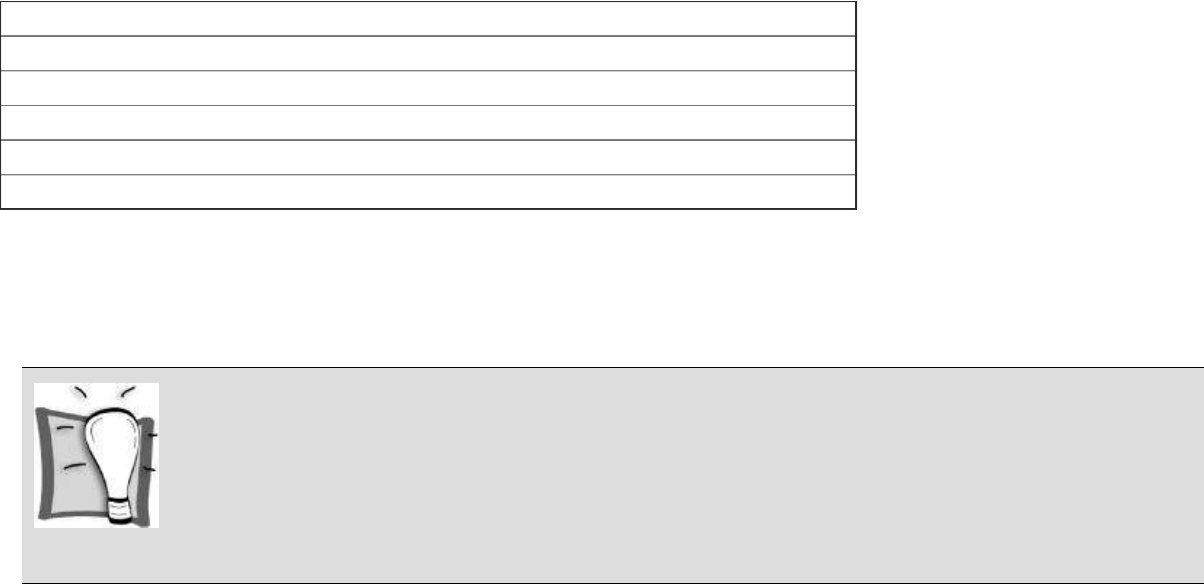
surplus. As such, if your investing purpose in buying real estate is financial independence, it makes
sense to focus on positive cashflow returns first and capital appreciation second.
The missing piece in the jigsaw puzzle, which explains how you can build up enough capital to own
enough properties to become financially free, is to supplement your wages (or other earned income)
by using quick-turn real estate investing strategies to make lump-sum gains.
It’s fair to say that different types and classes of property offer the potential for varying financial
returns. Some properties are better suited to capital appreciation, others are ideal to be made-over for
quick cash gains, and you can still find high-yielding positive cashflow investments too.
The right property for you is one that will help you achieve your financial goals within your
predetermined time frame. It’s time for you to make another decision. Grab a pen and circle the
multiple-choice answer from the selection in the table below that best summarises your investing
purpose (only one answer is allowed).
Your investing purpose
Multiple-choice time (circle your answer)
Today’s date:
Question: My end purpose for investing in real estate is …
a) Financial freedom within the next 10 years or sooner.
b) I plan to keep working for the next few decades and wait and hope for capital appreciation.
c) I don’t know … I just want to read the next chapter!
Which is a higher priority for you: making money and building wealth, or losing money to save tax
and having to work harder? It seems a ridiculous question, but somehow the majority of investors are
convinced, usually by agents who get paid for selling real estate, that it’s a good idea to buy loss-
making property.
Steve’s investing tip
Anyone who suggests it’s a good idea to lose money is a fool.

MEET CRACKERS
It’s time to tell you about Crackers — another real estate agent from Ballarat. While he’s gone on to
achieve some impressive things, when I first met him he was the kid fresh out of high school,
employed to drive around putting up and taking down ‘For Sale’ signs, as well as running general
errands.
One day I wanted to complete a property inspection and the only person available to show me
through the house was Crackers. Normally he wouldn’t be given such responsibility, but his supervisor
knew we’d met before and that I wasn’t looking to be dazzled by an impressive sales display.
After about five minutes of walking through the house, it was clear it wasn’t what I was looking for
as it was in a shabby condition and a touch overpriced. On the way back to the car Crackers and I
struck up a conversation about investment property and the difference between making and losing
money.
Crackers was intrigued that I seemed to be buying a lot of properties whereas other investors
stopped after about one or two acquisitions. I began explaining the difference between positive and
negative gearing, and, sensing an eager young mind, I went into quite a bit of depth. Perhaps I went
into a little too much detail, because when I’d finished, Crackers simply replied, ‘Steve, where I come
from a positive is always better than a negative!’
Feeling like I’d been shown an easy way to solve a complicated problem, I was temporarily
speechless before being totally impressed by the ability of this young kid to grasp a concept that many
adults can’t.
Let me finish this chapter with the same question I asked you at the beginning. Place a tick in the
box that describes your objective for investing in property from this day forward:
I want to invest in real estate to save tax.
I want to invest in real estate to make money.
It’s clear that if you want to be in the 8 per cent who own a multiple-property portfolio you’ll need
to adopt a different model to how the other 92 per cent invest. This proves once again that success
comes from doing things differently.
CHAPTER 6 INSIGHTS
Insight #1
If owning real estate builds wealth then it makes sense that you would want to own as much of it as possible. Why is it,
then, that 92 per cent of investors only manage to acquire one or two rental properties?
The reason why so many investors own so few properties is simply that they cannot afford to own more. Instead of
building wealth, their approach to property investment keeps them needing to work, so if your goal is to regain control
over your time, a different approach is needed.
Insight #2
If you want the same result as 92 per cent of property investors then follow their lead and invest in the ‘normal’ way,
which is negative gearing. If not, then you’re going to have to do something different in order to achieve a different
outcome.
Insight #3

How many properties can you afford that lose money? How many properties can you afford that make money?
Insight #4
When you allocate a portion of your profits to a different class of assets, such as shares, you create diversification, which
is a hedge against having all your financial eggs in the one investment basket.
Insight #5
When someone tells you it’s a good idea to buy real estate that loses money, don’t listen.
Note
1 Household Investors in Rental Dwellings, Australia, 1997 (cat. no. 8711.0).
7
The truth about negative gearing
This chapter is written for those who want to know more nitty-gritty information about why negative
gearing is a flawed investment strategy for those seeking financial independence. It’s heavy going
in parts, but I recommend persevering because there are many useful insights that will help you to
become a more skilled and successful investor.

WHY IS NEGATIVE GEARING SO POPULAR?
Negative gearing, often spruiked as a way that you can use the tenant and the taxman to make you
rich, is a popular investment strategy because it speaks to the heart of every investor who wants to
make money and save tax, and that’s just about everyone.
Aside from tugging at our greed glands, considering the prices asked compared to the rents earned,
more than 90 per cent of properties for sale at any given time will be negatively geared.
Another consideration is the huge amount of hype and spin generated by those who benefit
financially from investors purchasing negatively geared property. This includes developers, real estate
agents, accountants, lawyers and financiers, as well as the plethora of free seminars, books and other
information published by so-called wealth-creation experts.
Steve’s investing tip
Many of the free seminars and courses are simply shams for selling overpriced property to unsuspecting buyers.
The final and perhaps most compelling reason why negative gearing is so popular is because history
suggests that negative gearing works very well. After all, as shown in table 7.1 (median house prices
at 10-year intervals from March 1980), who can argue that property values haven’t increased over
time?
Table 7.1: increases in property values 1980 to 2009
Source: Real Estate Institute of Australia <www.reia.com.au>.
* Latest available data at time of writing.
With the benefit of hindsight, how many properties do you wish you bought back in 1980, 1990 or
even 2000? Before you beat yourself up too much, there is a compelling reason why you didn’t buy
more property in years past, and that’s because you couldn’t afford to.
When you separate the facts from the hype, a simple truth that negative gearing can’t hide from is
that it is a strategy created to make a certain loss today and maybe a profit tomorrow (via future
capital appreciation). And when you compare negative gearing against the other option of cash and
cashflow investing (where you make a profit now and tomorrow), it simply doesn’t stack up.

PROPERTY AND TAXATION
Please note that the information here is a general overview. Taxation is a complicated matter and
you should seek specific advice from a qualified and experienced professional.
Under Australian income tax law, property investors must include on their annual tax returns any
income earned from their property investments, including rental receipts and realised capital gains.
The timing of when the real estate income must be declared varies. For rental receipts it is usually
when the amount is received, but capital gains are not taxed until the property has been sold or
otherwise disposed of. Refinancing is not disposing of an asset, and as long as ownership does not
change, properties with capital gains can be refinanced without any capital gains tax (CGT) impact.
Real estate investors are also allowed to claim a tax deduction for expenses incurred in earning their
real estate incomes. Common deductions include interest, rental management costs, insurance, council
rates, utilities, minor repairs and depreciation. Importantly, your property investments do not need to
be profitable to qualify for a tax deduction. The test is simply that you expect your real estate
investments to be profitable in the future, and that one day you will pay income tax on that profit.
It is normal for an investment property — especially if it has been bought for capital appreciation
(which will not be taxed until the investment is sold, potentially many years in the future) — to have
more expenses than income. The resultant loss can offset any other income (including employment
income) the taxpayer may have to reduce the amount of tax paid.
Table 7.2 contains some examples of the various tax positions a property investor may face.
Table 7.2: example tax outcomes
Let’s have a look at each of these.
Scenario A
This is the usual position in a negatively geared transaction. While rental income ($10 000) must be
included in the taxpayer’s income tax return, the unrealised capital gains ($55 000) are not, because
the property has not yet been sold. As the property deductions ($15 000) are higher than the rental
income ($10 000), a loss results ($5000), which can be used to reduce the tax payable on other income.

Scenario B
This is the same as scenario A, except the property has been sold and so the capital gains must now be
included in the investor’s income tax return.
Under current tax laws, the capital gain could be discounted by up to 50 per cent in certain
circumstances, and if this were the case the amount of the taxable gain would be as shown in table 7.3.
Table 7.3: scenario B with and without 50 per cent CGT discount
Without 50% CGT discount With 50% CGT discount
Rental income $10 000 $10 000
Capital gains +$55 000 +$27 500
Property deductions –$15 000 –$15 000
Taxable gain * =$50 000 =$22 500
* Income tax is then levied at the appropriate marginal rate.
Scenario C
This is the usual position in a positively geared transaction. While rental income ($10 000) must be
included in the taxpayer’s income tax return, the unrealised capital gains ($55 000) are not because the
property has not yet been sold. As the property deductions ($7500) are lower than the rental income
($10 000), a profit results ($2500), which must be included in the taxpayer’s income tax return.

Scenario D
This is the same as scenario C except the property has been sold and so the capital gains must now be
included in the investor’s income tax return. Table 7.4 (overleaf) shows the effect of the CGT
discount.
Table 7.4: scenario D with and without 50 per cent CGT discount
Without 50% CGT discount With 50% CGT discount
Rental income $10 000 $10 000
Capital gains +$55 000 +$27 500
Property deductions –$7 500 –$7 500
Taxable gain * =$57 500 =$30 000
* Income tax is then levied at the appropriate marginal rate.

How a property loss saves tax
Here’s a case study revealing how the property loss can be used to offset a taxpayer’s other income.
Sally is a lawyer on a salary of $70 000 per annum, plus superannuation. Two years ago she bought a
property at 55 Green Street which has since appreciated in value by $55 000. Her property attracts
rental income of $10 000 and she has total property-related expenses of $15 000. Her overall tax
position is as shown in table 7.5.
Table 7.5: Sally’s tax position
Sally with no property Sally with one property
Salary $70 000 $70 000
Property losses – ($5 000)
Taxable income $70 000 $65 000
Income tax + Medicare ($16 050) ($14 475)
Total $53 950 $50 525
Although Sally has succeeded in reducing her tax bill by $1575 ($16 050 − $14 475), she is $3425
worse off overall ($50 525 − $53 950). This is because only 31.5 per cent of the $5000 property loss
was recovered by the tax she saved. The other 68.5 per cent had to be paid from her own pocket, and
this reduced her after-tax spending power.
Provided Sally’s property keeps increasing in value, she will be ahead. However, you may be
surprised to learn that over the past 30 years, property values have historically only increased about
one-third of the time. For the other 20 years they trended sideways or declined.
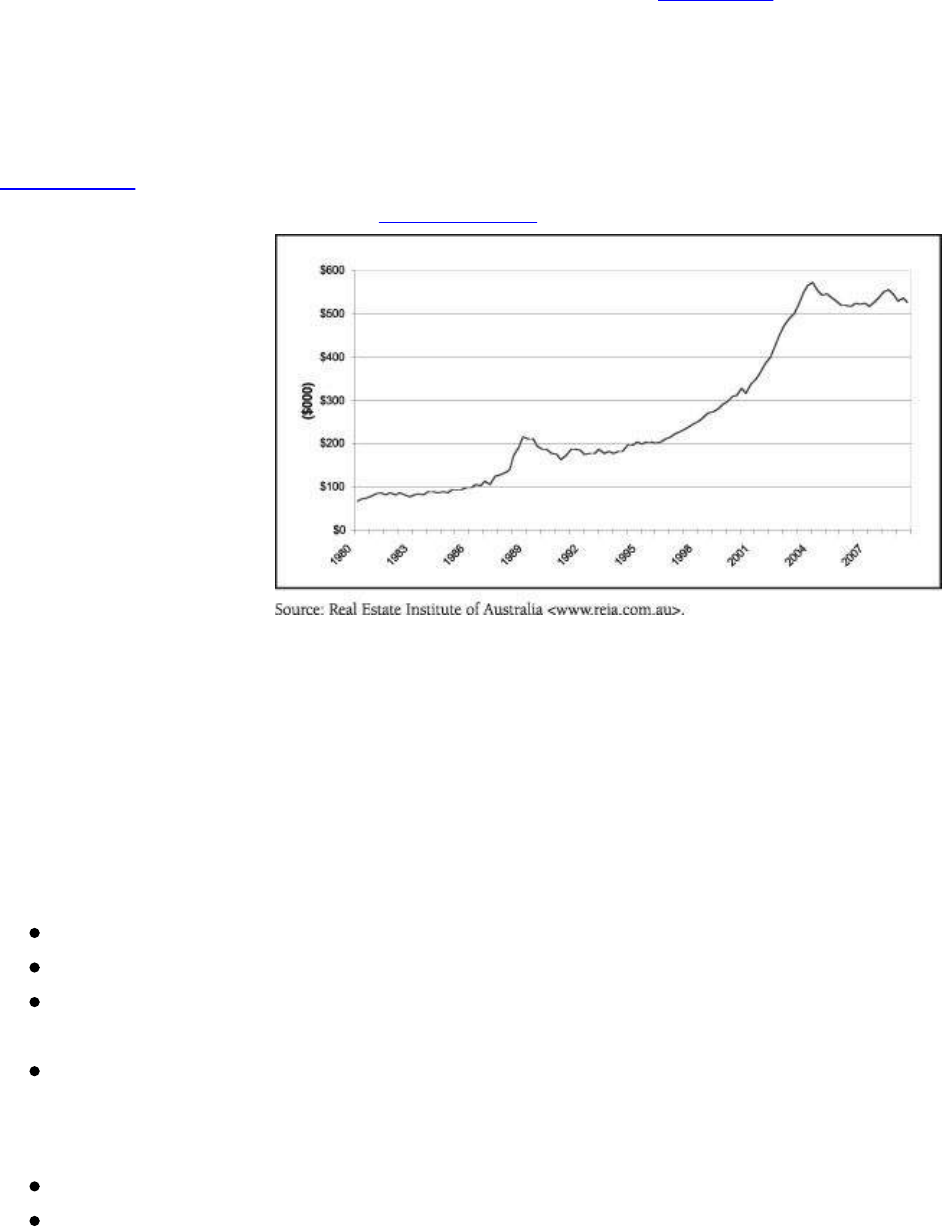
CAN YOU RELY ON CAPITAL GAINS?
Capital gains are a form of investing profit that occurs when your property appreciates in value, or, to
put it more simply, when an asset is worth more than the cost of acquiring and holding it. Capital
appreciation is by far the most popular reason why investors buy real estate.
Property appreciates in value because there are more people than there are houses, and when demand
exceeds supply, prices increase. However, before you rush off and buy a new growth-focused
investment property, you need to know that real estate values do not necessarily increase in a steady or
predictable manner.
With thanks to the Real Estate Institute of Australia, figure 7.1 (overleaf) shows a graph of Sydney
median house prices from 1980 until 2009. The graph clearly identifies the three phases of a property
market: growth, stability and decline. Commonsense explains why this occurs. First of all, prices
increase as buyers bid up values, in fear that they will miss out on their desired home at a price they
can afford.
Figure 7.1: Sydney median house prices 1980 to 2009
Source: Real Estate Institute of Australia <www.reia.com.au>.
The boom times can’t last forever because a borrower’s ability to service his or her loan (that is,
demonstrating how the loan will be repaid) is one of the main factors financiers consider in deciding
how much to lend. When home values increase faster than incomes, fewer and fewer people can afford
the loan repayments and cannot enter the property market. Once there are more sellers than buyers,
values begin to decline (as the market corrects from the artificial highs reached during the frenzied
peak), and then stabilise.
In most cases the majority of the purchase price of a home is borrowed, and so the trigger for the
next growth phase is for credit to become easier to access and/or more affordable. This can happen if:
Incomes increase so borrowers can service higher debt repayments.
Interest rates fall, meaning borrowers can borrow more debt for the same dollar repayment.
New loan products are released so that people who wouldn’t otherwise qualify for a loan are now
able to source finance.
The government offers incentives to purchase real estate, or makes the laws pertaining to
investing more investor-friendly.
Real life examples of the sparks that have led to the property market igniting include:
Interest rates falling from around 18 per cent in 1990 to a cyclical low of 6 per cent in 2001.
New or increased government incentives for property purchasers and investors, including the

federal government’s First Home Owner Grant and the National Rental Affordability Scheme, as
well as state government stamp duty savings for first home buyers.
The creation of low-documentation (low-doc) loans, making it easier for those who couldn’t
prove their income to nevertheless qualify for a loan.
The increase of loan-to-valuation ratios from a traditional maximum of 80 per cent (that is, a
maximum borrowing of 80 per cent of a property’s value) to as much as 100 per cent and even
more.

What causes prices to increase rapidly?
Looking back at figure 7.1 for a moment, what do you think causes a sudden and rapid price increase,
like what happened between 1998 and 2004?
The answer is price speculation. Like a snowball increasing in size and speed as it rolls downhill, a
booming property market feeds on itself as buyers start to behave irrationally. Values are bid up
quickly as home buyers fear being priced out of the market, while speculators look for quick profits.
In time the property market will peak and then soften, which usually happens in conjunction with:
The economic climate deteriorating and speculators becoming less willing to risk their capital
and more interested in preserving their wealth.
Home buyers becoming less motivated to buy, since values are falling or drifting, so there isn’t
much urgency to make a commitment.
Finance becoming harder to source, particularly for investors, as lenders become choosier about
who they lend to and for what purpose.
The truth is that although property values trend up over time, they are not increasing all the time.
During periods when prices are flat or declining, capital-growth-focused investors will not be making
any money. Looking at what happened to median house prices in Sydney over the past 29 years, it
appears property prices:
increased for 31 per cent of the time (nine years: 1988 to 1989, 1997 to 2003)
decreased for 17 per cent of the time (five years: 1990 to 1991, 2004 to 2005, 2007)
were stable or flat for 52 per cent of the time (fifteen years: 1980 to 1987, 1992 to 1996, 2006,
2008 to 2009).
There have been two substantial booms, followed immediately by two price corrections, and the rest
of the time prices were flat. Would you be happy with an investment strategy that was only effective
31 per cent of the time? I wouldn’t be.
The number of years of median house price increases, decline and no movement are shown in table
7.6 for Australia’s capital cities. You can find graphs of median house price movements for all capital
cities at <www.PropertyInvesting.com>.
Steve’s investing tip
Investing for growth is about timing the market, not time in the market.
Table 7.6: movement in median house prices 1980 to 2009
Source: Approximate, based on data from the Real Estate Institute of Australia.
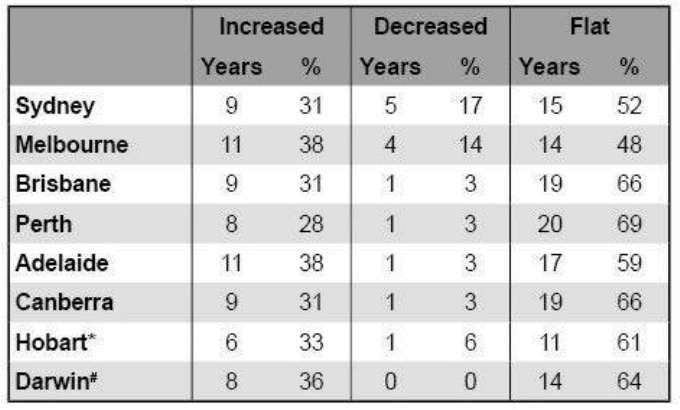
* Data from 1991 to 2009.
# Data from 1987 to 2009.
Note: Only obvious downward movements were treated as a decline; minor declines were treated as the market trending sideways.
The conclusion here is that the broad investing strategy of buying and holding real estate for the
long term will be profitable, but for somewhere between 60 per cent and 70 per cent of the time you
will not be maximising your money because prices will be flat or declining.
A much better approach would be:
1 to be heavily invested in real estate for growth as the market booms
2 to sell once prices have peaked and start to correct
3 to buy positive cashflow and quick-turn properties while the market is trending sideways.
I’m not sure what the future holds, but firmly believe that the best strategy is to tailor your investing
to the prevailing market conditions rather than adopting a one-size-fits-all approach.
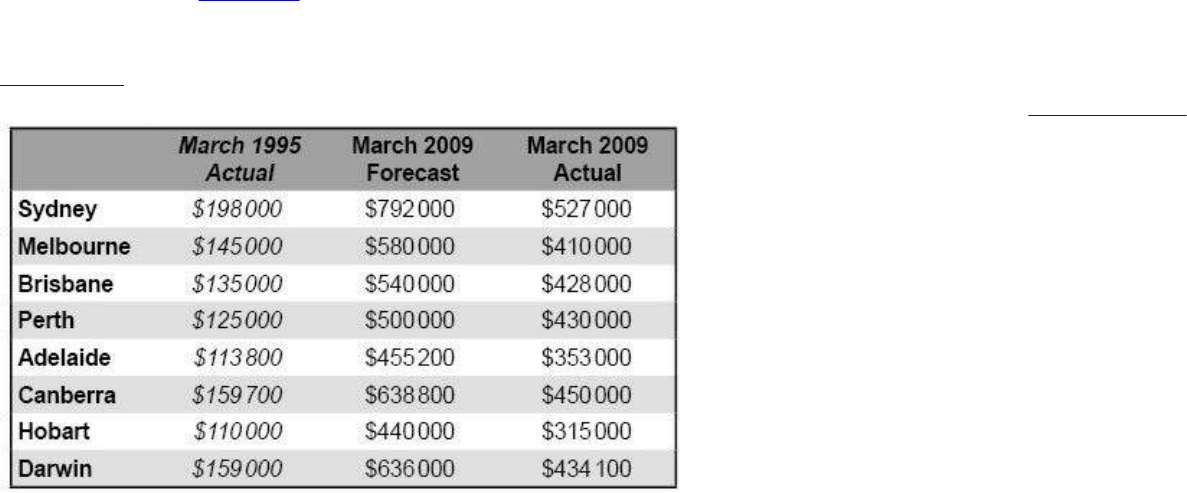
DO PROPERTY PRICES REALLY DOUBLE EVERY SEVEN
YEARS?
Although property spruikers regularly claim that property prices double every seven or so years,
statistical evidence indicates this is a furphy, designed to dupe unsophisticated investors into buying
second-class real estate.
Taking actual median house prices from 1995 and assuming values doubled every seven years (to
2002 and 2009), table 7.7 reveals what property should be worth today (forecast) compared to current
prices (actual).
Table 7.7: 2009 property price forecast vs actual
Source: Real Estate Institute of Australia <www.reia.com.au>.
As the data above reveals, despite there being the biggest boom in property prices in 100 years, there
was not one major city in all of Australia that experienced a doubling of house prices within
consecutive seven-year periods from 1995 to 2002 and 2002 to 2009.

FALLING TAX RATES
When you think about how much people were taxed in the past, you can understand the historical
attractiveness of negative gearing as a legal tax-minimisation strategy. For example, as shown in table
7.8, the top marginal tax rate for individual taxpayers in 1985–86 was 60 cents in every dollar (above
$35 000). Ouch!
Table 7.8: individual tax rates 1985–86
Source: ATO website, copyright Commonwealth of Australia, reproduced by permission.
Taxable income Tax on this income
$0 − $4 594 Nil
$4 595 − $12 499 25¢ for each $1 over $4 595
$12 500 − $19 499 $1 976.26 + 30¢ for each
$1 over $12 500
$19 500 − $27 999 $4 076.25 + 46¢ for each
$1 over $19 500
$28 000 − $34 999 $7 986.25 + 48¢ for each
$1 over $28 000
$35 000 and over $11 346.25 + 60¢ for each
$1 over $35 000
Yet gradually since, the amount of income tax we pay has been falling in two ways:
The income thresholds have been increased.
The marginal tax rates have decreased.
Table 7.9 (overleaf) shows the income tax rates for individual taxpayers for the 2009–10 income
year.
Table 7.9: individual tax rates 2009–10
Source: ATO website, copyright Commonwealth of Australia, reproduced by permission.
Taxable income Tax on this income
$1 − $6 000 Nil
$6 001 − $35 000 15¢ for each $1 over $6 000
$35 001 − $80 000 $4 350 plus 30¢ for each
$1 over $35 000
$80 001 − $180 000 $17 850 plus 38¢ for each
$1 over $80 000
$180 001 and over $55 850 plus 45¢ for each
$1 over $180 000
However, while it’s great to pay less tax, there is a substantial downside for negatively geared
investors as the amount of their tax saving reduces as the marginal tax rates fall. Taking scenario A
from earlier in this chapter as an example, the so-called tax benefit has dropped substantially, even for
those on the top marginal rate, as shown in table 7.10 (overleaf).
Table 7.10: diminishing tax benefit
1985–86 tax year 2009–10 tax year
Loss created by the negatively geared property $5000 $5000
Top marginal rate ×60% ×45%

Tax benefit at top marginal rate = $3000 = $2250
The diminished benefit is even worse for middle-income-earning taxpayers.
You can also conclude that as the tax rates drop, the amount of money needed to fund your negative
cashflow property increases. Using the figures in table 7.10, an extra $750 ($3000 − $2250) must be
found to maintain the property portfolio, and this takes away from your ability to fund your lifestyle.
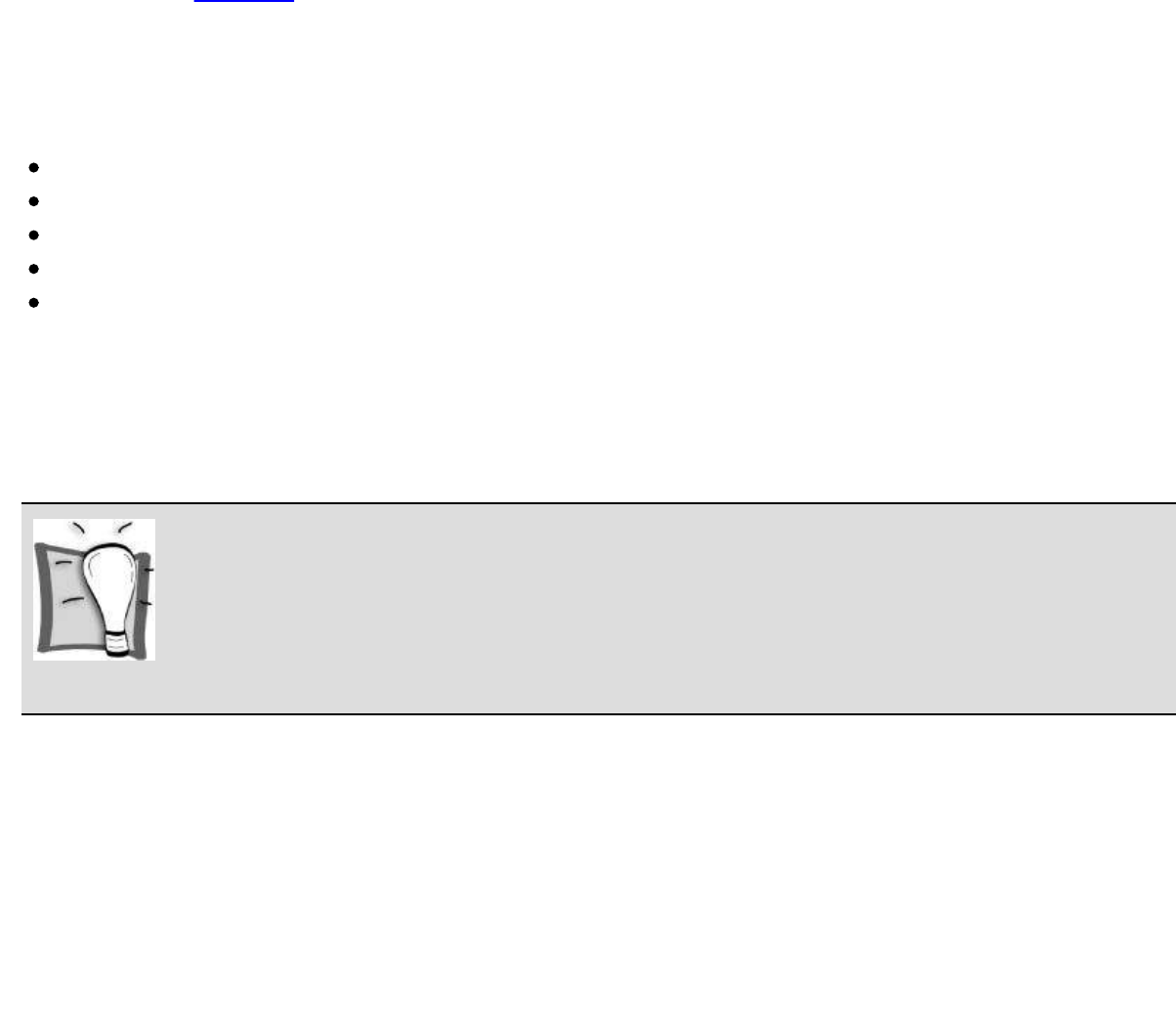
INFLATION
Looking back at table 7.1, the median price for a house in Brisbane in March 2000 was $150 000. By
March 2009 the median house price had increased to $428 000.
Assuming you had bought a property that achieved this price growth, how much of a gain would you
have made? At first glance you might say $278 000 ($428 000 − $150 000), however the real profit
would be much less because you would need to adjust for:
purchase costs, including stamp duty
the annual amount of your negative cashflow
sale costs
inflation
taxation (if you sell).
Inflation represents the erosion of the buying power of money as a result of increasing prices. The
most common measure of inflation in Australia is the Consumer Price Index (CPI).
A good example of inflation is hot chips. It shows my age, but when I was a boy I can remember that
a ‘minimum chips’ at my local fish and chip shop cost 30¢. Nowadays, minimum chips is about $3.00!
You get the same amount of chips, but the cost has gone up 1000 per cent since around 1980.
Steve’s investing tip
The impact of inflation is that a dollar today buys less than a dollar yesterday.
Returning to the example of the Brisbane house, to make the comparison fair we need to inflate the
purchase price (which was paid for in year 2000 dollars) up to 2009 dollars, because a dollar in the
year 2000 bought more than a dollar today. Once you’ve adjusted the purchase price for movements in
the CPI between March 2000 and March 2009, $49 121 of your gain (17.7 per cent) is gobbled up by
inflation, leaving an inflation-adjusted profit of $228 879. This then needs to be adjusted for purchase
costs, holding costs, sales costs and taxation.
The point here is that the profit you make from any capital appreciation may not be quite as good as
you think because if you hold your investments for a long time then a significant amount of your gain
will be eroded by inflation.

CAPITAL GAINS TAX
The way capital gains are taxed changed in September 1999. Up until that date, the cost of the asset
was indexed, meaning that you only paid capital gains tax on the after-inflation gain. For example,
taking the Brisbane property again, you would only have to include $228 879 on your income tax
return rather than $278 000.
However, from September 1999 adjusting for inflation was scrapped, and instead individual
taxpayers who held an asset for longer than 12 months were eligible to receive a 50 per cent capital
gains tax discount. Using the Brisbane example again, only $139 000 of the $278 000
1
capital gain
would need to be included in the taxpayer’s income tax return. In this example the 50 per cent
discount provides a better outcome than indexing — but this isn’t always the case.
Where the property market drifts upwards slowly, as happens for the majority of the time, a greater
portion of the gain made will be eaten up by inflation. For example, let’s say you bought a Melbourne
investment property for $347 000
2
in March 2003, and held it until March 2008 when you sold it for
$432 500.
3
You rented the property out at $400 per week, and paid rental management of 6 per cent,
annual interest on your loan of $19 000 and other costs of $4 000 per annum.
At first glance you have made a good profit of $85 500. The reality, as shown in the following steps,
is otherwise.
Step 1: annual cashflow
Rent $20 800
Rental management − $1 248
Loan interest − $19 000
Other costs − $4 000
Annual cashflow loss = $3 448
Step 2: property’s cost
Purchase price $347 000
Purchase costs (say, 5%) + $17 350
Annual cashflow loss (5 years) + $17 240
Total cost = $381 590
Step 3: sales proceeds
Sales price $432 500
Sales costs (say, 4%) − $17 300
Sales proceeds = $415 200
Step 4: profit/loss
Sales proceeds $415 200
Total cost − $381 590
Total profit = $33 610
Step 5: tax on capital gain

Total profit $33 610
Annual cashflow loss * + $17 240
Taxable capital gain = $50 850
Tax on capital gain (50% discount, tax on balance at, say, 30%) $7 628
Tax benefit of the annual negative cashflow($17 240 at, say, 30%) − $5 205
Net tax on property = $2 423
* This is not relevant to the capital gains tax calculation and is added back.
Step 6: inflation adjustment on your investment capital
Deposit paid (20%) $69 400
Closing costs + $17 350
Annual cashflow loss + $17 240
Total investment capital = $103 990
Inflation adjustment * = $15 381
#
* CPI for March 2003 was 141.3. CPI for March 2008 was 162.2. Inflation adjustment on the capital contributed is:
((162.2 − 141.3) ÷ 141.3) × $103 990 = $15 381.
#
This means that after you have sold and your initial investment capital is returned, it buys $15 381 less than it did when you bought
in 2003.
We calculated that the tax payable on the capital gain was $7628. However, if we adjusted the
capital gain for the impact of inflation, the amount of tax payable would be $5320.
4
This means that
we are paying tax of $2308
5
on a capital gain that has given us no benefit because it has been eroded
by inflation.
Step 7: real gain
Total profit $33 610
Inflation adjustment − $15 381
After-inflation profit = $18 229
I know it’s been a lengthy example, but I have gone into a lot of detail to show you that the tax
system now says you must pay capital gains tax on a portion of your profit that you actually haven’t
made because it has been eaten away by inflation. That is, the capital gains tax was levied assuming
you made a pre-tax gain of $50 850 when in fact your pre-tax inflation-adjusted profit was $18 229.
You might argue that the 50 per cent discount is high enough to cater for the erosion of inflation,
however there is an anomaly. You only have to hold the property for a year to get the 50 per cent
discount. There is no increase in the discount if you hold the property longer, yet the more time that
passes the more inflation erodes your gains.
Steve’s investing tip
The way the capital gains discount works means those who hold their properties for the long term are disadvantaged
compared to those who hold for shorter time frames.
It’s been a complicated discussion, but this is a very important point, particularly as one of the
common beliefs held by a lot of property investors is that you hold for the long term. In fact, the 50
per cent capital gains discount works better for those who hold for just over a year (or a few years)
because inflation has less of an impact. Those who hold property for decades suffer a significant
inflation erosion of their profits without being further compensated by the tax system.

THE BOTTOM LINE ON NEGATIVE GEARING
My aim has not been to pour freezing cold water on the idea of negative gearing. Rather my objective
has been to present an independent perspective outlining that all is not as rosy as the free seminar
presenters would have you believe.
When you allow for holding costs, tax and inflation, negative gearing does not seem like a great
long-term wealth-creation strategy. Indeed, when prices are flat or going backwards, which is most of
the time, negative gearing builds no wealth at all.
Negative gearing is a strategy designed to lose money, and in order to fund that loss you will need to
continue working. This makes the strategy at odds with the broader target of financial independence.
If your goal is to stop working as soon as possible or to free up more time to do the things you love,
then negative gearing is not a wealth-building strategy you should implement. An alternate approach
is needed because, as you know, success comes from doing things differently.
CHAPTER 7 INSIGHTS
Insight #1
When comparing the purchase price and the rental return, most properties sold in Australia are negatively geared. This
means that you won’t be interested in buying most properties that are available for sale, and certainly not dwellings
offered off the plan or at free seminars.
Insight #2
Even though you are able to use the loss made from negative gearing to reduce the amount of tax you would otherwise
pay on your employment income, you will only receive back a maximum of 46.5¢ in every dollar lost. The remaining
53.5¢ must be paid from your own pocket, and this means less money to live.
Insight #3
The trigger for a growth phase in property prices is when incomes improve and/or access to credit becomes easier.
Insight #4
Property prices certainly trend up over time, but that does not mean they are increasing all the time. Over the past 30 or
so years, prices have only increased for around a third of the time, and this is split over several intervals. The truth is that
for the majority of the time, property prices trend sideways.
Insight #5
Despite what some wealth-creation spruikers may promise, property prices do not double every seven years. Even
considering the biggest boom in property prices for 100 years, the median house price did not double in any capital city
in the two consecutive seven-year periods from 1995 to 2002 and 2002 to 2009.
Insight #6
Inflation erodes the buying power of your money. The longer you hold your property portfolio, the higher the
proportion of any gain made that is gobbled up by inflation.
Insight #7
The way capital gains are taxed means that, even though inflation erodes more of your gain over time, there is no
compensation for this, as property investors who hold for a year are treated the same as investors who hold for 20 years.
Practically, you will end up paying capital gains tax on a portion of your gain that has no benefit to you because it has
been eroded by inflation.

Notes
1 In reality the gain would need to be adjusted further for relevant purchase and sale costs.
2 Median house price at the time as reported by the Real Estate Institute of Australia.
3 Median house price at the time as reported by the Real Estate Institute of Australia.
4 (($50 850 – $15 381) ÷ 2) × 30%
5 ($15 381 × 50%) × 30%
8
The truth about financing
It was one of the most bizarre meetings I’ve ever attended. Early on in our investing life, Dave
Bradley and I met up with two senior managers from one of the major banks to discuss securing a
$500 000 loan to buy more investment properties.
The bankers were enthusiastic because they had recently introduced a new loan tailored for small
business owners who didn’t have five or more years of financial statements (usually a bank
requirement to prove earning capacity). We were pleased because $500 000 would allow us to buy
another 20 or so houses.
Everything seemed to be going well, until our banking friends mentioned that in order to get the
$500 000 loan, we’d have to provide first mortgages on the property we bought plus leave $500 000 on
deposit with them as extra security.
Dave and I exchanged bemused glances, before I asked, ‘What percentage interest rate will you give
us on our deposit?’
‘Three per cent’, they replied.
‘And what percentage interest will you charge us on the loan?’ Dave enquired.
‘Seven per cent.’
‘Hang on a minute’, I said. ‘Aren’t you just lending us our own money back at a higher margin?
Also, if we had the $500 000 to start with, why would we need a loan from you?’
Dave added, ‘How many of these loans have you written so far?’
Unsurprisingly they replied, ‘Not many’. No guesses why!
I joke that I used to have a full head of hair before dealing with financiers, but the truth is that if
you’re planning on buying real estate then sooner or later you’re going to need to borrow
money — and that means dealing with lenders.
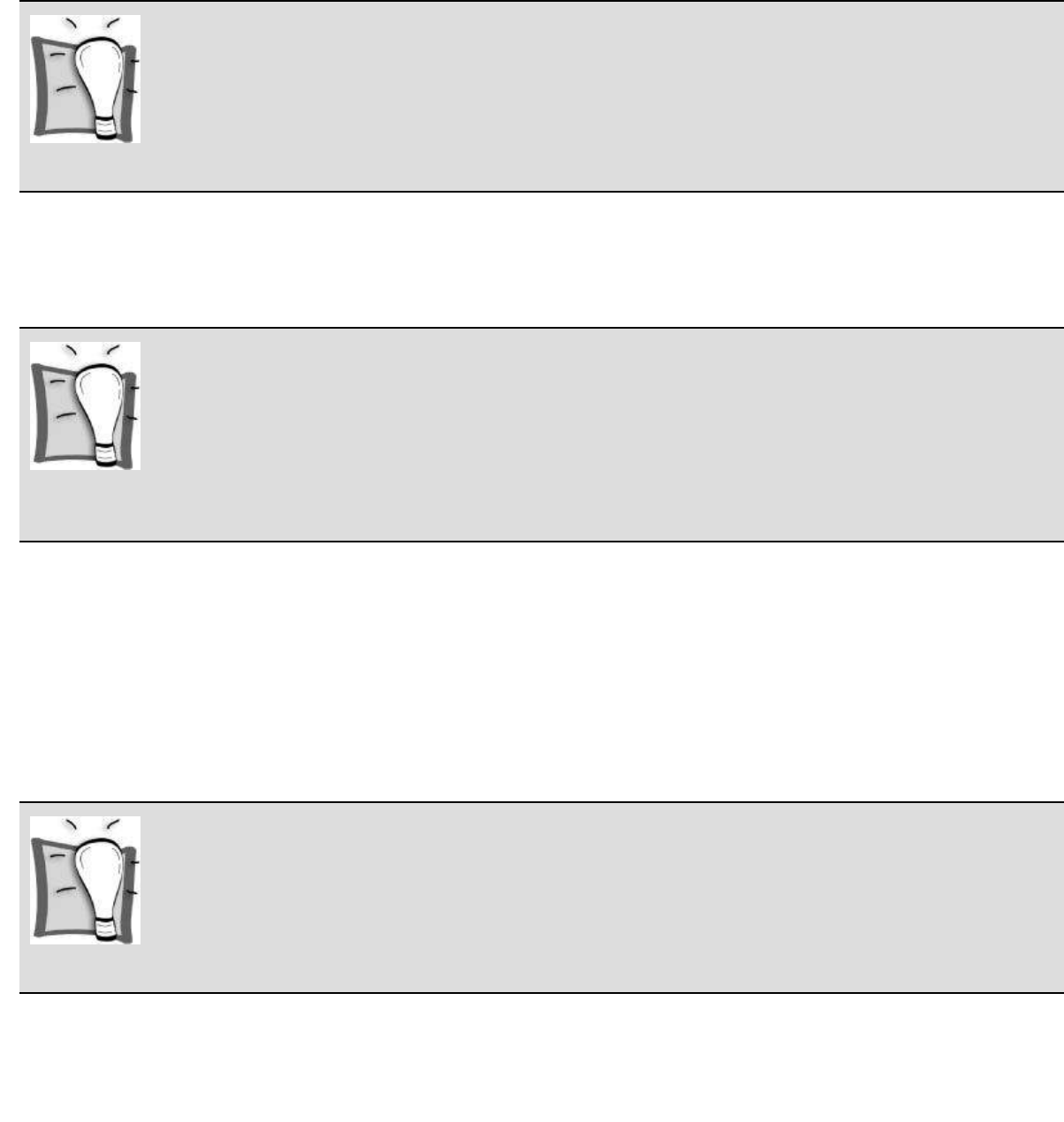
WHAT IS LEVERAGE?
Leverage is a fancy way of saying ‘being able to do more with less’. Applied to real estate, you can
use leverage in the form of other people’s money to buy more real estate than you could if you solely
relied on your own funds.
Steve’s investing tip
Leverage means being able to do more with less.
How many properties could you afford to own if you had to pay 100 per cent of the purchase price
and all other costs from your savings? Probably not many. On the other hand, how many properties
that made money from day one could you afford to own if you didn’t have to contribute one cent
towards the purchase costs? The sky is the limit.
Steve’s investing tip
LVR means loan-to-valuation ratio, and it is used to express the amount of money you can borrow relative to the property’s
independent valuation (which is almost always the purchase price).
Provided you can prove your creditworthiness, you should be able to borrow up to 80 per cent of a
property’s purchase price without too many troubles (so you would have an LVR of 80 per cent).
Before the global financial crisis you could borrow 100 per cent or more, but those rather heady days
have gone for the time being.
Just because a financier is willing to lend you a flattering amount of money does not automatically
mean it’s in your best interests to borrow as much as possible. This is a very important point. The
person writing the loan is probably being paid a commission, and the bigger the loan, the more money
he or she will get paid.
Steve’s investing tip
Just because a financier will lend you a flattering amount of money doesn’t mean you should accept it.
The name of the sustainable property investing game is to borrow in such a way that you’ll be able
to continually go back and ask for more money without the lender perceiving you as an increased
credit risk. One of the ways I’ve been able to do this is to never borrow more than 80 per cent of the
purchase price.

GETTING A LOAN
Financiers are in the business of lending money, which means that they’ll potentially lend to anyone
who satisfies their loan requirements. Now, given that you need to meet the lender’s systems (rather
than the other way around), the secret to getting financiers to say ‘yes’ to your application is to take
away all the reasons for them to say ‘no’.
Steve’s investing tip
The secret to getting financiers to say ‘yes’ to your application is to take away all the reasons for them to say ‘no’.
To do this, you must stand in the shoes of your financier and understand what risk you pose as a
potential client.
In discussing how to improve your chances of having your loan application approved, we’ll look at
the following issues:
The Australian lending industry. Lending in Australia is heavily influenced by the federal
government’s monetary policy, together with consumer credit laws. Recently, global
events — including the ‘sub-prime’ lending collapse, failures of several large offshore financial
institutions, and the resulting global financial crisis — have led to tougher credit lending
policies. What lenders can and can’t do is shaped by these factors.
The process of applying for a loan. All lenders have an application process that must be adhered
to. While each lender has a slightly different process, the way the information is reviewed is
largely consistent across the entire lending industry.
Getting the lender to say ‘yes’. We’ll have a look at some tips and techniques you can employ
when completing your loan application to dramatically increase your loan approval chances.
I’ve included a loan application checklist at the end of the chapter.

The Australian lending industry
Before deregulation, which began in the early 1980s, banks operated in a market where there was little
competition. At that time, most of the savings and loan interest rates were determined by the
government monetary policy of the day.
This lack of competition led to the emergence of a monopoly by the major Australian banks, and
few, if any, creative loan products were available. Basically, if you had a mortgage it lasted for 25
years and you paid monthly principal and interest loan repayments. The housing loans on offer were
very basic in structure, and features that are taken for granted today (such as redraw and offset
accounts) were not offered.
Other financiers existed, such as solicitor trust funds, but they were small and lacked the power and
resources to take on the major lenders.
In a bid to break the stranglehold, the Australian government deregulated the finance market and
invited foreign banks to not only open up in Australia but also potentially acquire previously
Australian-owned lenders.
Steve’s investing tip
The need to drive profits higher will be the driver for the re-emergence of more aggressive borrowing practices that were
scaled back when the global financial crisis first hit.
Banks are no longer operated for the benefit of deposit holders. Now private and/or public
shareholders own the equity and force management to engage in profitable activities to generate high
returns. This has increased competition and led to the release of new lending products with creative
features that have made the traditional ‘no-frills’ principal and interest loan all but obsolete.
With competition now influencing the lending market, lenders have looked for ways to streamline
operations and reduce costs. Efficiency savings have made it easier for lenders to provide employees
with notebook computers rather than employing additional support staff at a branch level.
The next logical step was not having employees at all, rather to have consultants who were paid a
commission for each loan written. In restructuring their operations, major lenders aggressively cut
costs by re-training some employees, and retrenched a lot more.
Some of the retrenched employees used their knowledge about the finance industry to set up
databases of lenders and their products. They used these databases and their knowledge about how to
get loans approved to carve a niche as intermediaries between lenders and clients. Within the industry,
such people are known as mortgage originators or mortgage brokers. Mortgage brokers make a living
from the commission paid by the lending institution when a loan is approved to a client introduced by
them. The service is free for the client.
Most recently, with the impact of the global financial crisis and the failure of several large overseas
financial institutions, there has been some tightening in available credit. This has made it difficult for
many smaller lenders to stay in business, and as a result some of the competitive pressure on the
major banks has eased.
What does it mean for you, the borrower?

Firstly, while the number of lenders has reduced in recent times, the market is still competitive and
there’s likely to be a lender interested in having you as a client, no matter what your credit history or
circumstances. All you need to do is meet their lending criteria.
Secondly, unless you have an existing relationship with a lender, it makes more sense to begin by
talking to a mortgage broker rather than directly with a financier, as a broker will be more interested
in getting your application approved because he or she receives a commission, whereas an employee is
likely to be paid the same salary no matter how many deals are approved.
Steve’s investing tip
No matter what your circumstances, there is sure to be a lender who can service your needs.

Applying for a loan
There are two components to your loan application: your personal information, and details of the
property you wish to purchase. Let’s have a look at these.
Personal information
Applying for a loan is like applying for a driver’s licence — the more effort and practice you
undertake, the better your chance of success; turn up on the day unprepared and you’ll probably fail.
Ideally, the best frame of mind to be in when asking for money can be achieved by trying to stand in
the shoes of the lender and asking: if a complete stranger came to me and asked to borrow money,
what are issues I’d be thinking about?
Lenders are primarily concerned with two things:
What is your ability to repay the debt?
What security are you offering as protection should you default on the repayments?
To answer these questions, lenders will seek personal information about your earning ability. Most
lenders will have standard application forms. Photocopy the application form and complete a few trial
runs to make sure you are familiar with what is required, and also that you can fill in the form neatly
and, more importantly, completely. Be sure to attach documents that support the information on your
application form, and don’t forget to sign it.
Many lenders now have online ‘pre-approval’ application forms where you can obtain instant
(conditional) approval. This is a good way to shop around, but you should seek to establish a network
with a broker rather than rely on a computer to process your application.
Proof of income
Unless you go for a low-doc loan, any potential financier will require proof of your income, which is
needed to help gauge your ability to make repayments. Proof of your income will include copies of
payslips, bank statements and tax returns.
If your tax returns are not up to date, then do yourself a favour by getting them in order now. Get in
touch with your accountant, get your records together and get your tax returns done, so that you can
provide these in support of any investment loan application.
When processing your application, a lender will seek to establish the maximum amount of debt you
can afford to take on given your current income by applying a formula called a debt-to-income ratio
(also known as a serviceability check). Each finance provider sets a different ratio, so it makes sense
to find out what the benchmark is before you submit your application. Don’t waste your time applying
to lenders when you know your debt-to-income ratio is outside their lending policy, unless you have
mitigating circumstances such as a higher deposit or additional security.
In order to comply with the Consumer Credit Code, lenders must be able to demonstrate that they
have carried out a reasonable assessment of your ability to service any loan without undue financial
hardship before they can approve you. As a general guide, lenders will be reluctant to lend where the
repayments would exceed one-third of the borrower’s gross income. A person whose repayments
exceed one-third of his or her gross income is considered to be ‘mortgage stressed’. For example, on a
gross salary of $75 000 the one-third guide would suggest a maximum annual repayment amount of
$25 000 ($75 000 × 0.33). At 6 per cent interest on a 30-year mortgage with monthly principal and
interest (P&I) repayments, this would support a loan value of about $347 000.

Note that this is a guide, not a hard and fast rule, as a person on a $75 000 annual income paying
$25 000 in mortgage repayments will probably feel more financial stress than someone on a $750 000
income repaying $250 000 per year.
Employment history
My brother, Ralph, tells a funny story about the importance of having a job in order to borrow money.
Returning home to Australia after a stint working overseas, he was in between jobs and went into the
branch of a prominent bank to get a new credit card with a $5000 limit.
He filled in the application form, including a personal financial statement, which revealed he had
many assets, including a sizeable bank balance, and few liabilities. The one anomaly was that he
didn’t have any employment income because he was having a break from work for a few months
before looking for a new job.
Looking over the application form, the bank teller enquired about why my brother didn’t have a job,
before expressing her disapproval, saying, ‘You realise you have to pay the money back, don’t you?’
‘Er — yes, I’m aware of that’, my brother replied politely. It was no good though; despite being in a
very strong asset position and being able to buy just about anything for cash, without a job his credit
application was denied.
Lenders are very interested in your employment history. This information is used to determine the
stability of your income and also how easy it would be for you to find another job in the event you
were sacked. Clients who have a reliable employment history will be looked upon favourably.
If you have an unstable employment record or have only been with your current employer a short
while, consider rephrasing your application to focus on the time you have been in a particular
industry.
Steve’s investing tip
The property is the security for the loan. What financiers are really lending against is your future salary or income-earning
ability as this is what will allow you to repay the loan.
Qualifications
Your qualifications are also important. People in certain professions — such as accountants, lawyers
and doctors — have access to special loan deals through affiliations with professional bodies. If you
belong to such a body, or a trade union or other club or association, then you may already have a foot
in the door with a lender. Be sure to spend the time researching whether or not a special deal exists
that you can access.
Steve’s investing tip
Most lenders have special offers for professionals. And even if you’re not a professional there’s no harm in asking for the
special deal!
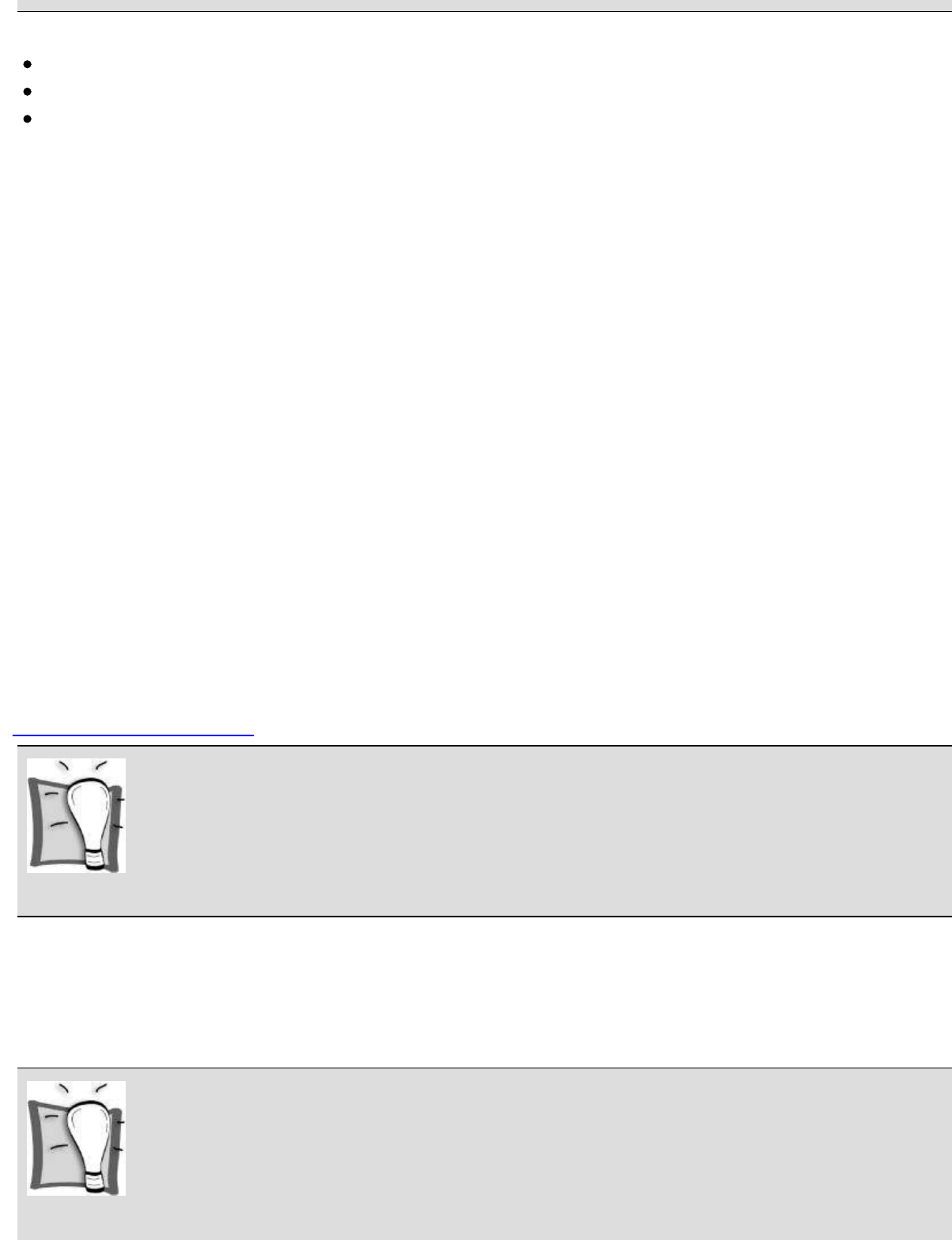
Before supplying any information, it’s worthwhile to think over three issues:
Specifically, what information does the lender require?
Why is that information needed?
How is the information going to be processed?
Answering these questions ensures you’re not just providing information for the sake of it. Instead,
you’re able to see the need, and then craft an answer that ensures your application is viewed in the best
possible light.
Personal financial statement
Your loan application form will include a section asking you to list your assets, liabilities, income and
expenses in the form of a personal asset statement.
This information is partly used to determine your current financial strength (or otherwise), as well
as providing the lender with a list of items that could potentially be used to make up any shortfall
between a fire-sale value of the property and the amount of the loan.
Often estimates are required; avoid providing inflated values as this won’t serve any worthwhile
purpose in the long run.
Credit check consent
A credit check is a key component to your loan approval. This is where the lender will access your
credit file to see what loans you have applied for, and whether there have been any late payments or
defaults.
While uncommon, it is possible for your credit record to have incorrect entries on it. That’s why I
strongly recommend obtaining a copy of your credit history before submitting your loan application.
In Australia, instructions on how you can do this free of charge can be found at:
<www.mycreditfile.com.au>.
Steve’s investing tip
It’s a good idea to review a copy of your credit file to make sure there aren’t any incorrect entries.
Note that you’ll need to send your request for your credit history by fax or post if you want to obtain
the free copy of your file. Otherwise you can pay for an express service and order your credit file
online.
A record is kept every time a lender requests your credit file (including the date, the lender and how
much you were seeking to borrow), so be careful about having an excessive number of enquiries.
Steve’s investing tip
When seeking loan pre-approval, only authorise the credit check to be done after all other criteria have been evaluated. That

way, if your application is refused on other grounds your credit file won’t have unnecessary enquiries on it.
If you have a poor credit history, address the flaw in your credit application. Explain problems in
advance and adopt the strategy of providing more information than is necessary. Never hide any
details in the belief they won’t be discovered.
Putting your best foot forward
Here are four ideas you can use to present your personal information in a positive light:
Prepare a confirmation or proof of income letter on your employer’s letterhead and get your boss
to sign it. Make sure you include your entire package (superannuation, fringe benefits, bonuses
and so on), not just your cash component.
If you are due for a pay increase, make sure you put the higher figure on the form and word the
letter accordingly (for example, ‘I advise that from the next pay adjustment, Steve McKnight’s
salary will be $65 000 per annum’).
Don’t just mention how long you have been employed or what your qualifications are; talk about
how senior you are and how important you are to the business. Remember that banks are looking
for stability.
If you’ve changed jobs frequently, focus on how long you have been in the industry, rather than a
particular job.
Any weaknesses in your application should be directly addressed. Don’t be apologetic and never
seek to hide the truth. Obtaining a financial advantage by deception is a criminal offence.
Property information
In addition to personal information, lenders will also seek data about the property being used as
collateral or security for underpinning the finance.
Not all properties are equal. Depending on the location (city or rural), condition (good or poor) and
usage (residential or commercial), the lender may impose additional requirements. For example, you
may be required to come up with a larger deposit, the interest rate may be higher or you may need to
offer additional collateral.
The lending organisation wants to minimise its risk of suffering a loss if you default. The more
secure the collateral behind the loan, the happier a lender will be.
Loan-to-valuation ratio
The lender will calculate an LVR for your loan. The LVR calculation compares the funding sought
against the independently assessed value of the property potentially being purchased. The higher the
LVR, the more risk there is from the lender’s perspective. It is best to keep your LVR at or below 80
per cent if you want to avoid mortgage insurance. Some lenders offer low-documentation loans, which
means you don’t need to provide much financial documentation, but the maximum LVR they’ll
usually accept on such loans is between 60 per cent and 75 per cent.
Mortgage insurance
Almost any potential loss can be insured against, and mortgage default is no exception. Your lender
will seek to insure your loan with another organisation so that if you default they will not suffer any
economic loss. This is an extremely important point: mortgage insurance insures the lender, not you.
If you default on the loan, the insurer pays the lender, but the insurer will then seek to recover this
money from you.
Almost every residential property loan, regardless of the LVR, has mortgage insurance. You will
usually only have to pay the cost where the LVR is greater than 80 per cent. It is often a one-off cost
payable at the beginning of the loan, of usually several thousand dollars, or sometimes it can be added
to the loan and therefore your repayments will increase slightly to cover the cost.
Mortgage insurance is different to mortgage protection insurance. The latter is paid by the borrower
on the basis that if he or she becomes sick or disabled, the insurance company will make the
repayments on his or her behalf.
Make sure you shop around for the best loan product available, as the maximum LVR and also the
threshold where you will need to pay mortgage insurance varies between organisations.
High and low LVR loans
It’s possible to seek over 100 per cent finance, but you will usually need to offer additional security,
such as the equity in your existing home. This is, however, much more difficult since the global
financial crisis hit.
I don’t advocate borrowing money to fund a lifestyle. Be very wary of the trap where lenders
overextend your credit and you use the funds to pay for non-investment-related expenses.
At the other end of the scale, you can also seek finance if you have a poor credit history or no
financial statements. Despite tightening credit in the lending market, there are still a number of low-
doc loans available. You’ll pay a higher interest rate, higher establishment fees and be constrained by
a lower LVR, but finding a low-doc lender is still possible.
Honeymoon rates
Avoid being enticed by cheap honeymoon rates. Going cheap upfront might cost you more over the
life of the loan since lenders usually charge fees that go a long way to recoup the cost of the lower
initial rate.
Registered valuers
The valuation component in an LVR equation will typically be the lower of the purchase price and the
value assessed by an independent registered valuer.
Lenders usually have a number of valuers that they use. Upon instruction from the lender, a valuer
will look at the price of other houses sold in the area. He or she will also take into account the details
of the dwelling (number of bedrooms, land size and so on) and may even inspect the property to
determine its current state.
Valuers are not an overly optimistic group and are extremely conservative by nature, as the threat of
being sued should they come up with the wrong value is an ever-present concern. This is why, in all
but the rarest cases — irrespective of council values, estimated ‘true’ market value or any other
basis — the price paid for a property will almost always be the value used by the valuer.
Behind the scenes
Once you’ve submitted your application form, together with your authority for a credit check, your
lender will begin processing and evaluating the information. You can save yourself a lot of effort by
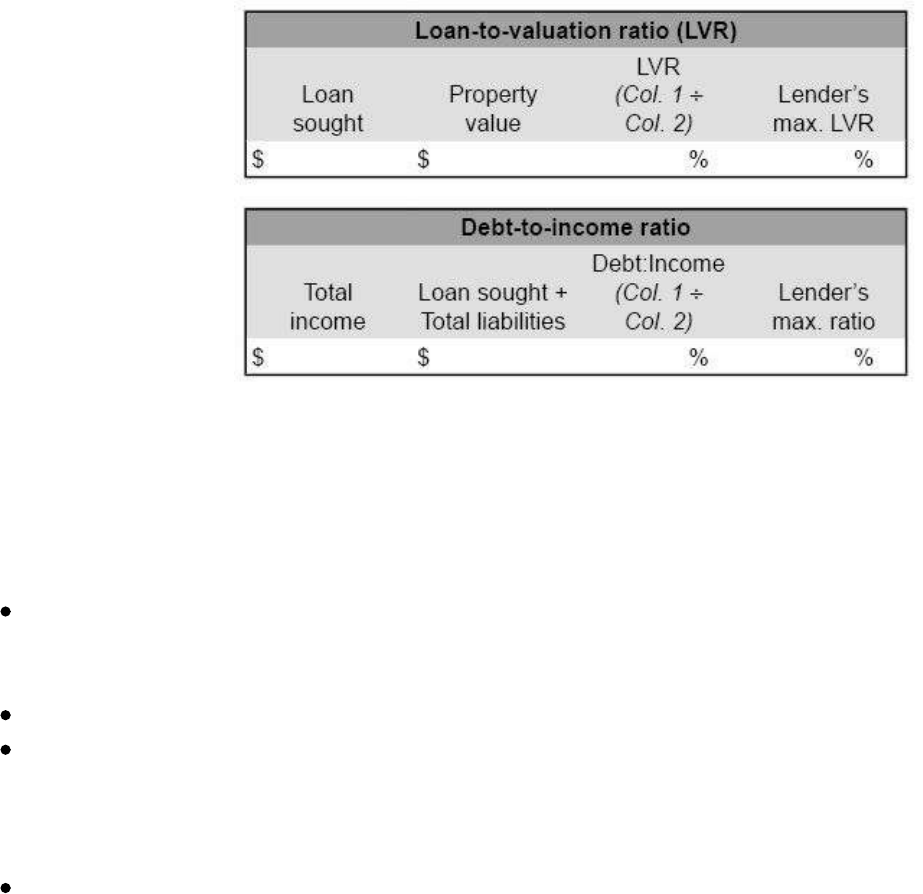
calculating your debt-to-income ratio and also your LVR using the template below to help determine
whether your application is likely to be successful.
It’s a good idea to regularly phone your lender or broker to see how your application is progressing,
to ensure it is not left at the bottom of the pile.
And finally …
Here are some final suggestions to help with your application:
Never lie or try to hide the truth from lenders. Not only is it a criminal offence to obtain a
financial advantage by deception, if your lender approves the loan and later finds out about your
dishonesty, they can demand that the loan be repaid immediately.
Target lenders that specialise in the type of loan you are applying for.
Don’t say or do anything that flags you as a dangerous risk. For example, when I said to my
banker that I wanted to become financially independent and never work again, he almost had a
fit. Aim to communicate that you see yourself working in your safe, secure and high-paying job
until you retire (whatever age that may be).
Building rapport with lenders takes time. Start networking now!
Getting the lender to say ‘yes’!
Now let’s turn our attention to other issues that are important in most lending situations.
The banking ‘radar’
When discussing this topic at seminars, a metaphor I like to use is the ‘banking radar’. As investors
we want to make sure that we fly under the radar, as when we start appearing as a flashing ‘beep’ our
chances of success start to diminish quickly.
Here are some examples of ‘beeps’ on the radar.
Borrowing more than 80 per cent of the purchase price (beep)
The industry standard for LVRs is 80 per cent, so, while it may be possible to borrow more than this,
doing so flags you as a higher credit risk in the lender’s computer system.
Interest-only loans (beep)
You will need to demonstrate to the financier that you plan to repay the loan. A simple way you can do
this is by using principal and interest loans as opposed to interest-only loans. Possible exceptions
include deals where you plan to only hold the property short term (say, 24 months or less), and
commercial property where the loan term may only be for 10 or so years and therefore principal and
interest loans are going to make your cashflow horribly negative.
I usually recommend you make principal and interest repayments on your mortgage as part of a
sensible debt-reduction program.
Using unrealised equity to fund growth (beep)
If you use unrealised equity to fund growth then you increase your credit risk in the eyes of the bank,
and, while you may get one property settlement across the line, you ultimately hurt your longer term
prospects given your highly leveraged position. This is especially true for those using home equity to
fund deposits as personal debt is always seen as dubious by lenders.
Lack of or inconsistent external supporting documentation (beep)
Make sure that whatever you write down on your finance application can be supported by external
evidence. For example, make sure your stated pay equals what’s recorded on your payslips and that
your annual income corresponds to your income tax return, and that you have all documentation
required.
Poor-quality security (beep, beep)
Lenders don’t really want to foreclose on mortgages, but should they have to do this they want to at
least recover the outstanding loan amount. Therefore, most lenders have a list of postcodes outlining
the areas where they are happy to lend; all you need to do is grab a copy.
Bad credit history (beep, beep, beep)
If you have a bad credit history, expect a rough ride in finding a financier who will lend to you on

attractive terms. Instead, a better long-term option may be to seek a low-doc or non-conforming loan
and then refinance later when your credit history improves.
With the exception of a dubious credit history, it’s doubtful that, in isolation, any of the above
factors will deliver a knock-out blow to your application. However, remember that the more beeps you
register on the radar the harder you will find it to obtain attractive finance terms.
Go outside the system
Another idea to improve your chances of success is to have your application processed ‘outside’ the
system whenever possible. Take the view that you’re a special case and that your application should
be treated differently to others. You don’t want to apply to an organisation; you want to apply to a
person.
For this to happen you must establish a connection with an insider, someone you can count on to get
the deal across the line by answering questions before they arise. I’ve managed to do this consistently
by locating and networking with a central person from all my lenders, whether dealing with a ‘big
four’ bank or individual mortgage brokers.
I’ll send applications direct to my contacts, and while they may delegate the application to other
staff, I know that my contact is someone with the authority to make decisions that may be outside of
normal lending criteria, and that I can call on this person when needed. You might like to say I try to
create win–win outcomes. When I borrow money, my contact might be promoted (as a result of
writing more loans) or earn more money (if this person is paid a commission on each loan written, or
a bonus for reaching a lending target).
Securing loan approval is not so much about getting the right form submitted as it is focusing on
finding the right person. Find the right person and doors that were previously forever shut will open
for you. How do you find such a person? It takes time and effort, and it’s often a hit-and-miss process.
Sometimes you’ll find a great contact, but even his or her powers only stretch so far. Or this person
will be promoted to a new division or resign.
It’s important to start networking before you need a loan. Go to seminars and also business expos.
Many lenders hold information nights or seminars about various issues, such as margin lending or
property investment. Start making enquiries about when the next seminar is and invest a small amount
of time and money networking.
Steve’s investing tip
A great place to go to start sourcing finance is the website <www.PropertyInvestingFinance.com>. They are an Australia-wide
mortgage broking service that I helped establish who specialise in servicing investors wanting to borrow more money with
less hassle.
LEARN THE INDUSTRY
It is critical that you learn as much as you can about the lending industry. Why? Because if you can
communicate in the language lenders use then they’ll begin to treat you with respect, meaning you
won’t be viewed as an outsider. You’ll also know your rights and responsibilities, which will make
dealing with you a refreshing change at the same time as identifying you as a sophisticated investor.
While there isn’t a secret handshake, being able to ‘talk the talk’ will help you to more effectively
communicate with your lender.
A mistake I made early in my investing career was to not understand and compare the different loan
products. It is important to be able to understand which features are available on what products and
how they can save you money. In one case I made a $10 000 mistake by accepting a loan that had only
one mortgage number and a series of sub-loans, when what I really needed was a number of individual
mortgages with separate mortgage numbers.
When your application says the right things and answers potential questions before they arise, your
chances of success skyrocket.
OBTAIN PRE-APPROVAL
Pre-approval is the process of determining a loan figure that the lender is comfortable providing. The
lender will make a preliminary assessment of what it expects to be able to lend to you, based on your
current financial situation.
Unfortunately, pre-approval is not actually a guarantee that you’ll get the loan when the formal
application is made. One issue is that final approval will always be conditional upon the details of the
property that you’re purchasing, which will only become known once you’ve found a deal. Still, to
have at least gone part-way through the process is better than starting from scratch. You will be better
prepared if you have road-tested your ability to secure finance before buying a property, especially if
you plan to rely on a ‘subject to finance’ clause.
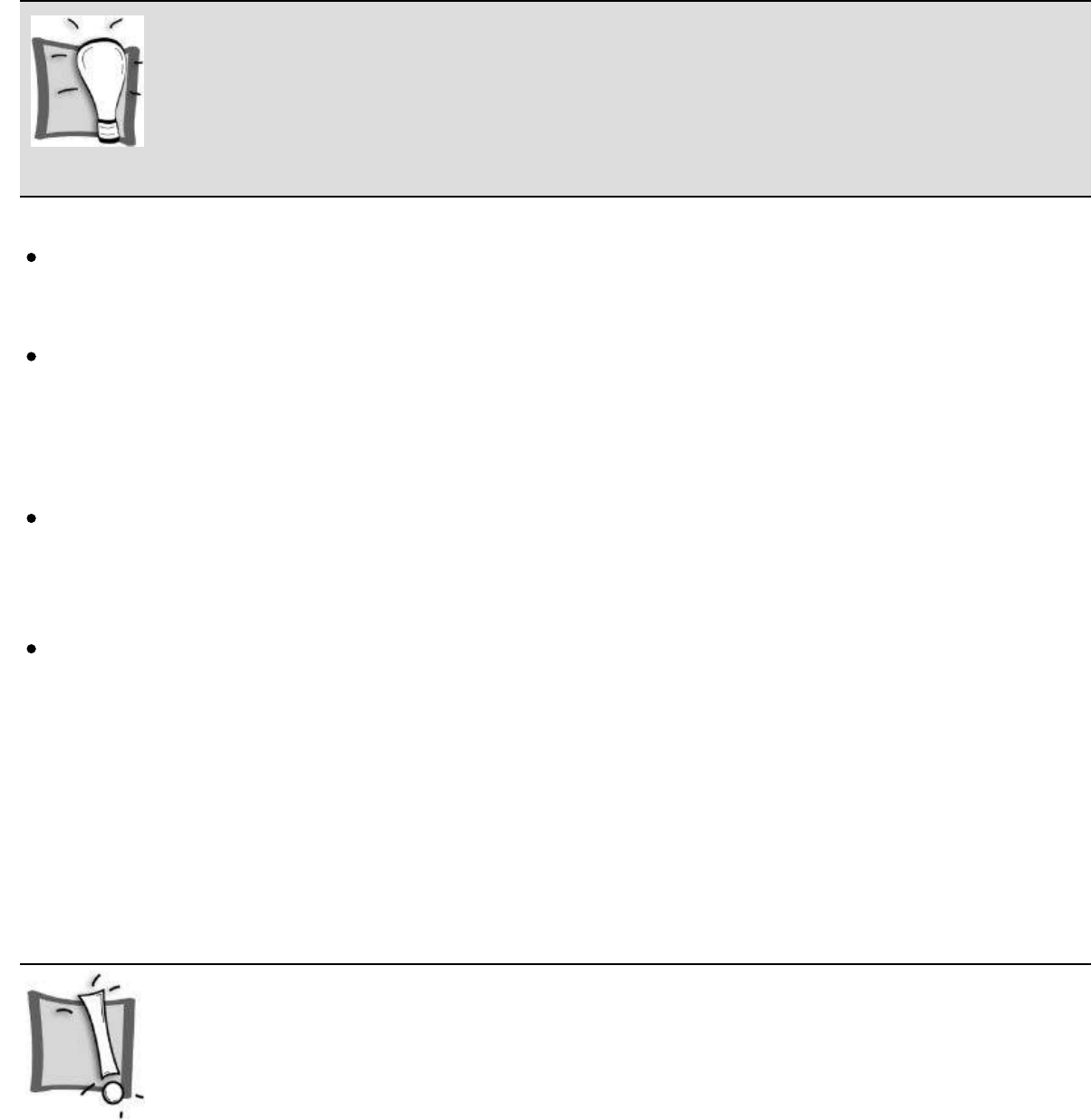
SUSTAINABLE INVESTING
Aside from getting a loan to start your property portfolio, you also need to consider how you are going
to finance further acquisitions.
When buying their second, third or fourth investment properties, many investors run into problems
finding finance because, although they have the money to pay deposits (via savings or redrawing
equity), they fail the debt-servicing test because their incomes cannot support any more loan
repayments. Further loans will push their repayments beyond 33 per cent of their income, which most
lenders consider unacceptable.
Steve’s investing tip
Being maxed out means that you can’t borrow any more money.
Clearly I’ve been able to consistently borrow money, and the secrets to my success are:
Having a non-investment source of income. A danger with only having property income is that
lenders will view you as being ‘rent reliant’ and will only take 70 per cent of your earnings into
account when determining your ability to service a loan.
Only borrowing 80 per cent or less of the purchase price. Quite often it is the mortgage insurer
rather than the lender that will reject a finance application. You can reduce the chance of this
roadblock occurring by only borrowing 80 per cent because mortgage insurers have less say in
such loans. This is why borrowing more than you need may seem like a good idea at the time, but
may come back to haunt you later on.
Being correctly structured. For reasons I’ll explain in the next chapter, buying investment
property in your own name places your assets at unnecessary risk, and may cause you to pay
unnecessary tax and limit your borrowing ability. The structure I use allows me to keep
borrowing, gain valuable asset protection and legally minimise my tax.
Dealing with business bankers. Getting out of retail banking and moving to business banking has
been a very big help. Aside from a better level of service, the people you deal with can actually
give you some helpful tips about how to structure your application so it is viewed in the best
possible way. Furthermore, there is the potential to operate outside of normal lending criteria,
meaning deals that might be rejected at a retail level may get the green light.
Running out of finance will quickly stunt the growth of your property portfolio. Not only do you
need to source the right loans, you need to borrow in such a way that you can continually finance your
property deals.
You don’t need to leave getting your loan applications approved to chance. Don’t be passive, and
remember that success comes from doing things differently.
Book bonuses

By registering your book, you will gain access to the following bonus items:
#1 Bonus 67-minute video presentation I recorded called How to get the bank to say yes.
#2 An insider’s peak at a real life finance proposal I prepared for a property deal.
These bonuses are waiting for you right now at <www.PropertyInvesting.com>.
CHAPTER 8 INSIGHTS
Insight #1
Although the global financial crisis changed the mortgage industry and made credit harder to find, the truth is that
lenders need to write loans to keep making record profits. This means they want your business, and it’s your job to
present yourself in such a way so that you look like a good credit risk.
Insight #2
Start preparing and building your finance network before you need the funds. That way, when you do find a great deal it
will be easier to source the right loan at a great interest rate.
Insight #3
Getting a lender to say ‘yes’ is a matter of taking away all their reasons for saying ‘no’.
Insight #4
It’s possible your credit record contains inaccurate information. Make sure you get a copy at
<www.mycreditfile.com.au>, and dispute any inaccuracies.
Insight #5
If you are new to investing, a great place to start is chatting with the friendly folks at
<www.PropertyInvestingFinance.com>.
Insight #6
Although every financier has its own lending policies, there is scope to operate outside the rules if you can get access to
a senior manager with the appropriate approval authority.

LOAN APPLICATION CHECKLIST
Below is a loan application checklist to help you ensure that your application has the best chance of
being approved. Place a in the box when the step has been completed or you have obtained an
answer to the question.
Step 1 Find a mortgage broker
Call a mortgage broker and discuss what his or her experience is.
Is there any fee for using the broker’s services?
Step 2 Find a lender
What is the maximum LVR with no mortgage insurance?
What is the allowable debt:income ratio?
What are the establishment fees (mortgage fees, valuation fees, etc.)?
What are the ongoing fees?
Is a separate mortgage number issued with each loan?
Does the lender do ‘low-documentation’ loans? If so, what are the additional terms?
Can I do a fixed and/or variable loan? What is the longest period I can fix for?
Would I be able to get pre-approval for a block of funds?
Step 3 Preliminary checks
Have you viewed your credit report? Is it what you expected?
Do you have all the documentation necessary for the loan application (financial statements, tax returns, letter from employer,
etc.)?
Do you have a letter from a real estate agent outlining the likely rent?
Do you meet the debt:income ratio requirements?
Do you meet the LVR requirements?
Do you meet the lender’s requirements about property zoning, minimum population, etc.?
Did you specify that your loan is to be processed on the basis of a credit check only being authorised once conditional approval
has been granted?
Step 4 Disclosure and follow up
Did you submit your application to an individual who is senior within the organisation?
Have you followed up with your contact after one week?
Has a valuation been ordered?
Has your loan been approved?

9
The truth about structuring
An important issue you need to think about when buying property is, whose name will it be purchased
in? The easiest option is your own name, but as outlined in this chapter there are better options.
Steve’s investing tip
Your aim should be to control your wealth rather than own it.
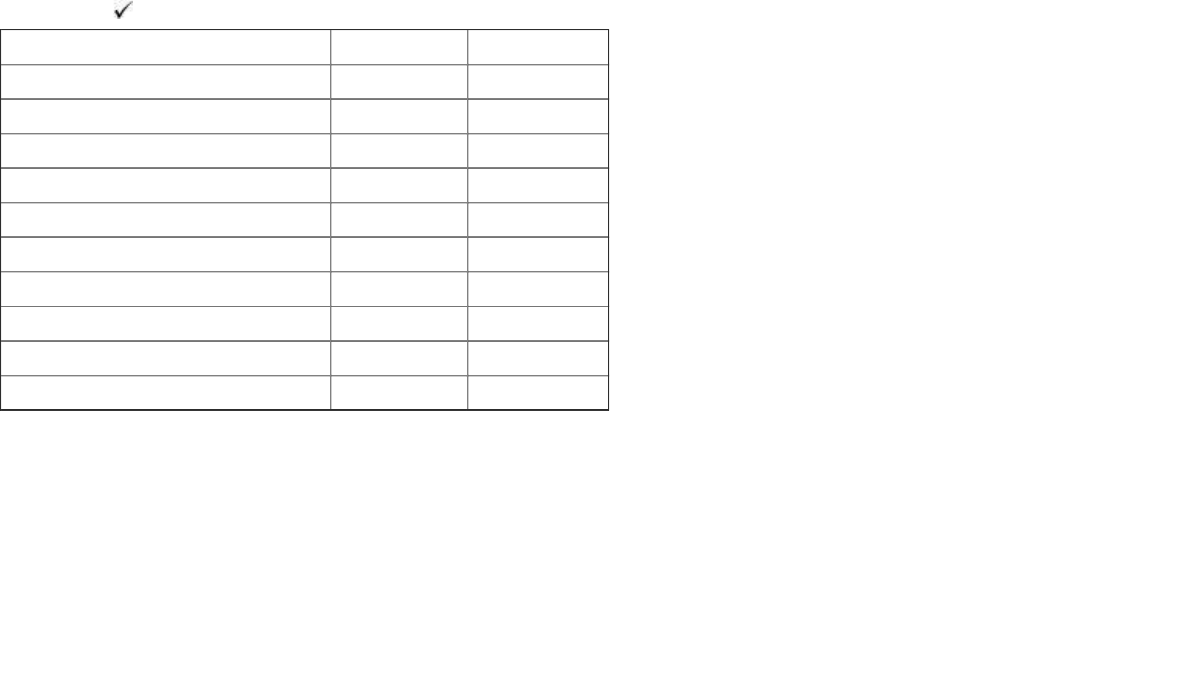
LIFESTYLE AND FINANCIAL ASSETS
Some people think your home isn’t an asset. I disagree. By definition, an asset is something that holds
future value, and a home certainly does that. The distinction I prefer to make is between lifestyle and
financial assets.
A lifestyle asset is something of value that you own for your enjoyment, or because it serves a non-
financial function. Examples include your home, cars, clothes, furniture and jewellery. A financial
asset is something that you own with a view to making money. Examples include shares, property and
managed funds.
Let’s see if you’re able to tell the difference between a lifestyle asset and a financial asset by
placing a in the correct column for the 10 items below.
Lifestyle asset Financial asset
A holiday home
Antiques in your home
A new car
Cash in the bank
Golf clubs
Shares in listed companies
Investment property
Your wardrobe
Money you have in superannuation
Your home
A suggested solution can be found at the end of the chapter.
Be careful not to make lifestyle asset choices based primarily on financial considerations, or to
decide what’s best for your financial assets based primarily on lifestyle considerations, because if you
do your judgement will be clouded.
For example, if you want to buy a holiday home for your enjoyment then you are making a lifestyle
choice. Buy it because you want to (and can afford to), not because you are planning on making
millions from it. Similarly, the more emotion there is in your investing decisions, the harder it will be
for you to buy, hold or sell at the right time.

WHAT IS STRUCTURING?
‘Structuring’ is a term used by accountants to describe the way you own and control your wealth. A
good structure will do three things:
protect your assets
legally minimise tax
maximise your borrowing capacity.
Let’s have a look at each of these.

Asset protection
No-one wants to be sued, but if you are, you don’t want every asset you own to be at risk, which is
why one of the golden rules of structuring is to own your lifestyle and financial assets in separate
structures. That way, if you are sued personally your investments are safe, and vice versa.
Steve’s investing tip
Lifestyle and financial assets should be owned in different structures.
This is even more important if your employment activities cause you to have a higher than normal
risk of being sued — this includes:
professionals giving advice, including doctors, lawyers, accountants and financial planners
tradespeople who might be sued for faulty workmanship, including builders, plumbers and
electricians
those who work in a service industry, where people may be injured by their negligence, including
tourism and catering.
We live in an increasingly litigious world, and if you have wealth someone may try to take it from
you.
Tax minimisation
If you’re like me then you’re happy to pay your fair share of tax, but the thought of paying more than
you have to is about as appealing as having root canal treatment without an anaesthetic.
While you don’t have many options to reduce the tax on your employment income, provided you
have the right structure you’ll be able to split your investment income so that those on the lowest
marginal tax rates receive the biggest distributions. I’m not just talking a few dollars here and there,
I’m talking about thousands and thousands of dollars in tax saved, using completely legal and ethical
means. We’ll look at this in more detail throughout this chapter.
Borrowing capacity
When you buy real estate and borrow in your own name, your income will determine your borrowing
capacity. Once you’ve hit your limit you won’t be able to borrow any more.
There is another option though, which is common in commercial real estate but has a residential
property application too: the property is purchased in another entity’s name, and then those who
control that entity guarantee the debt. Choosing this option means that the loan is not in the name of
the individual (only the promise to repay the debt if the loan defaults), so an individual’s income can
be used to secure multiple loans and borrow much more money. More is written on this later in the
chapter.
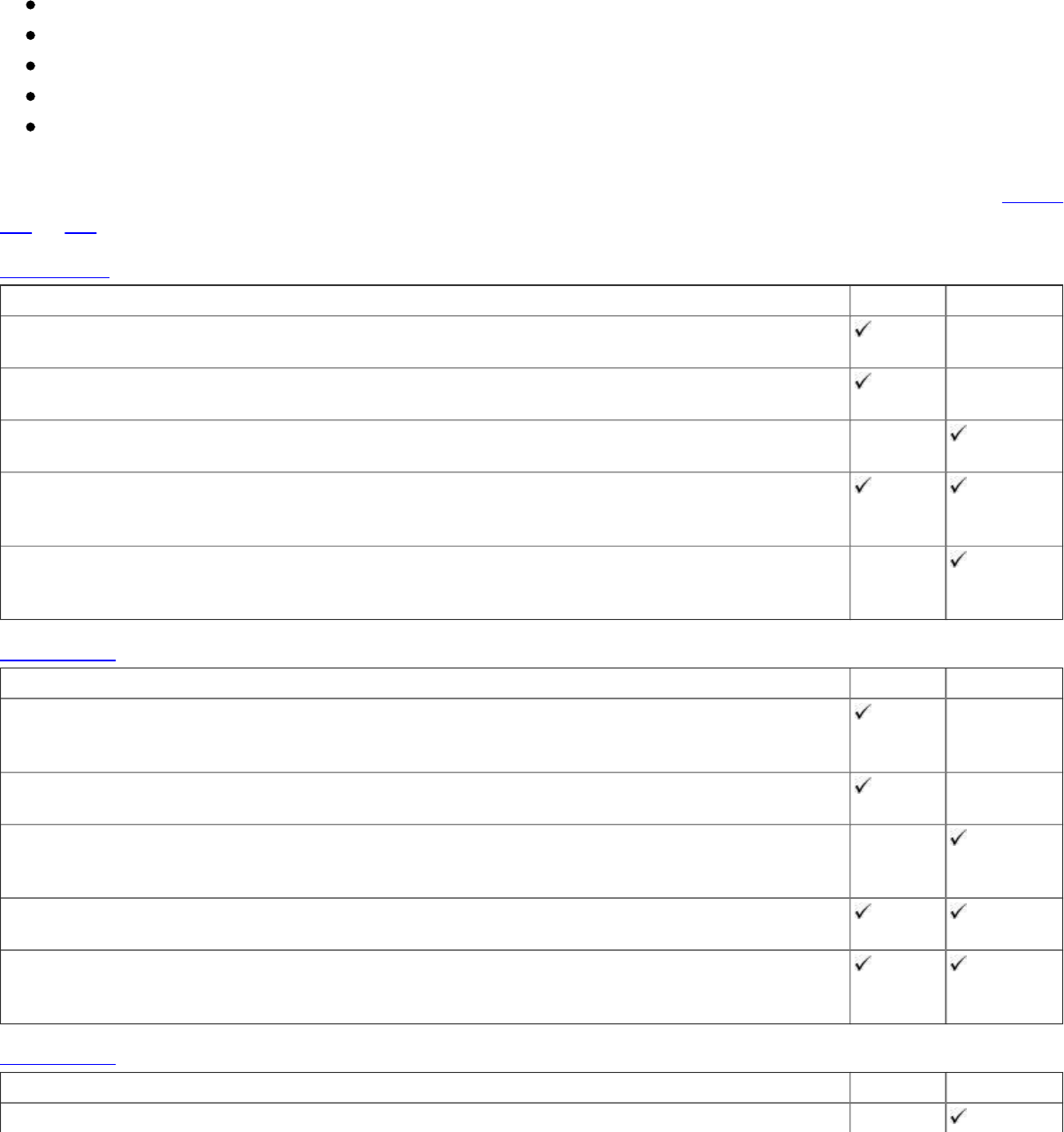
WHAT ENTITY SHOULD YOU BUY IN?
Note: I’m definitely not trying to turn you into an accountant, so I’ve limited my discussion to a
general overview. My hope is that the knowledge I’ve provided here will trigger questions you can
ask your accountant.
Okay — you’ve found a property you want to buy as an investment, negotiated a price you’re happy
with, and are about to sign the contract. The purchaser’s name is one of the first pieces of information
you’ll need to give, and this means deciding what entity you are buying in. Your options are:
as an individual
in a partnership
a company
a trust (including a superannuation fund)
a combination of the above.
I’m not planning on boring you to tears with a textbook explanation of how they work, so I have
given just the advantages and disadvantages of each in summary format in the following pages (tables
9.1 to 9.4).
Table 9.1: buying as an individual
How: Sign the contract in your own name. For example: Sam Smith. Advantage Disadvantage
Set-up costs
Doesn’t cost anything to set up. Just sign your name on the contract and you are away.
Cost to administer
A little more as your tax return will be more complex, but no separate financial statements are needed.
Asset protection
Poor asset protection as there is no distinction between lifestyle and financial assets.
Tax minimisation
Can access the 50 per cent capital gains tax discount, but profit may be taxed at the highest rate. No
opportunities to split income.
Borrowing capacity
Restricted by the income available to service the debt. No opportunity to leverage your borrowing
capacity.
Table 9.2: buying as a partnership
How: Buy in joint names. For example: Mr and Mrs Smith. Advantage Disadvantage
Set-up costs
Quick and inexpensive to set up. Most solicitors use a standard partnership agreement and tailor it as
needed.
Cost to administer
Needs a partnership tax return and financial statements, however these are not very difficult or expensive.
Asset protection
Very poor asset protection. Unlimited liability and the partners are jointly and severally liable for all
debts.
Tax minimisation
Income split between partners. No flexibility to vary split of profits beyond partnership agreement.
Borrowing capacity
Can pool your capital so there is more borrowing ability than as individuals. Debt still in individual
names though.
Table 9.3: buying in a company
How: Buy in the name of a company. For example: Smith Investments Pty Ltd. Advantage Disadvantage
Set-up costs
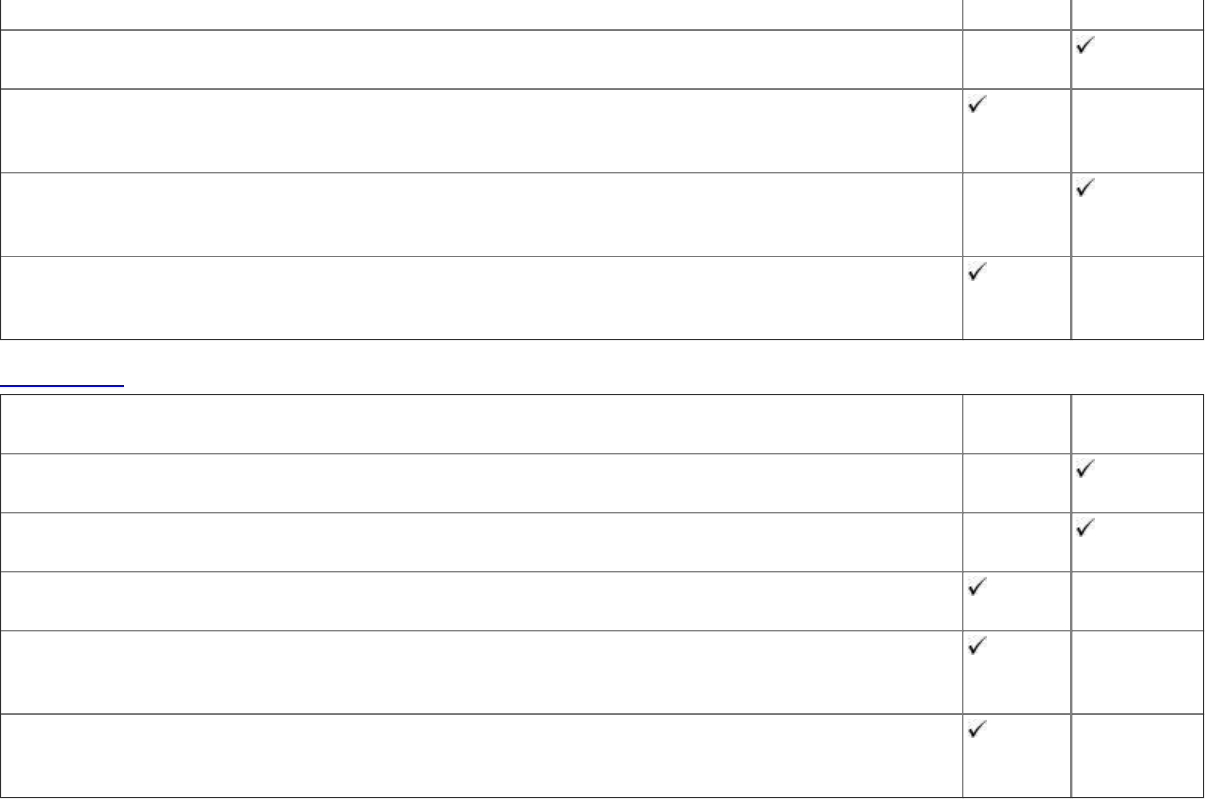
Requires a new company to be created. Easy to do, but can be expensive compared to other options.
Cost to administer
Cost to administer is high as a separate tax return and financial statements are required.
Asset protection
Very good asset protection. The company’s assets are separate from the directors’ and shareholders’
assets.
Tax minimisation
Not eligible for the capital gains discount. Profits are taxed at a flat 30 per cent. No opportunity to split
income.
Borrowing capacity
Debt is in the name of the company and the directors act as guarantors. Allows directors’ incomes to be
used multiple times.
Table 9.4: buying in a family trust
How: Buy in the name of the trustee on behalf of the trust. For example: Smith Pty Ltd as trustee for the
Smith Family Trust.
Advantage Disadvantage
Set-up costs
Expensive to set up. Ideally a corporate trustee and a family trust will be established.
Cost to administer
Cost to administer is high as a tax return and financial statements must be prepared.
Asset protection
Ownership and control are split so there is maximum possible asset protection.
Tax minimisation
Profits distributed according to the trustee’s discretion so income can be directed to specific taxpayers.
Capital gains tax exemption allowed if gains are distributed to individuals.
Borrowing capacity
Debt is in the name of the company as trustee and the directors act as guarantors. Allows directors’
incomes to be used multiple times.
WHY YOU SHOULDN’T BUY PROPERTY IN YOUR OWN NAME
Starting from kindergarten when our mums labelled everything from our lunchboxes to our shoes, we
have a tendency to want to put our name on the things we own — particularly things that we are proud
of. When it comes to real estate, though, the disadvantages of buying property in your own name far
outweigh the benefits.
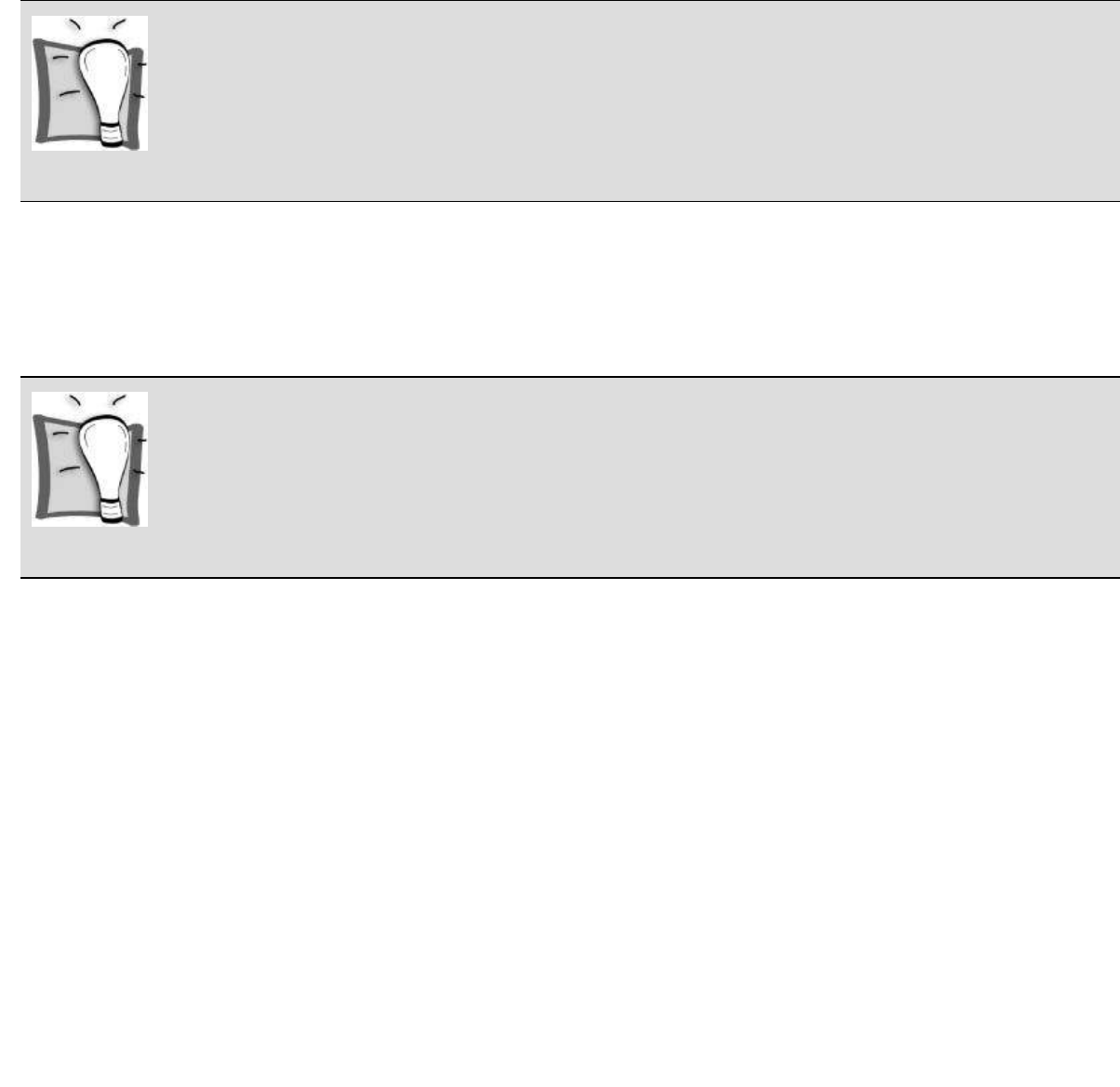
Asset protection
An illustration that may be helpful here is imagining that your lifestyle assets are brown eggs and your
financial assets are white eggs. Owning all your assets as an individual is like carting around every
egg you own in one big basket. Should you trip and drop the basket, all the eggs — brown and
white — are at risk of being smashed.
Steve’s investing tip
There is no distinction between ownership and control of assets that are held in your own name.
If you are part of a couple and you do decide to own your wealth in your own name, accountants
generally think it’s smart to split ownership of the assets across both partners. Traditionally, the way
this is done is to assign the responsibility for control of the investment assets to the partner with the
higher salary (to maximise his or her borrowing ability), while the lifestyle assets are owned by the
lower income partner.
Steve’s investing tip
Aim to have one partner own the lifestyle assets and the other control the financial assets.
For example, in a situation where one partner works and the other stays at home, the financial assets
should be owned by the partner with the income, and the lifestyle assets owned by the partner looking
after the home. This is exactly what my wife and I have done. Julie owns our family home in her
name, while I control the investment assets through various trusts.
The family home
Deciding who should own the family home can be a tricky issue because for any capital gains to be tax
free the property must be owned by an individual who lives in it as his or her principal place of
residence. But having such an important asset owned by an individual has asset-protection
consequences.
As mentioned above, the ideal situation is for the non-working partner to own the high-value
lifestyle assets, and this includes the family home, while the other party controls the financial assets.
Hang on a minute though — what if there needs to be a mortgage and the non-working partner can’t
qualify for a big enough loan because of lack of income? In this case the property can still be owned
by the non-working spouse, with the income-earning partner guaranteeing the loan.
Tax minimisation
If you take a moment and refer back to the tax rates on page 124, you’ll see that individuals are taxed
on a sliding scale, so the more income a person earns, the more tax he or she pays — all the way up to
a maximum of 46.5¢ in the dollar.
Tax at 46.5 per cent (including Medicare levy) is the highest rate applied to any entity, so if you are
thinking about making serious amounts of money from property then you’d be silly to own the money-
making assets in your own name, because you’ll end up paying more tax than you would if you were
better structured.
Even if your employment income isn’t close to $180 000 per annum (which is where the 46.5 per
cent tax rate kicks in), don’t forget that all you need is a bumper year where you sell a couple of
highly profitable assets and all of a sudden your income will spike and you may be caught paying
more tax than you have to.
The one attraction to owning assets as an individual is that you will qualify for the 50 per cent
capital gains tax discount.
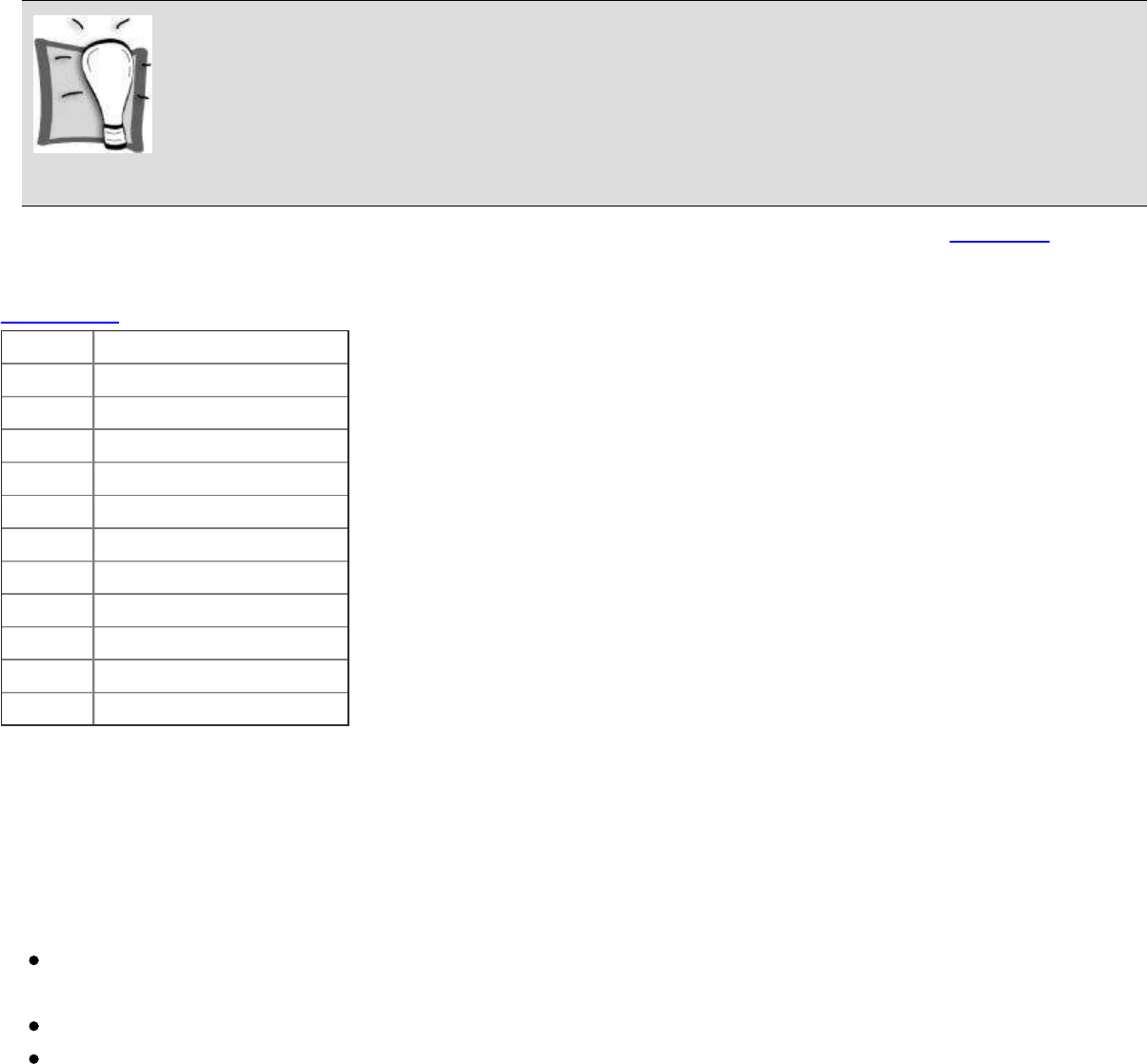
Borrowing capacity
The amount of money you can borrow is limited to how much debt you can service based on the
income shown on your payslip or tax return.
Steve’s investing tip
The rule of thumb lenders apply is that your loan repayments cannot be more than a third of your income.
While a mortgage broker will be able to give you a more accurate assessment, table 9.5 roughly
indicates your potential borrowing capacity based on your salary.
Table 9.5: indication of borrowing capacity
Salary Potential borrowing capacity
$50 000 $150 000
$60 000 $180 000
$70 000 $210 000
$80 000 $240 000
$90 000 $270 000
$100 000 $300 000
$110 000 $330 000
$120 000 $360 000
$130 000 $390 000
$140 000 $420 000
$150 000 $450 000
The important point to note is that even if you have the funds to leave deposits, once you’ve reached
the limit of your borrowing capacity — as determined by your income — you won’t qualify for any
more loans and your ability to purchase more real estate will run dry. People in this situation are said
to be ‘maxed out’.
Are you maxed out? If so, there’s no quick fix, but you may find doing one or more of the following
helpful:
Sell poorer performing properties to repay debt, which you can then reborrow for new property
purchases.
Look to increase your income so you can support more debt.
Consider non-traditional finance sources such as money partners, joint venture partners or
boutique lenders.
THE STRUCTURE STEVE USES
I’ve never bought an investment property in my own name. Instead, right from the start I’ve used
trusts (family and unit) because I can control my investments and share in the profits without having
to own the asset.
The key parties in a trust structure are:
Trustee(s): The company and/or individual(s) who control the trust and operate it according to the
trust deed (a written document that outlines the rules for running the trust).
Beneficiaries: Those for whom the trust is operated and who receive a share of the trust’s income.

Asset protection
The ‘corporate veil’ is an important legal principle which says that if a company is sued the assets of
its directors and shareholders cannot be accessed by creditors to pay for the debts of the company, and
vice versa — the company is not liable for the personal debts of its directors or shareholders. That’s
why, even though individuals can be trustees, it’s better to set up a new company because if a trustee
is sued then assets he/she/it owns may be at risk. However, having a company act as trustee eliminates
this problem because the corporate veil principle says that if a company is sued the assets of its
directors and shareholders are safe, and because the only asset in the trustee company is a few dollars
in a bank account, there’s nothing of worth to take.
When establishing a trustee company, I elect to have only one director — me. This gives me total
control because I make all the decisions about what assets the trust buys, holds and sells.
Steve’s investing tip
Setting up a single-director company to act as trustee allows you to control assets without owning them.
Because the company is trustee (rather than me as an individual), if the trust is sued (for example, if
a tenant slips on the stairs) my personal assets are not at risk because the corporate veil principle says
the personal assets of a director are separate from the company’s assets.
On the other hand, if I am sued personally then my personal assets may be at risk but any assets I
control as director of the trustee company will be safe.

Tax minimisation
It’s the trustee who, applying the rules of the trust deed, decides how a trust’s income will be
distributed. And it’s the beneficiary receiving the trust distribution who has to declare it as income
and pay any associated income tax.
1
By holding my investment properties in a family trust structure, I’m able to decide which
beneficiaries receive what distributions (if any). This means I can give a bigger trust distribution to
beneficiaries who have lower incomes, and less of a trust distribution to beneficiaries who have more
income. I can distribute to non-working spouses and children, as well as other entities — such as other
family members, companies, other trusts (including superannuation funds) and charities. This allows
me to split the income earned by my investment properties in a tax- advantageous way, meaning I can
legally lower my overall income tax bill.
Steve’s investing tip
Tax on trust distributions is paid by the beneficiary, not the trustee.
Better still, I’m able to allocate the capital income to one beneficiary and the other income to
another. That way, provided the capital income is distributed to an individual, he or she will be able to
claim the 50 per cent capital gains tax discount.
Here’s a simple example that illustrates the tax-saving potential of a trust. Let’s say you are married
with no children. You are employed full time and earn $70 000. Your spouse works part time and
earns $30 000. On 20 June you sold an investment property that was bought in 1995 that will result in
an $80 000 capital gain.
Table 9.6 (overleaf) shows how the tax position would work out depending on whether you owned
the property in your name, in joint names or in a trust.
Table 9.6: different tax outcomes
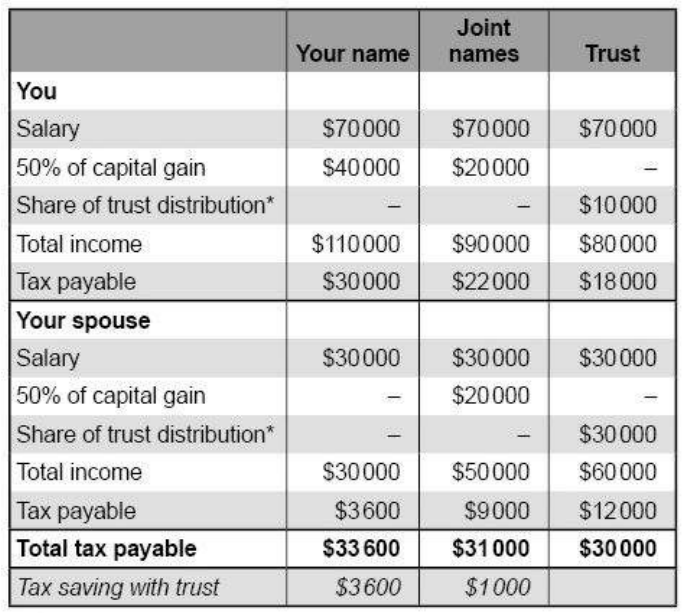
*The trust distribution would be capital gains income, and so only half of it needs to be declared since the capital gains discount
applies.
As you can see, by using a trust structure you would save $3600 in tax compared with owning it in
your own name, and $1000 compared to owning it in joint names.

Borrowing capacity
Aside from the asset-protection and tax-minimisation benefits, using a trust may also increase your
borrowing capacity. Using multiple trusts and multiple lenders to source loans that I am guarantor for
is one of the secrets to how I have borrowed tens of millions of dollars and bought hundreds of
properties. I continue to use this approach with my investing today. Let me explain how.
Say you find an investment property that you want to buy in a family trust that you’ve just set up.
The purchase price is $100 000. The first step is to sign the contract to buy the property, which you
would do in the name of the trustee on behalf of your family trust; for example, Trustee Company Pty
Ltd as trustee for Your Family Trust.
Next, you’ll want to find a loan. Most financiers are happy to lend to trusts provided the trustee(s)
guarantees the loan. Let’s assume in your case that the ABC Bank is happy to lend you up to 80 per
cent of the purchase price (which is $80 000).
Practically, this means there will be two loans, a mortgage and a personal guarantee:
Loan #1: From you to your trust. The trust doesn’t have any money to start with, so you will need
to lend it the $25 000 needed for the deposit ($20 000) and closing costs ($5000).
Loan #2: From ABC Bank to the trustee on behalf of the family trust. The ABC Bank will provide
an $80 000 loan to purchase the property, being 80 per cent of the price. The loan will be signed
by the director(s) of the trustee company on behalf of the trust.
Mortgage: ABC Bank over the title of the investment property. To secure the loan, the ABC Bank
will want a first mortgage over the investment property. The mortgage documents will be signed
by the director(s) of the trustee company on behalf of the trust.
Personal guarantee: Provided by the director(s) of the trustee company to the ABC Bank. The
trust has just been set up and doesn’t have any income. Therefore, to prove that the loan can be
repaid, the income of the director or directors as individuals is used to support the loan. A
personal guarantee is given by the director(s) to use personal funds to repay the loan if it goes
bad.
Assuming you had income of $100 000, the ABC Bank would allow you to borrow $300 000. If you
had the money for the deposits, you could buy two (nearly three) $100 000 investment properties
before your borrowing ability with the ABC Bank ran out.
Steve’s investing tip
Keeping lifestyle assets out of the name of the person doing the investing ensures that high- worth lifestyle assets (such as the
home) cannot be at risk if the guarantee is ever invoked.
The way to get around reaching your borrowing limit is once the ABC Bank has said ‘no more’,
create a new trust structure and approach a different bank, which will then provide you with a further
$300 000 to invest with.
How is this possible? Well, as long as the loan is not in default, the debt to the ABC Bank is owed
by the trustee company on behalf of the trust; you have no personal liability and do not need to record
the guarantee on your personal financial statement.

Steve’s investing tip
A guarantee to repay a debt is not the same as having the debt in your own name.
When asked by subsequent financiers, so long as the loan is not in default the debt to ABC Bank will
not count towards your borrowing limit, and so you can keep leveraging off your income time and
time again.
To get the most leverage from your borrowing ability you will need to:
Only borrow a maximum of 80 per cent, because then you shouldn’t have any issues with
mortgage insurance.
Have a high income but low or no personal debt in your own name. I’m afraid that if you’ve
already borrowed in your own name or have significant personal debt then this strategy will be of
little use, because any existing debt you have is deducted from your borrowing capacity. That’s
why it is important to have a high income and little or no personal debt.
Is this legal?
Yes — it’s legal and ethical, but if you have any doubts then let me point out:
You are not lying or hiding the truth. If asked you must declare all the loans you are guarantor
for.
Your credit record will clearly note what loans you have applied for, and what loans you are
guarantor for. Even if the application form doesn’t request it, your financier will soon find out.
It might be new to you but this practice is a commercial reality. It’s how billions of dollars worth
of property is bought every year, especially commercial real estate where the dollars and debt are
a lot higher.
When I’ve shared this strategy, some people have told me that their mortgage broker has said that
guarantees are viewed as being the same as debt in the eyes of borrowers. Even though I have dealt
with every major bank in Australia, and many sub-lenders too, I have never come across this. Still, if
some brokers won’t help with this strategy, there are lots of other mortgage brokers and lots of
lenders, so shop around. The team at <www.PropertyInvestingFinance.com> are experts and can help.
Some people have gone into a branch and been told this can’t be done. Retail lending is focused on
everyday home loans, so advanced structuring concepts will be beyond the understanding of most
tellers. If you experience difficulties then ask to speak to the business banker. She or he will deal with
trusts and guarantees every day.

WANT MORE INFORMATION?
Talking about structuring is heavy going at the best of times, so well done if you have been able to
push through. I expect that you have many questions racing through your mind, which is great,
because I’ve managed to get you thinking.
Here’s what I recommend for your next steps:
Get your hands on my detailed product called Wealth Guardian, where expert accountant Mark
Unwin and I explain a lot more about structuring for property investors. It’s an essential resource.
Better yet, after registering this book at <www.PropertyInvesting.com>, you’ll receive a discount
code to save a very generous $100 off the cost of this excellent and highly recommended
resource.
Call the gang at <www.PropertyInvestingFinance.com> on 1300 848 781 and chat about how you
can take full advantage of your borrowing ability. It’s free and there’s no obligation.
Make a time to see your accountant to discuss the following three essential issues:
How your personal and financial assets are protected.
How you can legally minimise your tax.
How you can borrow more money to buy more real estate.
How you structure your lifestyle and investment assets will have a big impact on how safe they are,
how much tax you pay and how much money you can borrow. It’s fair to say that, once again, success
comes from doing things differently.
CHAPTER 9 INSIGHTS
Insight #1
Be careful not to confuse lifestyle assets (which you own to enjoy) with financial assets (which you own to make
money). Financial assets should be bought, held or sold based on the facts, not emotion, as you try to make the most
money, in the quickest time and with the least risk.
Insight #2
The goal of a good accounting structure is for you to control rather than own everything, but to still benefit from the
profits in such a way that you pay the least income tax legally possible.
Insight #3
Buying property as an individual is cheap and easy, but the downside is that you have limited borrowing capacity and
poor asset protection.
Insight #4
Given the poor asset protection, avoid partnerships between entities that have unlimited liability.
Insight #5
Since companies are not eligible for the 50 per cent capital gains tax exemption, avoid buying appreciating assets in a
company structure.
Insight #6
Buying negatively geared property in a trust structure is problematic because trusts cannot distribute losses. However, if
you are planning on buying real estate that makes money then I have found trusts to be excellent in providing good asset
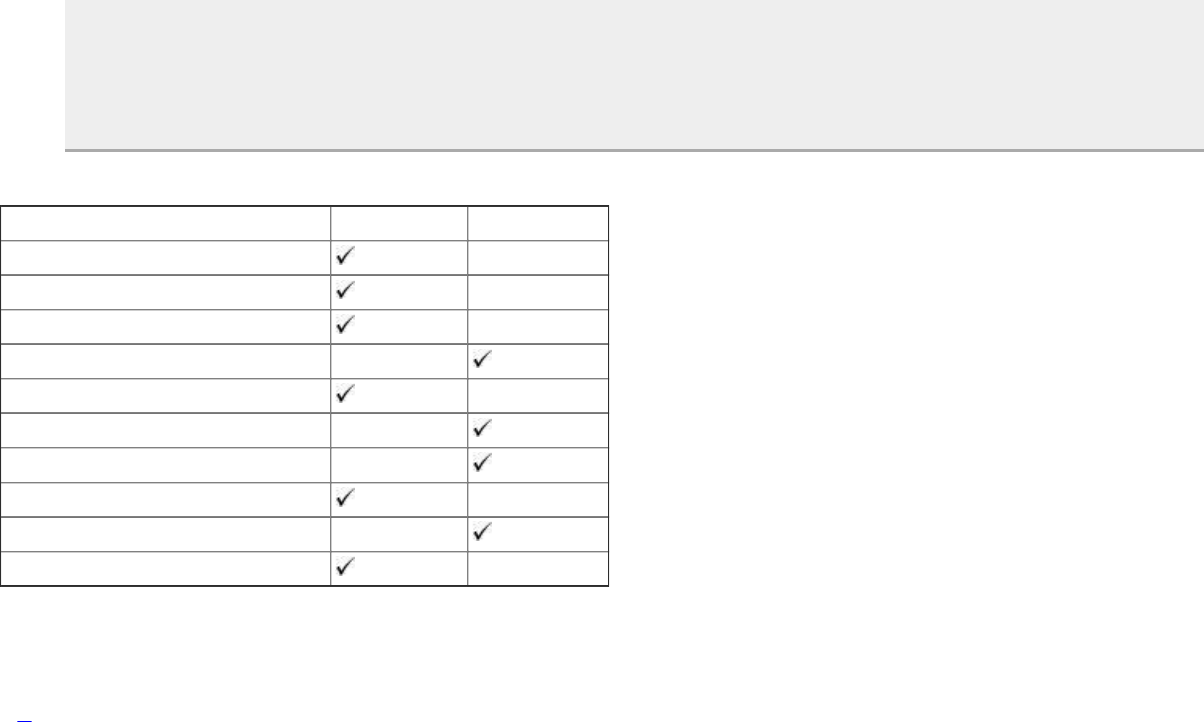
protection and useful tax planning opportunities.
Insight #7
If you plan to have a portfolio that includes multiple properties then be sure to think about your borrowing capacity
when deciding what structure is best.
Suggested solution for exercise on page 160
Lifestyle asset Financial asset
A holiday home
Antiques in your home
A new car
Cash in the bank
Golf clubs
Shares in listed companies
Investment property
Your wardrobe
Money you have in superannuation
Your home
Note
1 The only time a trust has to pay tax is if it has income that has not been distributed.
10
The truth about depreciation
When you drive a new car off the showroom floor its value immediately diminishes by several
thousand dollars because it instantly becomes second-hand. Its value falls further as it clocks up the
kilometres, cops a few dents and scratches, and as newer models with better features are released.
Another way of describing how the car’s worth has fallen is to say that it has depreciated in value.

WHAT IS DEPRECIATION?
Depreciation is an accounting term used to describe the way an asset falls in value due to wear and
tear associated with its use.
Let’s say you had a rental property and the carpet needed replacing. After visiting several retailers
you find a good-quality carpet that is expected to last 10 years. Fully installed it will cost $7500.
Begrudgingly you hand over your credit card and cringe as it’s swiped through the machine.
Given the carpet is going to last 10 years, is it reasonable to allocate the entire $7500 against one
year’s rent? If you did this then the profit for that year would be unfairly low (because the full cost of
an asset that has 10 years life is absorbed in one year), while the profit in years 2 to 10 would be
unfairly high.
Steve’s investing tip
Depreciation aims to match the expense of an asset wearing down with the income generated from its use.
Sorry to sound like a boffin here, but one of the functions of accounting is to produce meaningful
reports so that people can make more accurate decisions. To do this, accountants apply what’s called
the ‘matching principle’, where the income an asset generates is matched as accurately as possible
with the costs associated with earning it.
Returning to the carpet example, to provide more accurate data the $7500 should be spread over the
entire 10-year lifespan rather than being fully absorbed in the year the carpet was bought. Otherwise,
you may get to the end of the first year and decide to sell because the profit was unusually low (or the
loss was unusually high).
Steve’s investing tip
Expensing the entire cost of a major capital item in the year it is acquired will overstate the expense and understate the profit.

DOES REAL ESTATE DEPRECIATE?
A piece of real estate is made up of two components:
the land; and
the building(s) on the land.
Even though land may fall in value with the ups and downs of the property cycle, it does not
depreciate because it doesn’t wear out. That is, the building can be demolished easily enough and the
land restored to its original condition.
Houses, on the other hand, do depreciate in value because:
the internal fixtures and fittings (walls, ceiling, carpet, furniture, light fittings and so on) become
worn, torn and dated through use and the passage of time
the exterior of the building weathers since it is exposed to the elements (sun, rain, wind and so
on).

TAX AND DEPRECIATION
Investors are not allowed to claim an income tax deduction for capital purchases. Instead, these items
(such as a dishwasher, oven or a hot water system
1
) can be written down so that the cost is apportioned
over the item’s working life.
Taking the earlier example of the $7500 carpet, table 10.1 reveals the cashflow and tax-deduction
consequences.
Table 10.1: cashflow and tax-deduction consequences of purchase
Year 1 Years 2 to 10
Cashflow −$7500 –
Tax deduction for depreciation* −$750 −$750
*Using the prime cost method (see page 184).
As table 10.1 shows, the cashflow impact of purchasing the carpet is an outflow of $7500 in year
one. However, for tax purposes a deduction is not allowed for the whole amount in the first year, and
instead the expense is apportioned over 10 equal annual deductions of $750.
This means that you are able to claim a $750 tax deduction in years 2 to 10, even though you did not
physically outlay any cash in those years.
Steve’s investing tip
Depreciation allows taxpayers to claim a tax deduction without physically outlaying cash in that year.
I’ve never quite understood it, but some commentators suggest that depreciation is a real bonus for
investors because you can claim a tax deduction even though you haven’t physically outlaid any cash
in that year. While technically correct, you have still paid for the item, just in an earlier year, so it’s a
question of timing rather than receiving money for nothing from the Australian Taxation Office
(ATO).

Types of tax deductions
Depending on the asset, there are two options available for claiming a tax deduction for the wear and
tear on your property.
Buildings and foundations
A residential rental property built after 17 July 1985 may qualify for a ‘capital works’ deduction at the
rate of 2.5 per cent per annum against the construction cost (no write off is allowed for the land
component).
2
Example
Andrew purchases a newly built investment property for $200 000, of which $75 000 relates to the
land and $125 000 to the building. Andrew is eligible to claim an annual capital works deduction of
$3125 ($125 000 × 2.5%).
Even if the rental property was built before 18 July 1985, if there have been any new buildings,
extensions, alterations or structural improvements done after that date you may still be able to claim a
capital works deduction on those enhancements. Items that would qualify include:
carports and garages
concreting or earthworks
major kitchen and bathroom makeovers.
Example
Brian owns an investment property which is tenanted by Shane, a plumber. Shane has been a good
tenant, and was mentioning to Brian that it was a hassle to have to keep his dirty work tools inside the
house.
Brian thought about this and has come up with a solution. If Shane is willing to pay an extra $50 per
week in rent, Brian will build a brand new lock-up shed at a cost of $8 000. Shane agrees.
Normally Brian would not be able to claim a tax deduction for depreciation on this shed because it
is a structure rather than a fixture or fitting. However, he is able to claim $200 per annum
($8 000 × 2.5%) as a capital works deduction. Furthermore, Brian will receive more rent, which will
be great for his cashflow, and the shed will also increase the value of his property.
Other depreciating assets
Fixtures and fittings inside your rental property that have a finite life and fall in value through regular
use can generally be depreciated over their useful lives. For example, an investor may claim a tax
deduction for the wear and tear of carpet, appliances such as a fridge or stove, light fittings, furniture
and the like.
You have a choice of two methods of depreciation: prime cost (which gives you an equal deduction
over the asset’s useful life) or diminishing value (which gives you more of a deduction in the early
years and less of a deduction in the later years).
Items costing $300 or less are able to be fully depreciated in the year they’re bought, meaning you
can claim an immediate 100 per cent tax deduction. Accountants tell their clients that it pays to have
invoices itemised rather than bundled as a total.

An unexpected bonus
You might be surprised to learn that, provided you meet all the eligibility requirements, you don’t
have to be the person who actually paid for the item to claim a tax deduction under the capital works
or depreciation rules. Instead, if a previous owner paid for the improvements it is assumed that the
cost of those works are reflected in the purchase price you paid to acquire the property, and as such
you should be able to claim any capital works or depreciation relating to those improvements. This
means you might be able to claim hundreds, or even thousands, of dollars in extra tax deductions
without knowing it!
Steve’s investing tip
You don’t have to be the one who paid for the improvements in order to claim a capital works or depreciation tax deduction.
You’ll need to be able to show receipts to make such a claim. However, in situations where you
purchased a property and were not able to obtain the required documentation to prove the value and
date of the capital works from the previous owner, you can engage a quantity surveyor to provide you
with a ‘schedule of depreciable assets’.
Book bonus
By registering your copy of the book at <www.PropertyInvesting.com> you’ll gain access to a valuable audio interview I’ve
conducted with an experienced quantity surveyor, in which he provides more practical information about how investors can
claim tax deductions for capital works and depreciation. Listen in to find out how you might be sitting on hundreds — or
thousands — of dollars of extra tax deductions without knowing it.
TURNING NEGATIVE CASHFLOW INTO POSITIVE
CASHFLOW
One of the tricks used by those selling negatively geared properties is to demonstrate a way the
dwelling can have negative cashflow before depreciation and positive cashflow after depreciation.
This is done so that the property appears more profitable than is actually the case when looking at the
cashflow impact alone. This is complicated, but if you work through the following example and
figures carefully you will see how it works.

Example
Sally is interested in buying an investment property and recently attended a free wealth-creation event
where she was told she could buy a property for $190 000 and have the tenant and the taxman pay it
off.
The property comes with a rental guarantee of $200 per week, and Sally is able to get an 80 per cent
loan with 6 per cent interest- only repayments. Other annual costs include council rates of $1500,
insurance of $550 and rental management costs of $1000.
When Sally asked whether the investment was negatively geared, the cheerful presenter said, ‘Oh no,
this is a positively geared property that puts money in your pocket’.
Let’s have a look at the figures in table 10.2 to see what’s going on here.
Table 10.2: investment summary
Cashflow summary
Income
Rent 1 $10 400
Expenses
Council rates $1 500
Insurance + $550
Loan interest 2 + $9 120
Rental agent fees 3 + $1 000
Total expenses = $12 170
Cashflow loss $1 770
Tax adjustments
Capital works deduction 4 $2 750
Depreciation deduction 5 + $3 600
Acquisition costs 6 + $1 320
Total tax adjustments = $7 670
Summary tax position
Cashflow loss $1 770
Tax adjustments + $7 670
Total tax offset = $9 440
Tax saving 7 = $2 832
After-tax position
Cashflow loss − $1 770
Tax saving + $2 832
After-tax positive cashflow = $1 062
1 $200 × 52 = $10 400
2 ($190 000 × 80%) × 6% = $9 120
3 Allowance for rental management and incidental costs.
4 Building value is $110 000 and attracts a capital works deduction at 2.5 per cent per annum.
5 Property comes with fixtures, fittings and furniture that attract annual depreciation of $3600 per annum under the prime cost
method.
6 Borrowing costs can be written off over five years or the life of the loan, whichever is shorter.
7 Applying a personal tax rate of 30 per cent, the amount of the loss can be used to offset other taxable income and reduce the
overall amount of income tax payable.
In the example, Sally was able to use her depreciation and capital works deductions to turn a pre-tax

cashflow loss of $1770 into an after-tax positive cashflow return of $1062.
However, before being happy with the result, Sally must ask two simple questions:
Does this property require that she keep working in her job?
Answer: Yes, Sally has to keep her job to earn enough income to soak up the $9440 in tax offsets
otherwise they would be treated as carried-forward losses; that is, a loss not soaked up by income
is carried forward rather than triggering a tax refund.
How many properties like this one can Sally afford to own?
Answer: If Sally’s objective is to save tax she should look to buy six properties (assuming she
had the deposit money) as that would just about eliminate her income tax liability.
However, aside from the problems with funding the negative cashflow, unless Sally achieved
good capital growth these properties would end up being poor investments as any cashflow
relates to a temporary tax deduction rather than an investing gain.
TAX DEFERRAL, NOT TAX SAVING
Do you think the ATO hands out money for nothing? No way!
While capital works and depreciation provide you with a temporary tax benefit by allowing you to
defer some of your tax to a later date, it is by no means a freebie cash handout from the federal
government.
Here’s how the government eventually gets its money back.

Cost base adjustments
When calculating capital gains tax, any capital works deductions are subtracted from the amount you
paid for the property. This has the effect of increasing the amount of your gain.
For example, let’s say you bought a new investment property in 2004 for $200 000. The building
component was $100 000. You owned it for five years and claimed a total of $12 500
3
in capital works
deductions. You then sold it for $250 000. Ignoring any purchase or sales costs, your capital gain
would be as shown in table 10.3.
Table 10.3: capital gain calculation
Sales price $250 000
Purchase cost
Purchase price $200 000
Capital works − $12 500 − $187 500
Capital gain = $62 500
The good news is that while you were able to claim a tax deduction of $12 500 which you used to
offset the tax on your salary, when it comes time to repay it those capital works deductions are
included as part of the capital gains tax calculation, and so half of the repayment will be tax free if
you qualify for the 50 per cent capital gains tax discount. As table 10.4 reveals, assuming Sally pays
income tax at the marginal rate of 30 per cent, she is able to claim a tax benefit of $3750 but will only
have to repay $1875 when she sells.
Table 10.4: capital gains tax calculation
Initial tax deduction CGT Calculation
Capital works $12 500 $12 500
CGT discount N/A × 50%
$12 500 $6 250
× 30% × 30%
Tax deduction = $3 750
Capital gains = $1 875
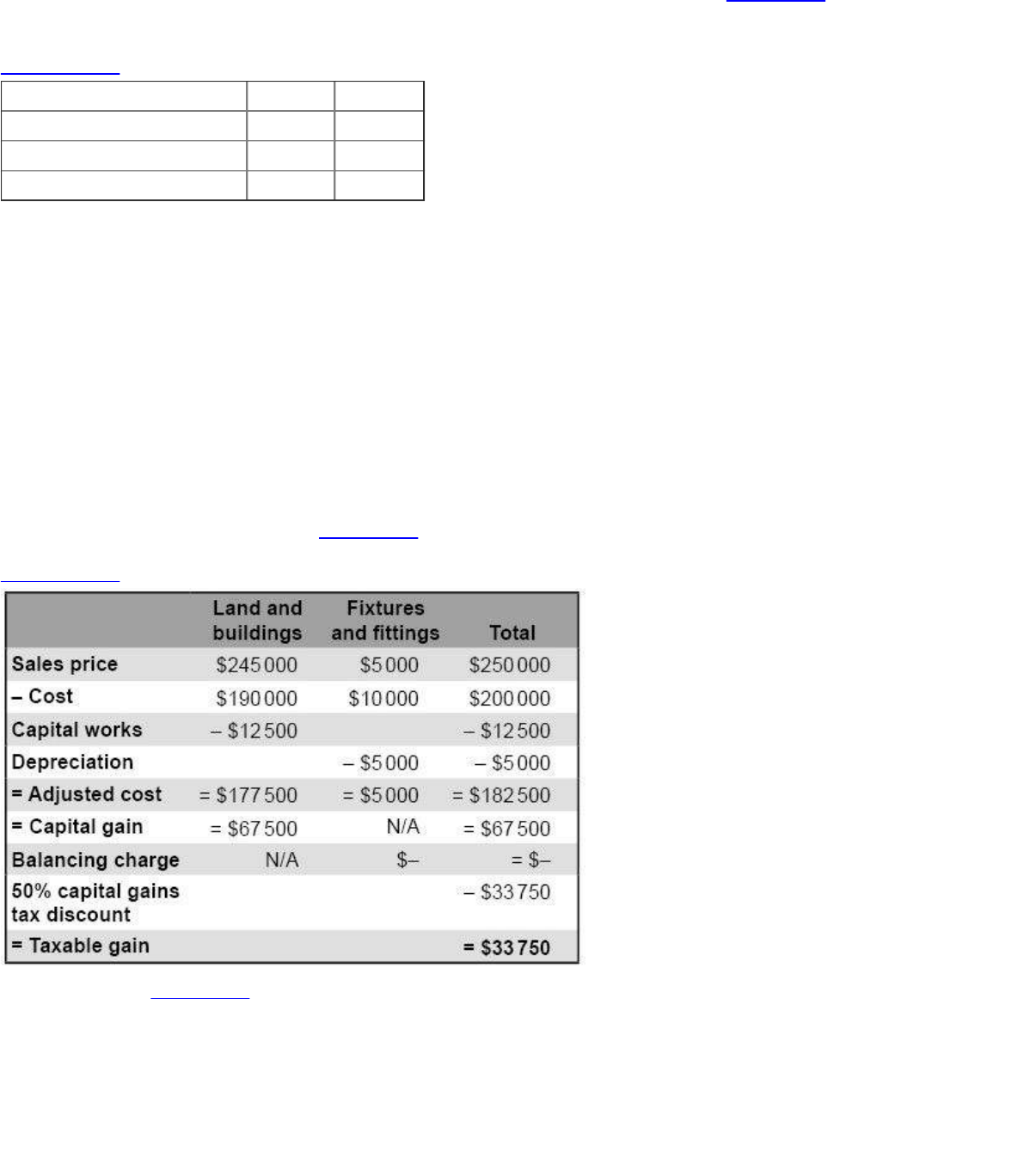
Balancing charges
You don’t get off scot-free with depreciation either, because you may have to repay it when you sell.
Unlike capital works deductions though (which are included in your capital gains), recouped
depreciation is treated as income on your tax return under what’s called a ‘balancing charge’.
Building on the example used above, let’s assume that you also claimed depreciation of $1000 per
annum on the internal fixtures and fittings (total $5000). After selling, table 10.5 shows how your tax
return would look.
Table 10.5: balancing charge
Capital gains $62 500
50% CGT discount − $31 250 $31 250
Depreciation balancing charge + $5 000
Total income = $36 250
The reason why you have to repay the depreciation is because the value of your property went up,
not down. While you can’t avoid this completely, you can lessen the pain.
If you don’t say otherwise, it is assumed that when you sold the property you sold the fixtures and
fittings for what you paid for them, and this means you will have to repay any depreciation you’ve
claimed.
The way to get around this is to have your sales contract specify how much the buyer is paying for
the land and buildings and how much the buyer is paying for the fixtures and fittings (which you
should include at their depreciated values). By doing this you are increasing the capital gain but
eliminating the need to pay back the depreciation. This will result in a better tax outcome for you
because the capital gains tax discount means you only have to pay back half the depreciation claimed.
An example of this is shown in table 10.6 (overleaf).
Table 10.6: separating fixtures and fittings
As shown in table 10.7 (overleaf), you have reduced your taxable income by $2500 by separating out
the fixtures and fittings, and that’s great! This will save you tax. You have not actually reduced your
income, you have simply benefited from structuring your transaction for the optimal tax outcome. I
have said that you should not make investment decisions solely to save tax, and that is still the case.
But, once you have made an investment, you should still do everything legally possible to minimise
your tax liability.
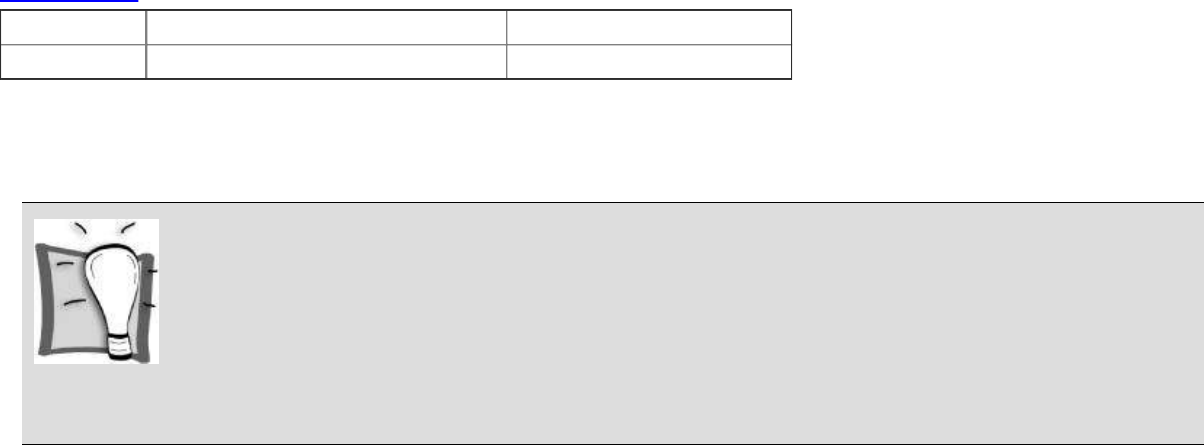
Table 10.7: change in taxable profit
Without separating fixtures and fittings Separating fixtures and fittings
Taxable profit $36 250 $33 750
It’s been a complicated explanation, so well done if you are still with me. Part of being a
sophisticated investor means understanding that depreciation allows for tax deferral, not tax saving.
That said, there is a loophole you can take advantage of so you pay back less tax than you deferred.
Steve’s investing tip
When selling, make sure the sales contract specifies the separate amounts the purchaser is paying for the property and the
fixtures and fittings. Make sure you sell your fixtures and fittings for their written down values.
FINAL THOUGHTS ON DEPRECIATION
I see cashflow and quick lump-sum gains as the meat and potatoes of a good property investment
strategy, and depreciation as gravy on top. My four parting comments on depreciation are given
below.

Depreciation is not money for nothing!
Depreciation is not a non-cash bonus. It’s an expense that is allowed because the asset is deteriorating
with use. Anyone who thinks that an expense is a good thing is a fool.
Steve’s investing tip
Depreciation allows for tax deferral, not tax savings.
One day you will have to replace the asset
Remember Ansett airlines? One of the reasons it went broke was because the company that owned it
claimed the juicy depreciation tax benefits without setting aside cash reserves to replace the fleet. As
the fleet aged, it cost more to run and Ansett became less competitive. Make sure you don’t make the
same mistake by pocketing the extra tax deduction without setting aside money to replace the asset
when needed in order to attract good tenants and above-market rents.
Beware the wolf in sheep’s clothing
While it’s always attractive to pay less tax, watch out for properties that rely on depreciation to make
them cashflow positive. These are wolves in sheep’s clothing that look good at first glance but will
keep you having to work in order to soak up the tax offsets.

There is an alternative
Don’t forget that there are other ways to invest in real estate where you can get genuine positive
cashflow and depreciation benefits. Focus on them and leave the marginal deals to less skilled
investors.
Further recommended resources
The ATO’s Guide to Depreciating Assets is a great resource if you want detailed information on depreciation. You can
download this for free from <www.ato.gov.au>.
My audio interview with an experienced quantity surveyor is available for free when you register your copy of this book at
<www.PropertyInvesting.com>.
CHAPTER 10 INSIGHTS
Insight #1
Depreciation is an accounting term that describes how an asset’s value decreases as it wears out with use. How can an
asset going down in value be a good thing? You should be investing to make money, not save tax.
Insight #2
Depreciation allows for tax deferral, it’s not a tax saving. That said, there is no point paying more tax than you have to,
so it pays to see how much capital works and/ or depreciation you may be entitled to. You never know; you might be
able to claim hundreds or even thousands of dollars of extra tax deductions and not know it.
Insight #3
When selling, you may be able to save tax by specifying separately how much the purchaser is paying for the house and
land and how much for the fixtures and fittings. Fixtures and fittings should be sold at their written down values. Talk to
your lawyer or accountant for more information.
Insight #4
Cashflow is the meat and potatoes of your investing. Depreciation is gravy on top.
Insight #5
I’ve written this chapter to open your eyes to issues many investors are ignorant of. If it has prompted you to think about
how you’re investing or if you have specific questions, make a time to visit your accountant.
Notes
1 Defining what can be expensed and what has to be depreciated has been argued about for many
years in the courts. Best to see your accountant for clarification.
2 Other types of property — for example, apartment buildings, shops and offices — have different

11
The truth about selling
Real estate is not an egg that you sit on and wait patiently until it hatches. You can’t just sit around
and wait for something to happen. Just as there’s a right time to buy, there’s also a right time to sell,
and that is when you can earn a better return elsewhere.
Steve’s investing tip
The right time to sell is when you can earn a better return elsewhere.
Choosing to sell is quite controversial. Many believe selling should be avoided at all costs because
you’ll only trigger capital gains tax.
Instead, refinancing is seen as a better option because you can access most of your equity without
any tax consequences.
1
It’s true that selling has its drawbacks, but I’m certain that your chances of becoming financially
free are almost non-existent if you eliminate it as an option.
Phase one: pre-purchase
The pre-purchase phase encompasses the many hours spent searching for and analysing potential
deals. It’s time-consuming work and you don’t earn a single dollar of profit for your efforts. The pre-
purchase phase is represented in the diagram by the line remaining flat, indicating time spent but no
financial return.
Phases two and three: purchase and growth
Although your pre-purchase efforts don’t create profit until after you’ve bought, your homework
should mean you buy better quality assets that will make good profits (in the form of positive
cashflow and/or capital gains from day one). You can see the line in the diagram starts its ascent as
your returns come rolling in.
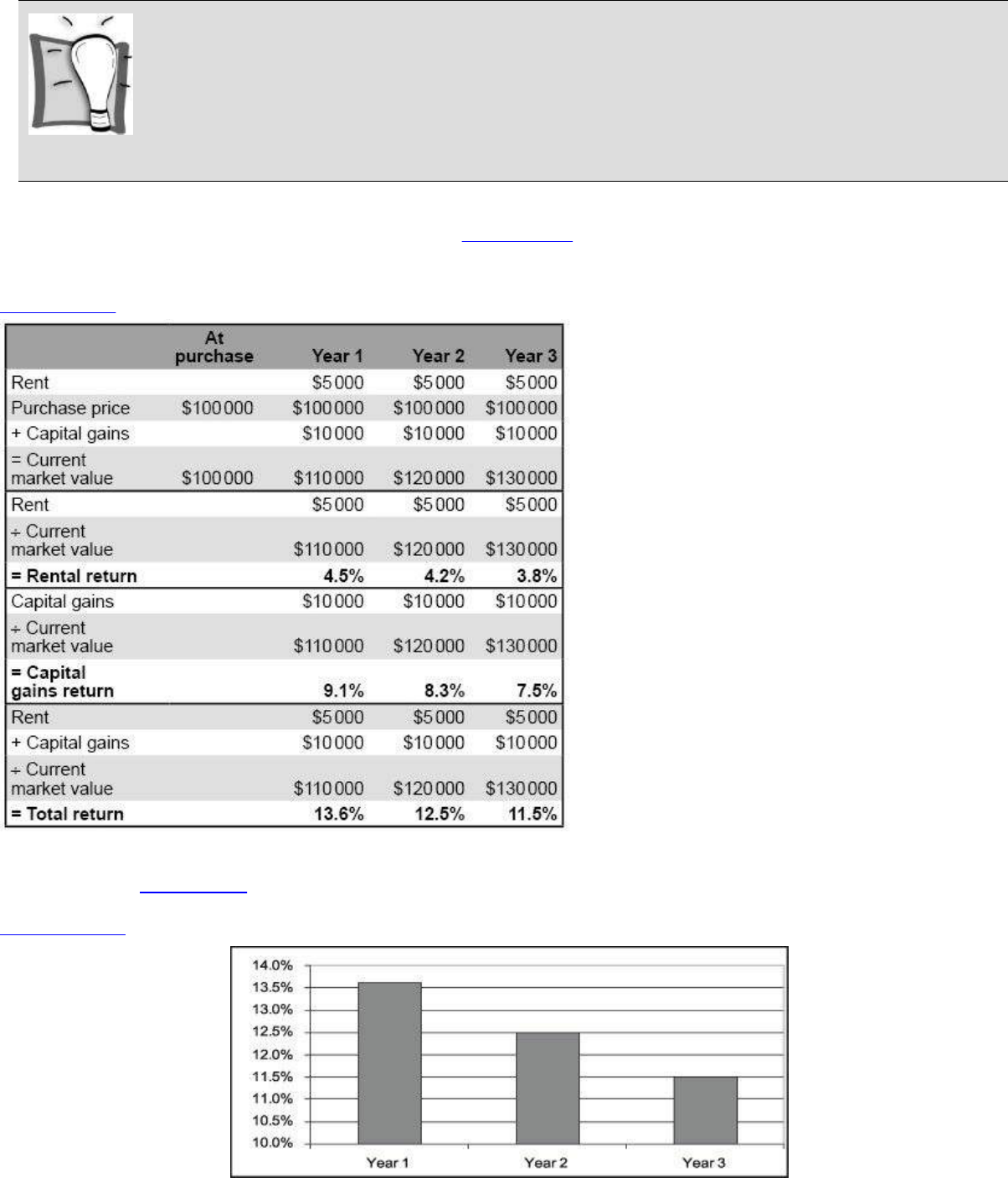
Phases four and five: maturity and decline
In time you will find your cashflow and capital gain returns plateau and then start to decline. This is
because you need a bigger dollar increase to maintain the same percentage return.
Steve’s investing tip
As your property appreciates faster in value than rent, your cashflow return falls.
Let’s say you purchased an investment property for $100 000. It had rent of $5000 per annum and
promised annual appreciation of $10 000. Table 11.1 (overleaf) illustrates how your property
performed over three years.
Table 11.1: property performance over three years
See how the property’s rental, capital gains and total returns decrease over time? This decrease is
also shown in figure 11.2.
Figure 11.2: total return over time
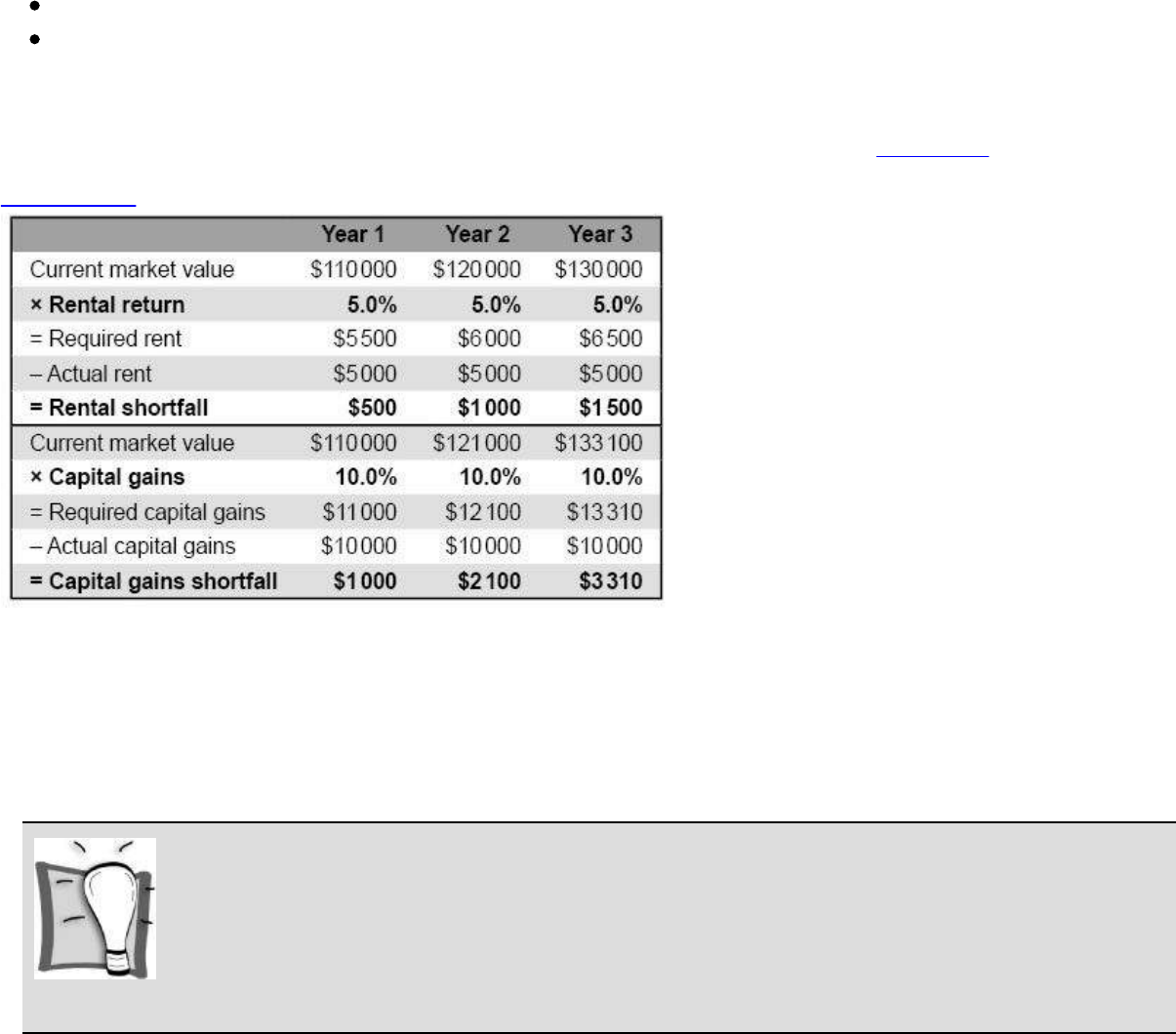
This decline is caused by the following factors:
The additional capital appreciation isn’t adding any extra cashflow (and so the rent return falls).
As the property’s value increases, more annual appreciation is needed to maintain the same
percentage return — if this isn’t achieved the return falls.
Another way of demonstrating this would be to work out how much rent and capital gains are needed
to maintain the 5 per cent rent return and the 10 per cent capital growth (see table 11.2).
Table 11.2: gains required to maintain growth
Although the numbers are simple, this example illustrates a phenomenon I call ‘lazy money’, which
is where you have untapped potential in your investment property that is earning low or no profit, and
so the overall return is dragged down.
Do you have lazy money in your portfolio? Your job is not to own the nicest looking properties, it’s
to maximise your money at all times. Once your return falls below what you can earn on other
investments, it’s time to seriously think about selling and reinvesting in more profitable assets.
Steve’s investing tip
Lazy money drags your return lower because the additional equity doesn’t contribute much, if any, additional income.
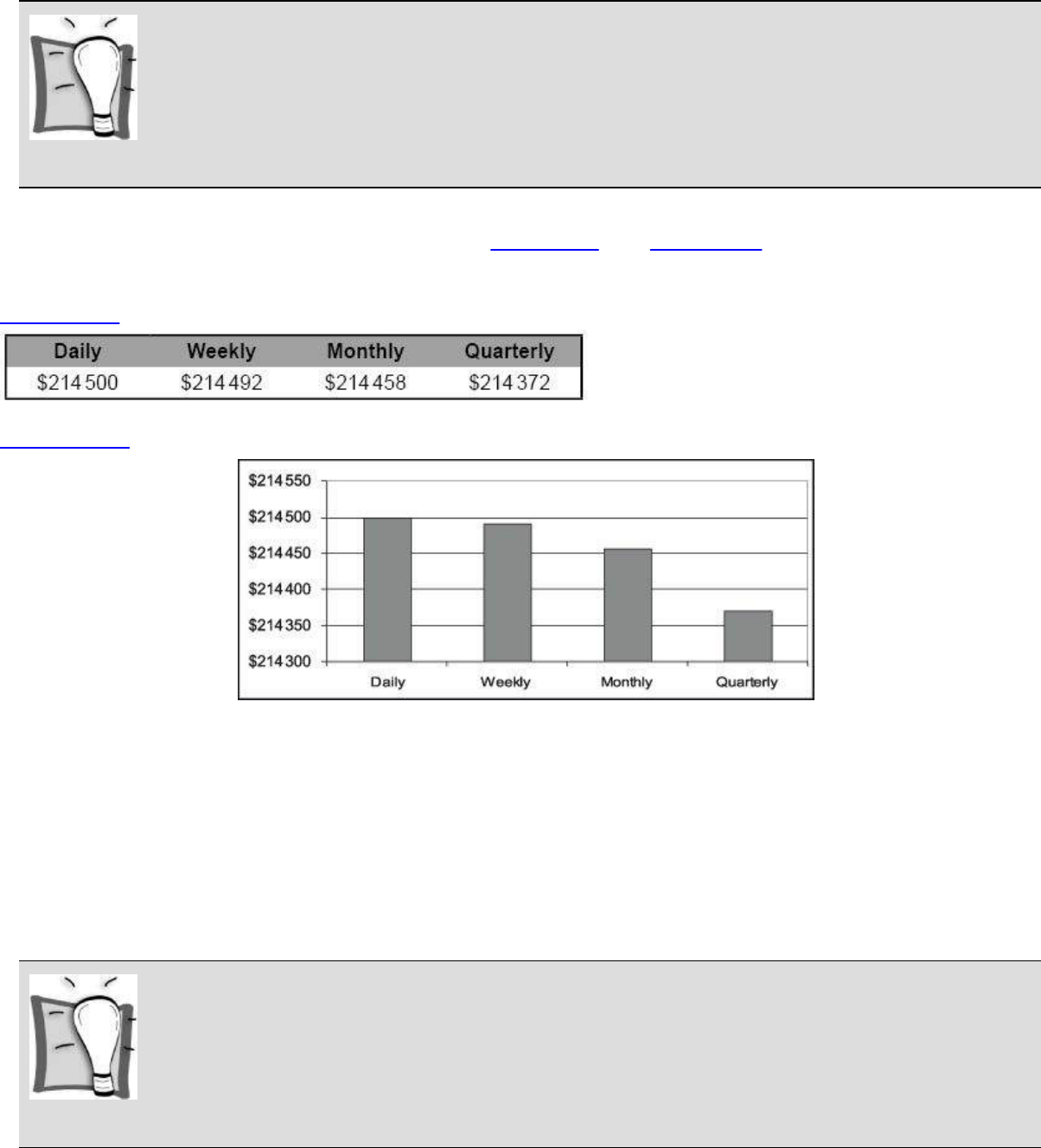
FAST-TRACKING USING COMPOUNDING RETURNS
Have you ever wondered why interest on home loans is calculated daily rather than weekly, monthly
or quarterly? It’s because the more often the loan compounds, the higher the total interest is, meaning
the lenders make more money just by calculating interest more often. Calculating interest daily means
the balance compounds 365 times a year, versus 52 times if the interest was calculated weekly, 12
times for monthly and 4 times for quarterly.
Steve’s investing tip
To cease to move forwards is to go backwards.
But you can also use this to work in your favour. Returns on your investments will also compound,
meaning that you earn returns on your returns! Table 11.3 and figure 11.3 show the difference in the
balance of $200 000 invested at 7 per cent compounding over different periods after one year.
Table 11.3: investment value after compounding over different periods
Figure 11.3: investment value after compounding over different periods
The difference may only seem like a few dollars, but remember this is only one year and one
investment; multiply this by a number of years and a number of properties and you’ll see a dramatic
increase in returns.
Real estate investing sometimes feels like playing a game of snakes and ladders. The ladders are
unexpected gains and tricks you can use to fast-track your returns, while the pesky snakes are
setbacks, delays and financial losses. Selling can be a significant ladder in your investing, because it
will allow you to fast-track your wealth creation through increasing the rate at which your returns
compound.
Steve’s investing tip
The faster your returns compound, the more wealth you’ll create.

Let’s say you buy an investment property for $100 000 and its performance is as shown in table
11.1. That is, at the end of year three your property has appreciated in value by $30 000, while the rent
is still $5000 per annum.
Another way of looking at this is to say that your capital appreciation ($30 000) represents six years
of rent (6 × $5000 = $30 000), so you can either wait six years to access this money or you can use that
equity now to buy other profitable investments to increase the rate at which your returns compound.
Of course, you don’t have to sell; you could also refinance, but I’ll explain why selling may be better
later in the chapter.
What does your current portfolio reveal about you as an investor? Are you sitting on a large amount
of unused equity? If so, you are kneecapping your wealth-creation potential in two ways: first, by
dragging down the returns on your investments, and second, you are missing out on the opportunity to
reinvest and increase how often your returns compound. If you could be making more money, why
aren’t you?
REASONS WHY YOU WOULDN’T SELL
Those who believe you should never sell put forward the following four arguments.
Why pay tax unless you have to?
Income tax laws are quite friendly to investors because you are not taxed on any capital gains you
have made until you sell the asset. It’s simple then: don’t sell and you won’t be taxed.
You can always refinance your equity
Provided you have the income to service the debt, most financiers will be happy to lend against any
untapped capital appreciation. Furthermore, because you have only refinanced rather than sold the
property, there is no capital gains tax to pay.
You can miss out on future gains
It’s said that property values trend up over time, so if you sell you’ll miss out on the future capital
appreciation.
The cost of buying back in
If you plan to sell and buy another property then you’ll have to pay tens of thousands of dollars in
stamp duty. This can be saved if you hold and don’t sell.
REASONS WHY YOU WOULD SELL
There’s no doubt that selling has its drawbacks, but there are also many advantages.
Investment focus
The focus of your investing should be to make money rather than save tax. If you decide to keep an
asset because it saves tax, when selling would increase your wealth, you are making decisions based
on the wrong criteria.
Cash is king
A profit that only exists on paper isn’t real (hence it is called an unrealised gain). One of the lessons
learned from the global financial crisis, where asset values plummeted and wealth quickly evaporated,
is that a profit hasn’t been made until it has been converted into cash.
Selling also provides a lump-sum cash injection you can use to repay other debt or put towards
deposits on other properties you buy.

Refinancing isn’t quite so easy
Saying you can refinance your capital gains isn’t quite as easy as it sounds. Issues to weigh up
include:
Finding a lender. If you have an existing loan then you will need to refinance through the same
lender. There are no guarantees they will lend you the money, and if they don’t you will need to
refinance the entire loan, which can be costly.
Part-lending only. Most financiers will only lend up to 80 per cent of any equity, with the
remainder kept as a safety buffer just in case values fall. This means that even in the best case
scenario, 20 per cent of your equity will remain as lazy money.
Valuation. Any refinancing will be subject to having your property revalued. If the valuation
comes in lower than expected you’ll receive less finance.
Increased credit risk. As you borrow more money you become more exposed to an adverse
movement in interest rates. Your return would need to increase at the same time to compensate
for this extra risk.
Lack of sustainability. Refinancing is like a sugar rush that gives you a quick injection of cash.
Once it is gone though you will find it harder to borrow because you are carrying more debt
without an increase in income.

You can recycle your debt
Repaying debt will have the following positive outcomes:
Unlike refinancing, when you sell the profit will flow through to your tax return, and you can use
this extra income to demonstrate you can service more debt. This will help you buy more
property.
The money you repay can be reborrowed to purchase other investment properties.
It proves to financiers that you know what you’re doing, and as your reputation grows you will
find the credit application process a lot easier.
It’s a tax deferral, not a tax saving
Deciding not to sell won’t save tax, it simply defers the payment to a later date. Furthermore, if the
laws governing how property is taxed become less attractive (for example, the 50 per cent capital
gains tax discount is removed), by not selling you could actually end up paying more tax.

You can fund your financial freedom
What are you going to use to fund your financial freedom?
The option suggested by those who advocate never selling is to draw down on your equity, but this
has never made sense to me because:
At a time in your life when you don’t plan on working again, or on working less, you are going to
increase your interest bill by borrowing more money. This means that you will need to draw
down more debt to pay the interest. And so a nasty interest–drawdown–interest–drawdown cycle
begins.
Interest on borrowings used to pay for lifestyle expenses is non-deductible. This will require that
you draw down even more money because you will be repaying that debt with before-tax dollars.
It’s likely that sooner or later you will need to sell a property to relieve the financial pressure of
all the additional non- deductible interest on your lifestyle drawdowns. But guess what nasty
consequence selling creates? That’s right, it triggers a realised capital gain and you will have to
draw down even more money to pay the tax.
The better way to fund your financial freedom is:
Use recurring positive cashflow income from properties where the cash received is more than the
cash paid.
Use cash reserves where there are no interest or tax consequences of spending the money.
Take a moment to look back over the reasons for selling versus the reasons for not selling. Which do
you think provides the most sustainable way to invest, and the best type of income to fund your
financial freedom?
The truth is that the only reason you wouldn’t sell is because you didn’t want to pay tax. However,
as mentioned in chapter 6, trying to save tax accounts for why so many investors own so few
properties. What is the focus of your investing? What should it be?

CAN’T BORROW ANY MORE MONEY?
I often encounter investors who are in a pickle. They want to buy more property, have cash to leave as
deposits, but can’t borrow because they are maxed out and financiers won’t lend them any more
money.
When I suggest selling as an option to fix the problem (because the debt is repaid and the profit
flows through to the tax return, thereby allowing more money to be reborrowed), the typical answer is,
‘But I don’t want to sell…it’s been a great asset’.
My response is to tell them this story: apparently the way small monkeys are caught in the forests of
Asia is that poachers poke a few peanuts into large glass bottles. The monkeys come at night and reach
into the bottle to grab the peanuts, however the neck of the bottle is not big enough to allow the
monkey’s clenched fist to come out. It gets worse — the bottle is so heavy that the monkey is not
strong enough to drag it away. Freedom is at hand though (no pun intended), because all the monkey
needs to do is let go of the peanuts and it can escape. Sadly, the monkey isn’t willing to do this, so all
the poacher needs to do is catch the monkey in a sack while it shrieks at the bottle and the peanuts.
Are you shrieking at your property portfolio at the same time as being trapped by it? When you take
away the emotion, all that is left is doing what is in your best interests financially, and if that means
you need to sell, then so be it.
Very few investors believe that selling is a good idea, but then again very few investors ever
actually manage to use real estate to become financially free. You’ll need to make up your own mind,
but you know what I say: success comes from doing things differently.
CHAPTER 11 INSIGHTS
Insight #1
The right time to sell is when you can earn better returns elsewhere.
Insight #2
In time you will find your cashflow and capital gains returns plateau and then start to decline. This is because you need a
bigger dollar increase to maintain the same percentage return.
Insight #3
If you have large amounts of untapped equity then it’s highly likely that you have lazy money. In other words, you have
the potential to be earning much better returns. If you could be earning more money from your investments, why aren’t
you?
Insight #4
Maximising your return, not saving tax, should always be the motive driving your investment decisions.
Insight #5
It’s not smart to use borrowed equity to fund your financial freedom. The better options are positive cashflow and gains
that have been converted into cash.
Insight #6
Don’t be a monkey investor. If you have to sell to achieve your investing goals, then so be it.
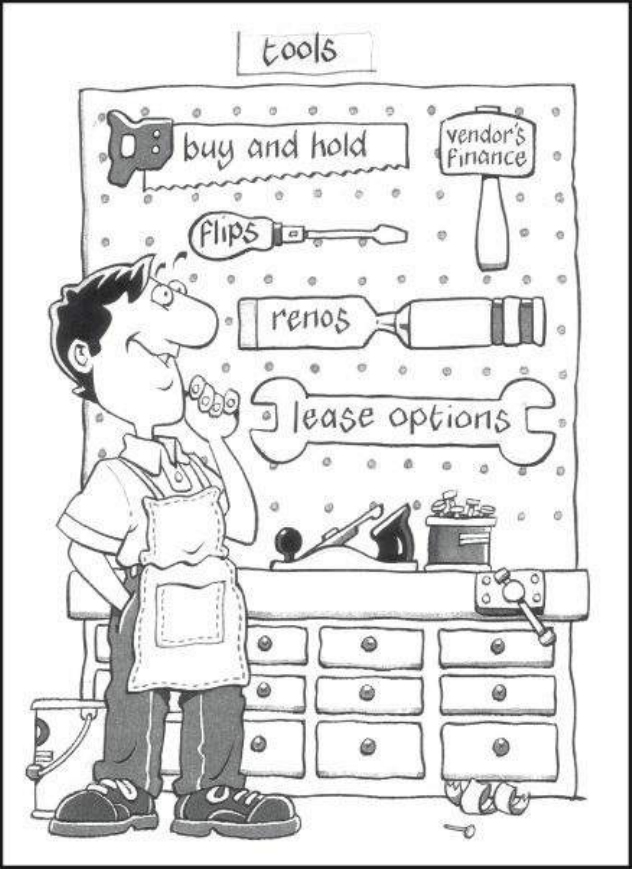
Part III
Strategies for making money in property
Introduction to part III
Now that you’re aware of the different ways to make money in real estate, as well as the positive and
negative gearing models, this part will focus on seven property investing strategies you can use to
make cash and cashflow profits.

Cashflow profits
Rentals (chapter 12)
Vendor financing (chapter 13)
Lease options (chapter 14)

Lump-sum cash profits
Simultaneous settlements (chapter 15)
Subdivisions (chapter 16)
Renovations (chapter 17)
Property developing (chapter 18)
Your choice of which strategy to implement depends on two factors:
The profit outcome you want to achieve (capital gains, lump-sum cash or positive cashflow
returns).
The needs of the person who’ll be paying you money in exchange for the use or ownership of
your property.

A word of caution
Part III is an outline, as opposed to a complete guide, to seven strategies that can help you to
maximise your property returns.
My aim is to help you to appreciate that there’s a lot more to the world of real estate investing than
simply buying a property and renting it out. If you’re interested in finding out more about these
strategies then I encourage you to ask questions in the discussion forum at
<www.PropertyInvesting.com/forum>.
With this in mind, let’s start by looking at rentals as it is the most common way that people invest in
real estate.
12
Buy and hold (rentals)
The concept behind the ‘buy and hold’ investment strategy is straightforward — buying a property and
renting it out while it appreciates in value. However, there is a lot more to being a successful investor
than holding and hoping. In fact, with a little skill and extra effort, you’ll be able to manufacture your
own profits and supersize your returns.
TYPES OF BUY AND HOLD PROPERTIES
There are different types of buy and hold properties that you can invest in. Let’s have a look at them.

Residential rental properties
When I say ‘residential rental property’, what comes to mind? A home that’s leased to a tenant in
exchange for paying rent? But what type of home? As you can see overleaf, there are many different
types.
Steve’s investing tip
A residential rental is a home to a person.
Examples of residential property include:
single family houses (on a separate parcel of land)
duplexes (two houses on separate titles that share a common wall)
flats (usually clusters of ground-floor dwellings that are not detached)
units (usually clusters of ground-floor dwellings that are detached)
apartments (usually dwellings within a large multi-storey complex).

Commercial rental properties
Commercial property is real estate leased to a business.
Steve’s investing tip
A commercial rental is a home to a business.
Types of commercial property include:
offices
retail sites (where goods are offered for sale to the general public)
industrial sites (typically where goods are manufactured or assembled, such as a factory)
hotels and motels, including bed and breakfasts
caravan parks.

Other rental properties
There are also many other types of rental properties that don’t quite fit into either the residential or
commercial categories, including:
self-storage facilities
rural and farm land
vacant land
retirement accommodation
holiday accommodation
public housing (dwellings owned privately and leased back to government organisations), which
includes Defence Housing Australia (DHA) properties and public sector accommodation.
As you can see, there are many opportunities other than simply buying single family houses. Sure,
each class of property carries with it different risks and rewards, but there’s certainly no secret
handshake or special prerequisite that precludes you from purchasing commercial or other property
types rather than just residential real estate.
People sometimes ask me what type of property I prefer, and my answer is always, ‘I don’t
discriminate … as long as it makes a profit, I’m interested in owning it’.

HOW YOU CAN MAKE A PROFIT
The two ways you can make money from rental properties are:
capital appreciation (capital gains)
positive cashflow returns.
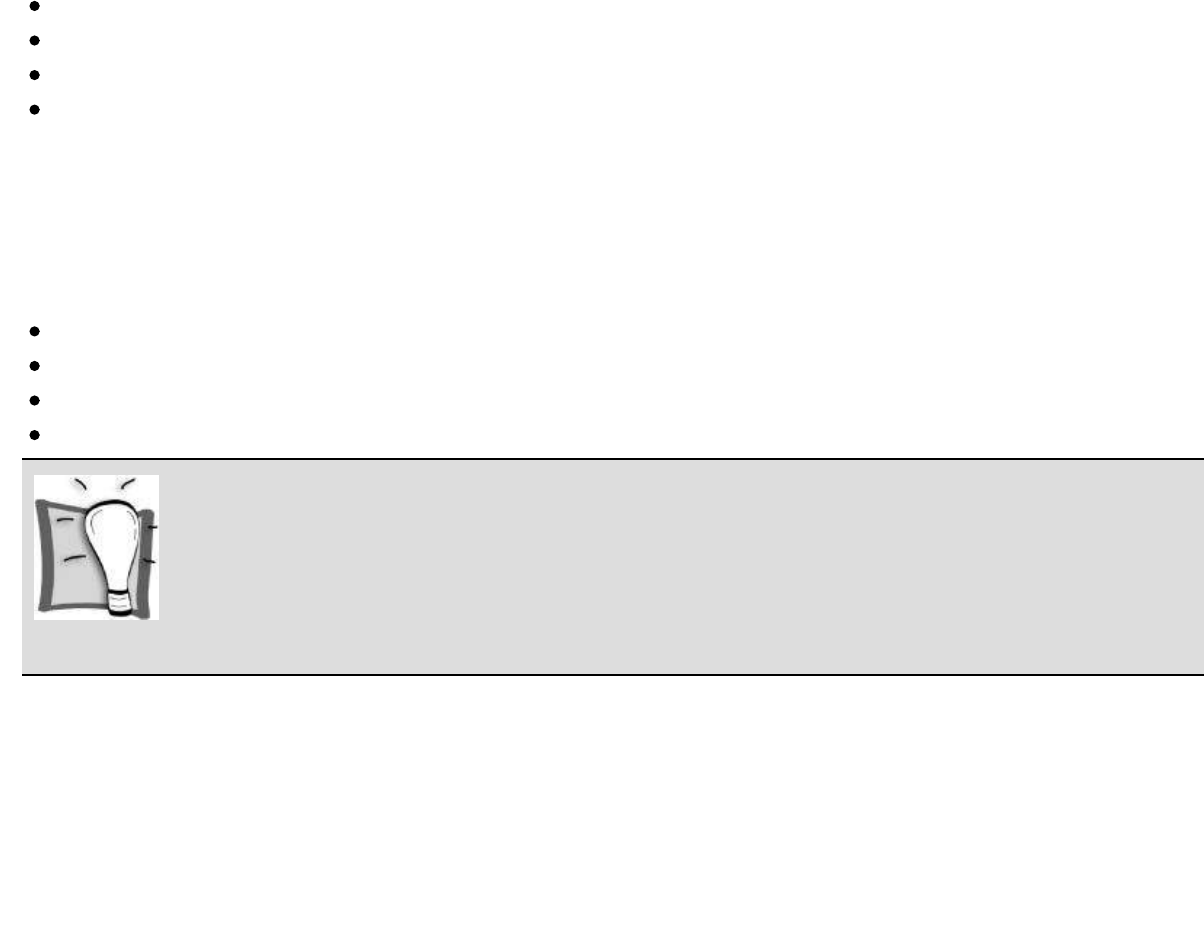
Capital appreciation (capital gains)
You can profit from capital appreciation if your property increases in value over and above the total
costs of:
acquiring it (includes purchase price and purchase costs)
holding it (any annual negative cashflow from more cash out than cash in)
selling it (agent’s commission and other sales costs)
inflation (erosion of buying power over time).
Most investors buy, hold and hope that the general property market increases in value, and their
investments along with it. This is a hit and miss approach though because, as outlined in chapter 7,
property has gone up in value only about one-third of the time over the past 30 years.
Smart investors don’t just sit around and wait for capital appreciation. Instead they manufacture
their own capital gains by buying problems and selling solutions. Examples include:
buying vacant land and subdividing it and/or building on it
buying run-down properties and renovating them
buying vacant properties and renting them out
buying blocks of units and selling them individually.
Steve’s investing tip
The secret to manufacturing capital gains is to always add more in perceived value than actual cost.
One of the biggest myths in property is that location drives price growth. If this were true, why do
the less desirable suburbs sometimes have the biggest percentage increases in value? The truth is that
scarcity, not location, drives prices higher. The key to maximising your growth returns is to think of
the person who will purchase the property from you, and then do what’s needed to make the property
more appealing or easier to use for that person.
In chapter 28 you’ll find a great example of how Ballarat investors Dean and Elise Parker
manufactured $76 522 in capital appreciation by selling some of the cheapest homes in the district.
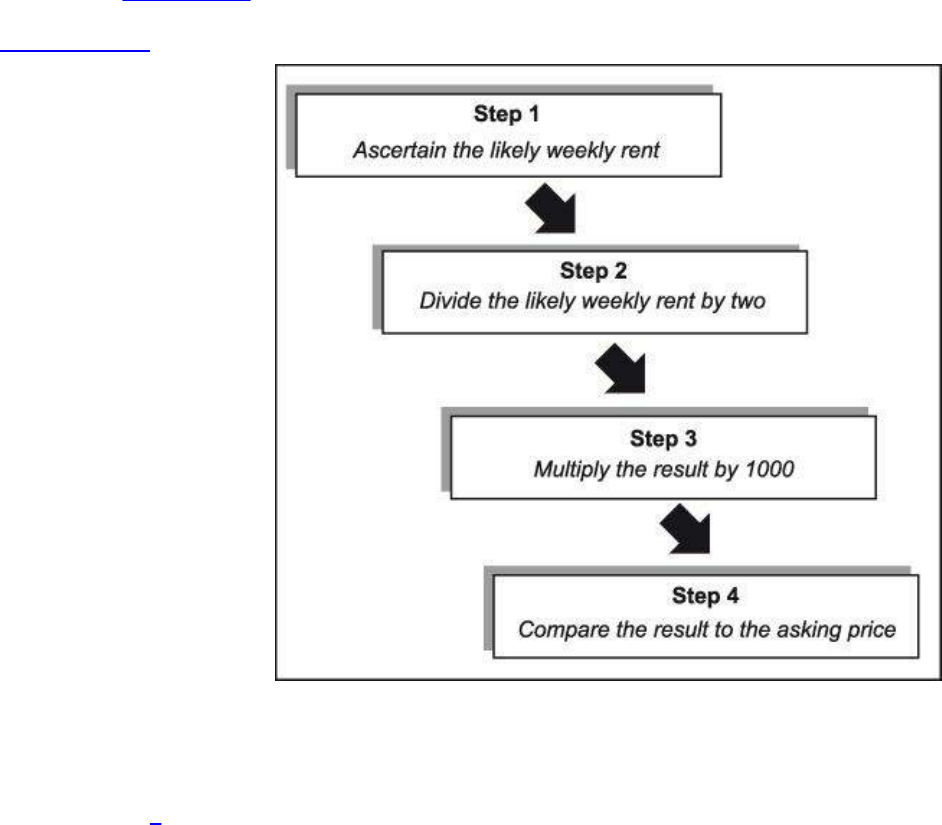
Positive cashflow returns
Positive cashflow returns can either be bought or they can be created.
Buying positive cashflow returns
The first edition of this book contained a very handy formula which I called, ‘The 11 Second Solution’
(shown in figure 12.1, overleaf).
Figure 12.1: The 11 Second Solution
Using the weekly rent, The 11 Second Solution calculated the maximum purchase price you should
expect to pay for a property and still potentially achieve a positive cashflow outcome.
For example, if a property was rented for $200 per week the maximum you would pay for it would
be $100 000.
1
Mathematically, The 11 Second Solution calculated a purchase price that provided a 10.4 per cent
rental return. This was thought high enough so that there would still be a positive cashflow surplus
after interest and ownership costs were deducted.
While easy to apply, finding deals that pass The 11 Second Solution has become increasingly harder
because values have increased much faster than weekly rents. So I now use …

. . . STEVE’S NEW 1 PER CENT RULE
One of the few bonuses of the global financial crisis was that home loan interest rates fell to 49-year
lows. Furthermore, because interest is the biggest cost for property investors, the huge savings from
rates being slashed has meant that it’s possible to again buy positive cashflow properties.
If you tried to apply The 11 Second Solution in the current market then you’d get a false negative,
meaning being told the property wouldn’t be positive cashflow when it actually might be. This is
because a 10.4 per cent return is too high given interest rates have fallen to such lows.
Luckily, I’ve created a new formula which is almost as easy to apply and which is more adaptable as
the market changes. I’ve called it ‘The 1 Per Cent Rule’, and it has four steps, as shown in figure 12.2.
Steve’s investing tip
Interest rates won’t be low forever, so your window of opportunity to buy positive cashflow properties won’t last long!
Figure 12.2: The 1 Per Cent Rule
Step one: what interest rate can you borrow at?
The first step is to find out the percentage interest rate you can source to finance your real estate
purchases. At the time of writing it will probably be between 6 per cent and 7 per cent. If you don’t
know your rate, base it on the standard variable home loan rate from one of the major banks as a
starting benchmark, or for something a little more specific to your situation call the gang at
PropertyInvestingFinance.com on 1300 848 781.

Step two: to derive your 1 Per Cent Rule, simply add 1 per cent
The next step is to add 1 per cent to whatever rate you can borrow at. For instance, if you can access
finance at 5 per cent, your 1 Per Cent Rule would be 6 per cent (5 per cent + 1 per cent = 6 per cent). If
you can access finance at 5.5 per cent, your 1 Per Cent Rule would be 6.5 per cent (5.5 per cent + 1.0
per cent = 6.5 per cent).
Steve’s investing tip
Your ‘1 Per Cent Rule’ (your borrowing rate + 1 per cent) becomes your minimum return on investment.
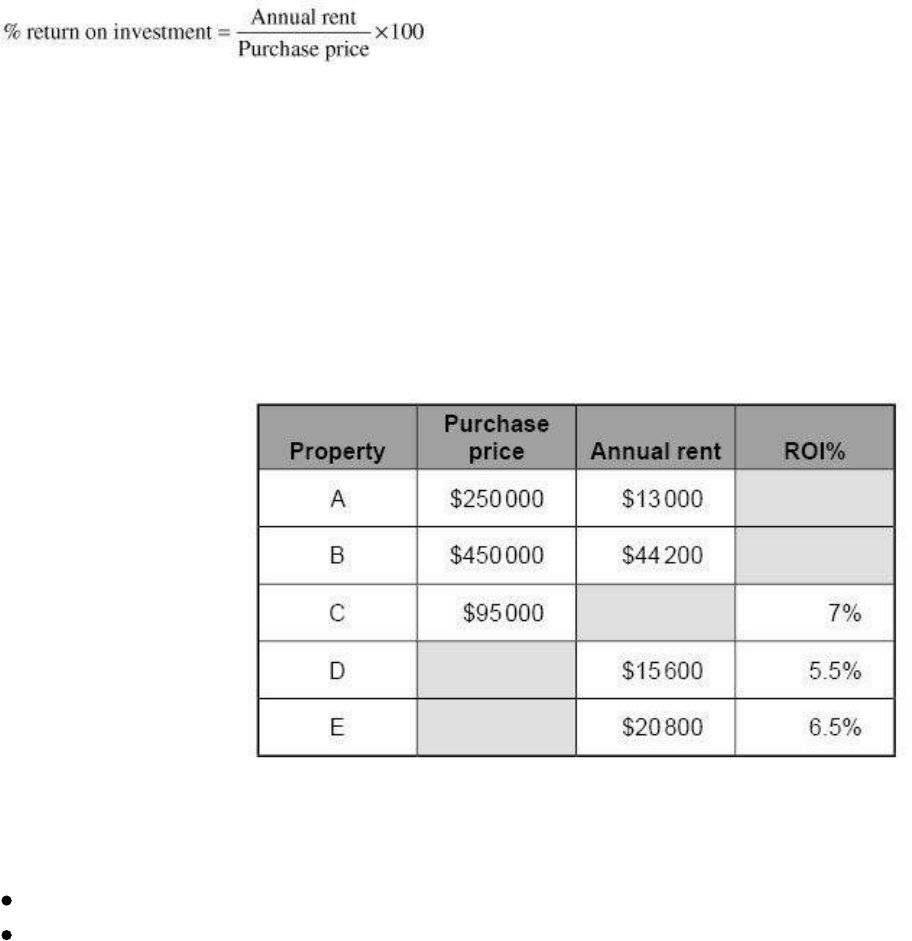
Step three: calculate the target property’s ROI
Return on investment (ROI) is a calculation that reports how much income is generated for every
dollar of assets. It can either be expressed in dollar or percentage terms.
The formula for calculating ROI is:
Where:
Annual rent = Gross rental income (meaning rent before any expenses)
Purchase price = Contract purchase price before closing costs
If you want to be more accurate you could include an allowance for closing costs (say, 5 per cent) in
your purchase price, but to reduce complexity and increase the speed of the calculation I generally
only take closing costs into account in the second phase of my due diligence, which only kicks in if
the deal first passes the 1 Per Cent Rule.
Okay, now it’s your turn! Using the ROI formula provided above, have a go at calculating the
missing numbers in the table below.
A solution can be found at the end of this chapter.
As the table above reveals, the ROI formula can be used to calculate more than just the percentage
return. You can also:
use the purchase price and ROI% to calculate the annual rent
use the property’s annual rent and yield (ROI) to calculate value (purchase price).

Step four: decision time
Having completed steps one to three, you now have enough evidence to make a decision about whether
or not the property is likely to be cashflow positive.
The final step is to compare the property’s ROI with your 1 Per Cent Rule, bearing in mind the
following guidelines:
If the property’s ROI is greater than your 1 Per Cent Rule, the project is likely to have positive
cashflow and can progress to the second round of your due diligence process.
If the property’s ROI is less than your 1 Per Cent Rule, the project is unlikely to have positive
cashflow and should be discarded.
Alternatively:
If your 1 Per Cent Rule is less than the property’s ROI, the project is likely to have positive
cashflow and can progress to the second round of your due diligence process.
If your 1 Per Cent Rule is greater than the property’s ROI, the project is unlikely to have positive
cashflow and should be discarded.

Key assumptions
The key assumptions that underpin my new 1 Per Cent Rule are that:
you will only borrow 80 per cent of the purchase price on an interest-only loan at the interest rate
you nominated in step one
7 per cent of the annual rent will be spent on management fees
2.5 per cent of the annual rent will be spent on repairs
5 per cent of the annual rent will be spent on other costs.
If you operate outside of these assumptions you may arrive at the wrong conclusion.
Steve’s investing tip
The extra 1 per cent you add is the minimum. If you plan to borrow more than 80 per cent of the purchase price, or if there
are unusual expenses, you will have to increase your required ROI to compensate.
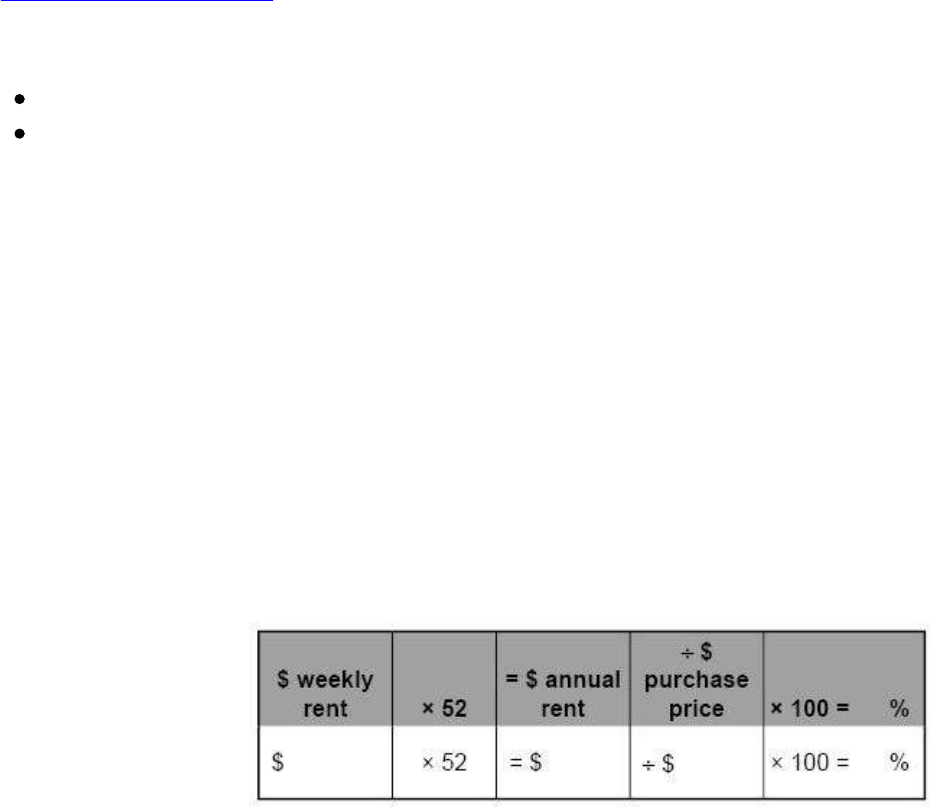
1 Per Cent Rule case study
Let’s put the 1 Per Cent Rule through its paces with a case study. While searching
<www.realestate.com.au> for houses for sale and trying to find something that had all the features I
was looking for, I came across a property in Ipswich, Queensland. It was an inner-city property, near a
university and public transport. The important details were:
rent of $750 per week
asking price of $435 000.
Let’s apply the 1 Per Cent Rule.
Step one: your borrowing rate
I’m going to assume that you can borrow money to purchase real estate at 7 per cent interest.
Step two: add 1 per cent
Your 1 Per Cent Rule would then be 8 per cent, meaning that you are only interested in a deal that has
a return on investment of 8 per cent or more. Anything less than 8 per cent will probably result in a
negative cashflow outcome.
Step three: calculate ROI
Calculate the return on investment by filling in the boxes on the following page.
Your minimum required return should be 8.97 per cent (see the end of the chapter for the completed
calculation).
Step four: comparison
As the return on investment (8.97 per cent) is higher than your 1 Per Cent Rule (8 per cent), this
property is most likely going to have positive cashflow and should be flagged for further
investigation.
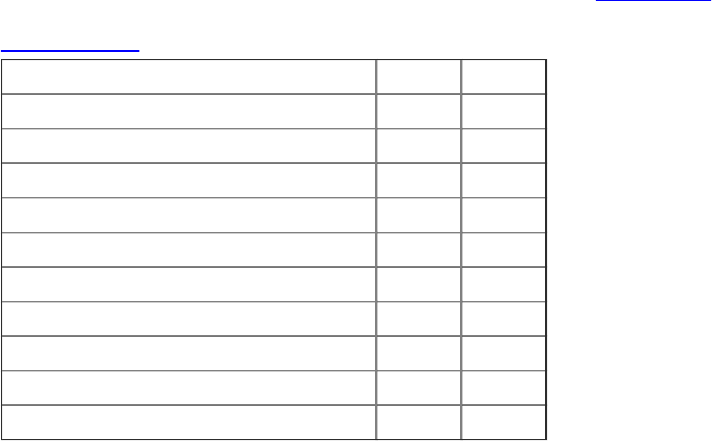
Testing the numbers
To demonstrate that there is likely to be a positive cashflow outcome, here’s how the numbers might
look using the key assumptions behind the model (table 12.1).
Table 12.1: cashflow calculation
Annual rent $39 000
– Expenses
Interest $24 360
80% loan, 7% interest-only repayments
Rental management $2 730
7% of annual rent
Repairs $975
2.5% of annual rent
Other costs $1 950 $30 015
5% of annual rent
= Annual positive cashflow $8 985

How do you use the 1 Per Cent Rule?
The best way to use the new 1 Per Cent Rule is as a ‘first pass’ filtering tool to work out whether a
property warrants further investigation. In particular, I use it when researching on
<www.realestate.com.au> by sourcing deals that have the required information (that is, rent and
purchase price). If I find a potential deal that lacks the required information, I either call the agent or
else do further research on the internet. For example, it is not unusual for the rental figure to be
missing. In this case, I often click the ‘rental’ tab on <www.realestate.com.au> to try to find what
similar properties rent for. Doing this also allows me to test the accuracy of the likely rental figure
provided by the agent.
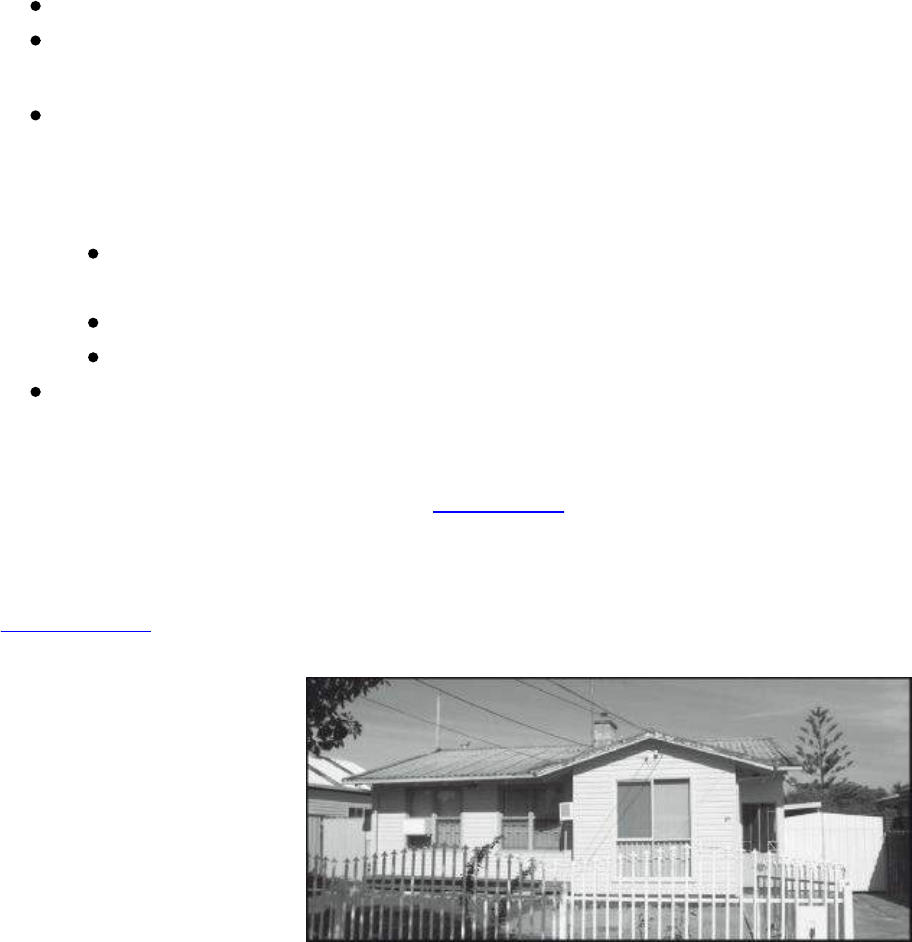
CREATING POSITIVE CASHFLOW PROPERTIES
One day interest rates will increase again, and it will be difficult to buy positive cashflow properties.
When this happens you can still create a positive cashflow property by:
Paying down debt. Reducing debt will decrease the interest and increase your cashflow.
Increasing the rent. Look for ways of increasing the rent using strategies that allow the tenant
better use or enjoyment of the property in return for a financial reward for you.
Using multi-step investment. Instead of buying a positive cashflow property from day one, you
can look to create that outcome by combining other investment strategies to release a lump-sum
gain, and then use that lump-sum gain to pay down debt on the remaining property. For example,
you could:
buy a rental property on a large enough parcel of land to subdivide off a new block at the
rear; then
sell that new block for a lump-sum profit; then
use the profit to pay down the loan on the rental property for a positive cashflow outcome.
Renting out by the room. Renting out individual rooms can give you a higher return than renting
out the property to a single tenant.
David, an investor I’ve trained who lives in Melbourne, bought a cashflow gem. He paid $285 000
for a six-bedroom house (shown in figure 12.4). After converting it to eight bedrooms, he rents the
rooms out for an average total of $700 per week and, once all costs are paid, pockets a very tidy
positive cashflow return of around $600 per month.
Figure 12.4: six-bedroom house
Reproduced with permission from David Solomon.
Before buying, a rental manager appraised the rent at $290 per week if he rented the property to a
single tenant. Clearly the return is much better renting it by the room!

IDENTIFYING THE REAL ASSET
I was taught in accounting school that an asset is something that, when used, generates income.
Furthermore, if you could put an asset in its best operating environment you stood to maximise your
income-earning potential.
That’s great theory as an accountant, but as a property investor I had to learn how to apply this
definition in a practical way. In doing so I made an important discovery that resulted in me
questioning what I’d been taught. The discovery was:
Steve’s investing tip
When it comes to property, the asset definition changes depending on the profit outcome you’re trying to achieve.

Asset definition if you desire capital gains returns
The best way to maximise future capital gains returns is to buy a property with the person who is
going to buy it from you in mind, and then add more perceived value than actual cost to improve the
use or enjoyment of the property for that person. That is, you buy problems, fix them in a cost-
effective way, and then sell the solution to someone who doesn’t know how to or can’t be bothered
fixing the problem themselves.
A great example of this is Martin, a friend of mine who develops property in Adelaide. His niche is
low-cost housing; he buys large blocks of land (sometimes with perfectly good houses on them),
demolishes the house and builds budget homes, which he sells to first home buyers for a healthy
profit. In Martin’s case, the primary asset is the land (as shown in table 12.2).
Table 12.2: the focus of a capital gains investor
Desired outcome Make money via capital gains
Achieved when The property appreciates in value
Strategy for capital appreciation Property investing
Primary asset Land
Secondary asset Building
Ancillary item Tenant
The people buying his homes could purchase the problem block, demolish and rebuild, but they
don’t know how, don’t have the money or can’t be bothered. Instead, they pay a premium for Martin
to solve the problem for them.

Asset definition if you desire positive cashflow returns
A radical change in thought is needed when you’re a positive cashflow investor, because the reliability
of your income stream (and thus your ability to achieve financial independence) depends on the
quality of the tenant you attract.
With cashflow as your focus, the accounting definition needs to be refined so that you recognise the
tenant as the primary asset, the building (where the tenant lives) as the secondary asset and the land
(where the building is located) as the ancillary item (see table 12.3).
Table 12.3: the focus of a positive cashflow investor
Desired outcome Financial independence
Achieved when Passive income is higher than living costs
Strategy for positive cashflow Property investing
Primary asset Tenant
Secondary asset Building
Ancillary item Land
In a practical context, as a positive cashflow investor you don’t care much where the property is
located, so long as:
the numbers stack up and it’s likely that you’ll earn a positive cashflow return
it’s inhabited by a good tenant who regularly pays the rent.

Why you need to choose
Irrespective of which investment outcome you desire, the land, building and tenant are all important
variables upon which your success is dependent. However, you must choose whether you want capital
gains or positive cashflow returns, since your decision will determine which of the three components
is given the majority of your time.
Steve’s investing tip
Investors must choose which is more important — capital gains or positive cashflow returns — and then focus on properties
that deliver the required outcome.
The remainder of this chapter looks at tenants in more detail.
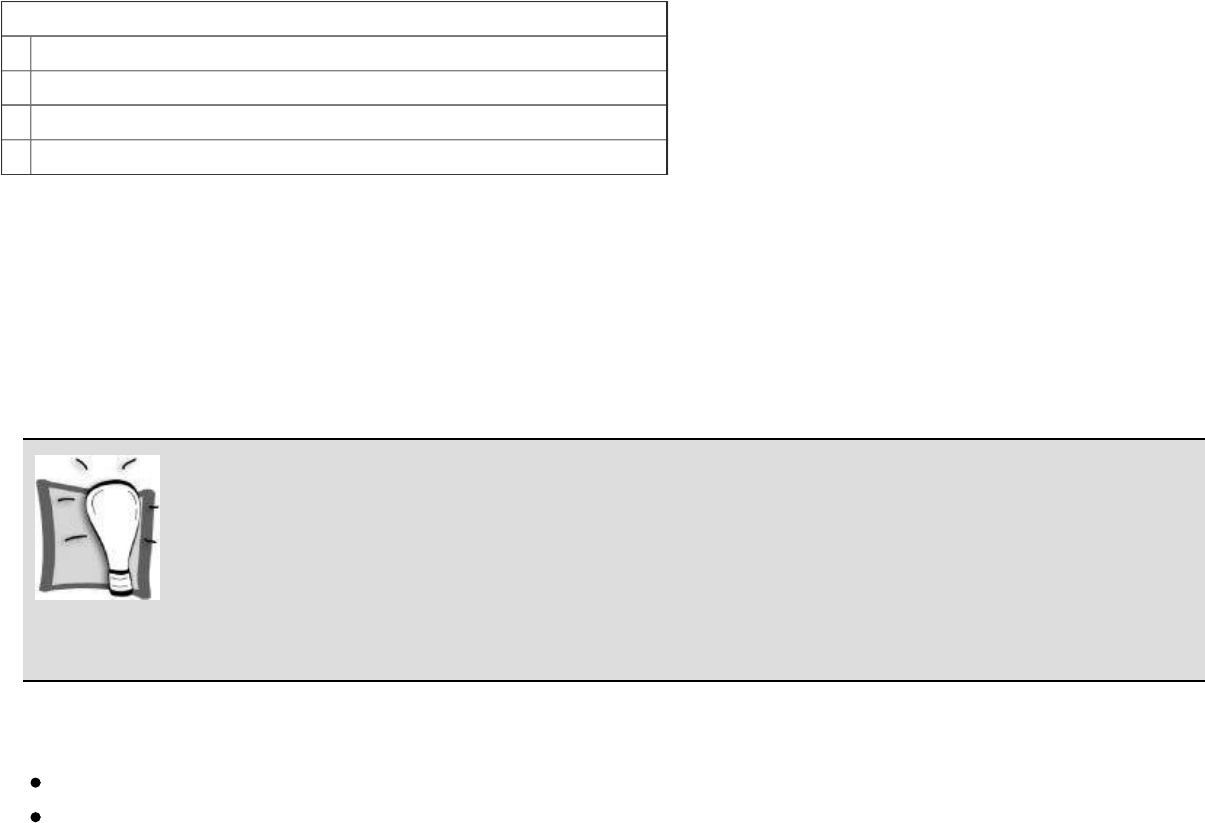
PARTNERS IN WEALTH (THE STEVE MCKNIGHT APPROACH
TO LANDLORDING)
Which of the options below best reflects your opinion?
Multiple choice (circle your answer)
Question: In your opinion, who is doing who a favour?
a) The landlord is doing the tenant a favour by providing a place to live.
b) The tenant is doing the landlord a favour by paying rent.
c) No-one is doing anyone a favour.
d) I don’t know … I just want to keep reading.
Of the people I’ve asked, the majority of those who answered a) had a capital gains focus and saw
the tenant as a means to an end. Those who chose b) were more intent on earning cashflow returns and
viewed the tenant as an investing partner.
I believe it’s the tenant who does the landlord a favour. I could own 1000 properties, but without
reliable tenants providing a regular rental income my goal of financial independence would be little
more than a dream. Don’t get me wrong; the land and building are still important, but they’re not as
important as the source of the cashflow.
Steve’s investing tip
Properties are inanimate objects without bank accounts. Tenants — who are living, breathing humans — are the ones with the
chequebooks.
It would be a mistake to think that all tenants are out to cause mischief. Conscientious renters are
happy to pay their rent on time, provided they can:
have a neat and tidy place to call home
deal with a reasonable landlord.
The big stick approach doesn’t work!
Tenancy laws are written to favour the tenant rather than the landlord. For example, before you can
start proceedings to evict a late-paying tenant in Victoria, you must wait at least 14 days. In other
words, tenants can pay their rent up to two weeks late and there’s precious little you can do about it.
Some landlords jump up and down and threaten their tenants with eviction or other nasty outcomes.
I call this the ‘big stick’ approach — but it’s all bluff because when push comes to shove there’s little
or no backup available from the authorities.
Be very careful with what you threaten to do. Tenants either know their rights or they will quickly
find out. If you break the law, a disgruntled tenant may make it his or her mission to cause you
maximum pain.

* * * Free Preview End * * *
Purchase Required To Gain Total Access
Visit www.landlordleaseforms.com To Purchase Landlord Lease Forms Package



